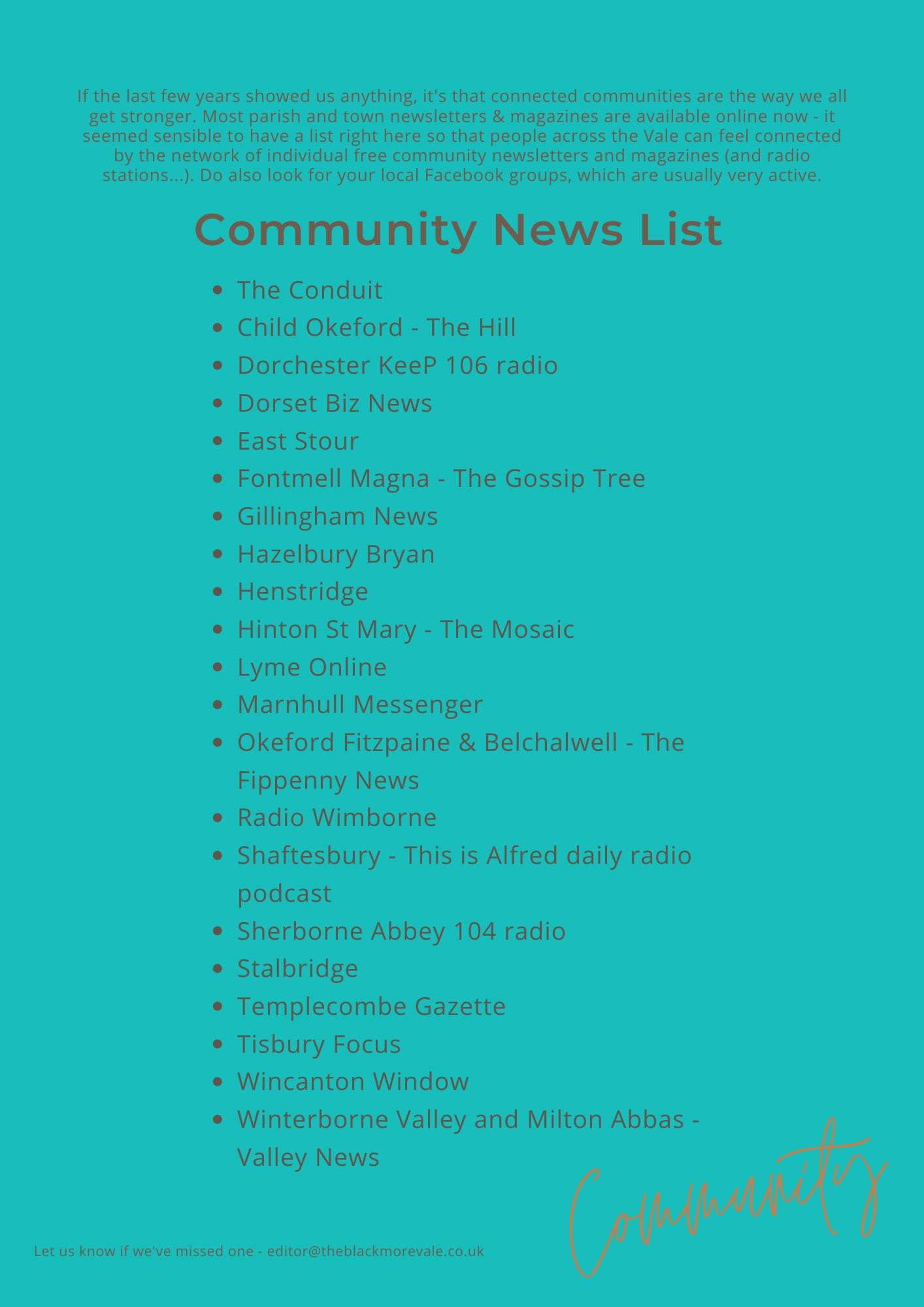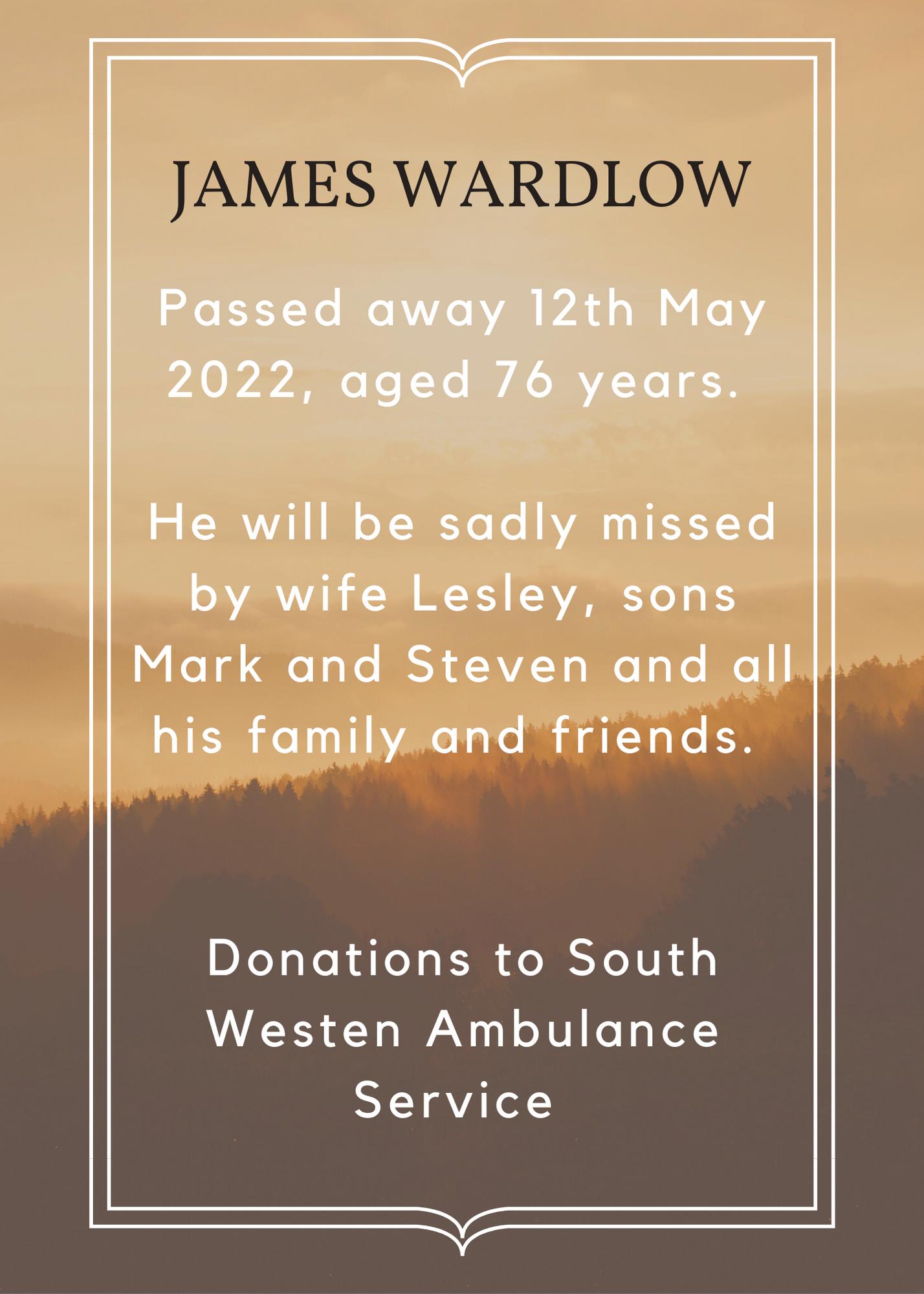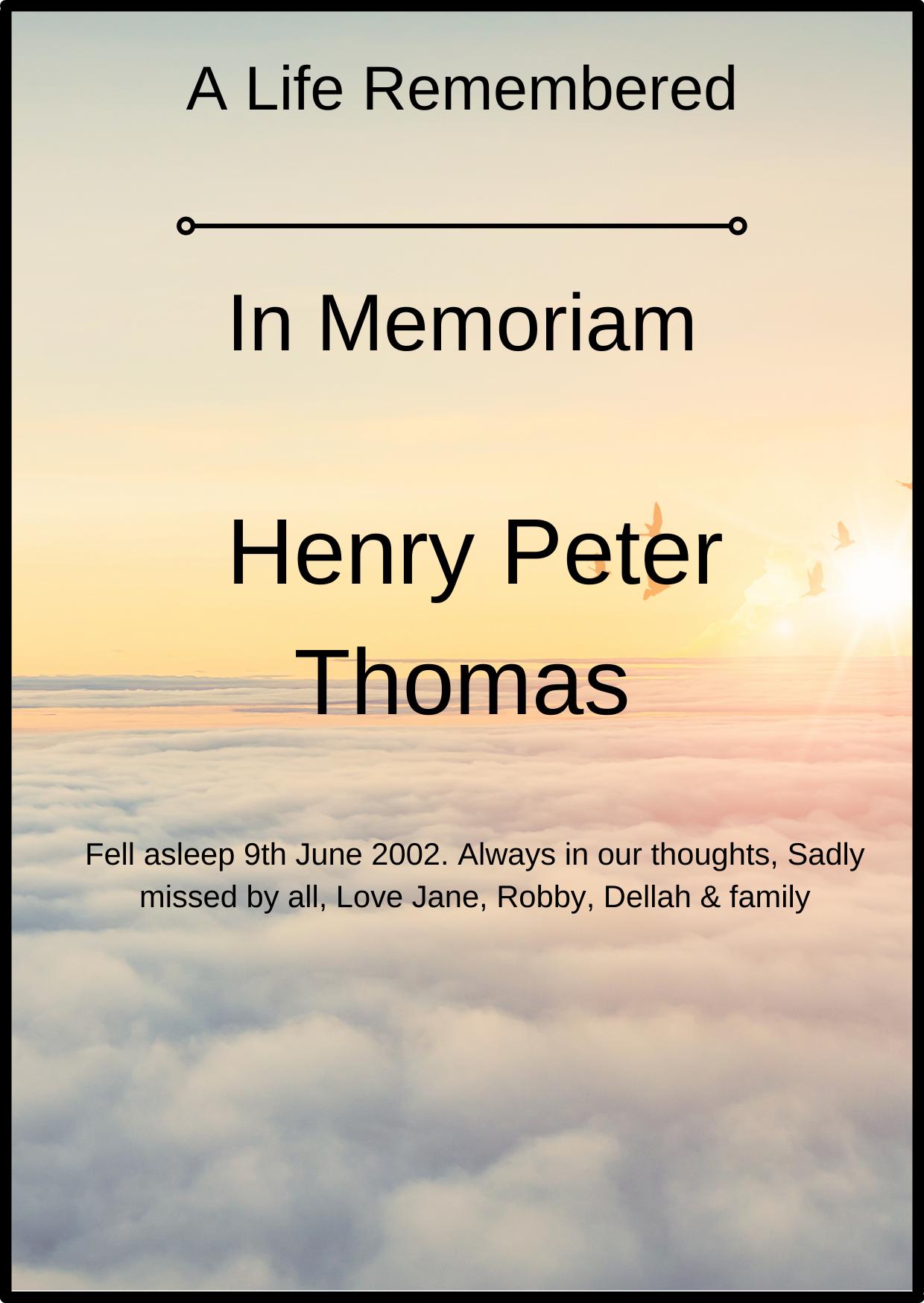


Supercars in Iwerne Minster- p.10
One local teenager’s meet-up attracted 120 supercars (worth £120,000 to £1.2m!). Rachael Rowe spoke to 18 year old Zander, who’s working with Clayesmore on a Classic and Supercar Sunday event





One local teenager’s meet-up attracted 120 supercars (worth £120,000 to £1.2m!). Rachael Rowe spoke to 18 year old Zander, who’s working with Clayesmore on a Classic and Supercar Sunday event

Adrian and Marie Fisher have opened their home to three generations of one Ukrainian family - with no shared language, they play card games, explore Dorset, and Adrian discusses how Liliia and Iryna are not here for a holiday.

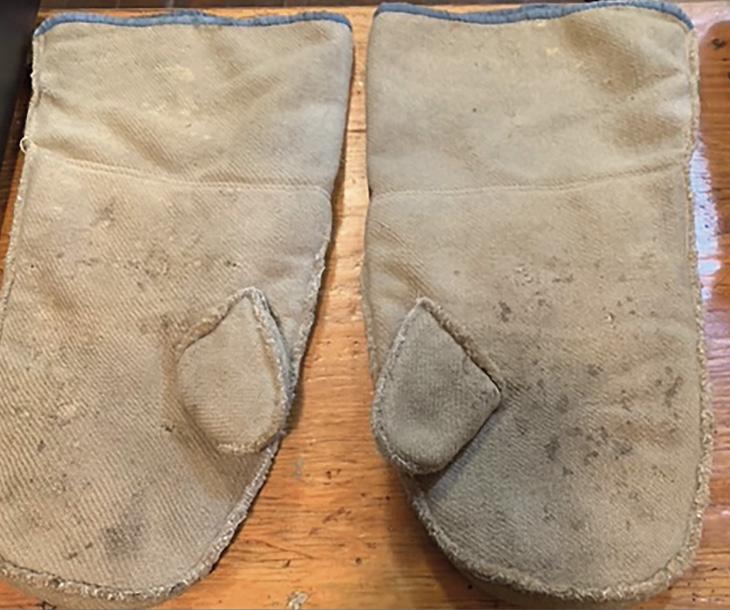
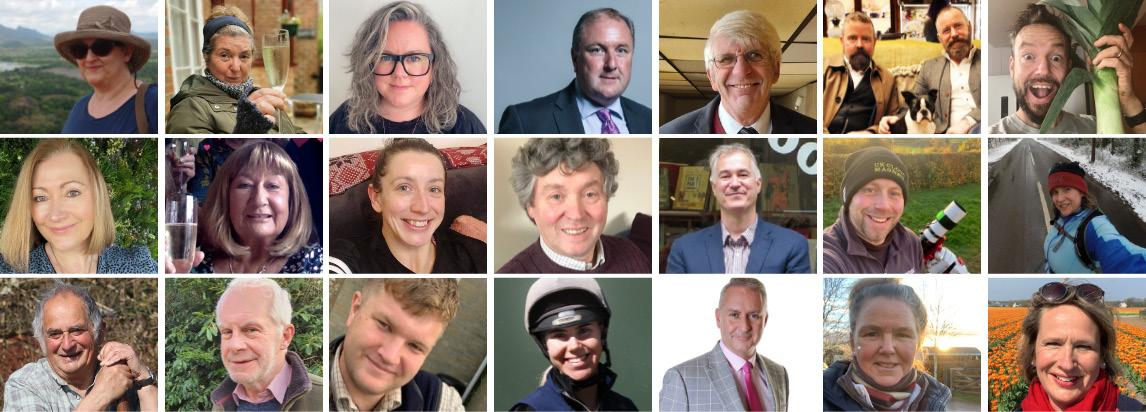
Tom Robinson, songwriter and broadcaster, will be at The Exchange later this month. Editor Laura Hitchcock spoke to him about his 50-year career as a musician, as a broadcaster and as an activist.



With 70 per cent of the immune system in the gut, there are foods that can help allergies, says nutritional therapist Karen Geary
Bestselling author, including Mr Rosenblum’s List (set in Dorset) and The Novel in the Viola, which was chosen for the Richard & Judy Book Club. Her latest book, I, Mona Lisa, is just out in paperback. She finds life frankly a mystery “I just thud from one corner to the next, mostly wondering how I got here.”

Contact
and beautiful – as usual –

online gossip snippets about who was attending and where they were standing.

the parades, admired the Queen, and switched off the inane gossip. But this evening, as beacons were being lit, we downed tools and took the teenagers out to participate in what will surely not happen again in their lifetimes. There was something oddly moving about the noisy, happy community which had gathered around the beacon. Whether it was a fire basket on a pole, or a huge community bonfire roaring on the top of Hambledon Hill, it is a tradition so old it feels instinctive, this celebratory gathering around a fire.
I was oddly and unexpectedly moved to see neighbouring beacons on surrounding hilltops, sensing rather than seeing the onward chain of fires stretching across the country, each of which I knew would be similarly surrounded by its own local community. It feels good to be part of something - to be connected. We lose it, often, in our perennially busy modern lives.
I cannot imagine doing this – or any – job in seventy years time. To be fair, I’m far too old to make a start at that sort of figure now (I was, however, very young when we married, so I do have impressive wedding anniversary stats if that counts?). But the strength and identity that seventy years of quiet stability have given to us as a country shouldn’t be under-estimated.
I remember being baffled when Margaret Thatcher was no longer Prime Minister. I didn’t remember ever having anyone else in charge, and I was rather unsettled that it apparently wasn’t a permanent thing, like your headteacher or Mrs Kitts in the corner shop. They’re just ‘there’. Always. Whether you are a royalist or not, anyone doing a job with grace and commitment for seventy years deserves a party.
Adrian and Marie Fisher in Durweston have welcomed three generations of one Ukrainian family. Adrian shares how they are settling into life in Dorset

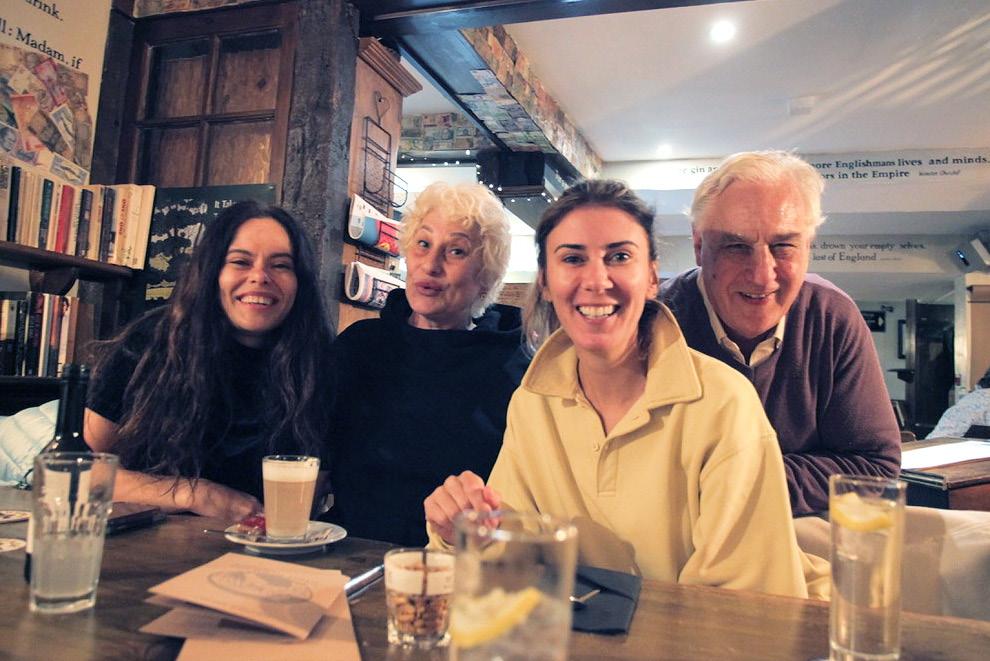
This spring saw Ukrainian families begin to arrive in large numbers to the UK, fleeing from their war-torn country, and adding a new and unfolding chapter to the history of our county. A family of three –grandmother Liliia is 59, Iryna is 32 and her son Damir is 10 – have been living with us since April. Every day that passes sees new accomplishments, as they establish their lives here in North Dorset.
They are gaining increased mastery of English, making progress at Durweston School and weaving through the byzantine bureaucracy that was never designed with ease of use and swiftness of effective action in mind. There is the shared support network of a dozen host families and their respective dozen Ukrainian families who manage
get-togethers in the district every week. Somehow, nothing really matters compared with packing a bag at an hour’s notice with just three changes of clothes, leaving everything else in your life behind.
In response to the Ukrainian crisis, so many people across our villages are stepping up to host
a family, simply because it’s the right thing to do.
Some things have worked out well, such as playing cards together, and trips to Poole Quay, Weymouth and the Jurassic Coast. All are relaxing ways of simply getting to know each other.
Google Translate was brilliant at the start, though now we are encouraging them all to use it less and try to converse in spoken English more. English lessons are also helping so much.
There are harsh realities in their experiences. Some mothers got out of Ukraine with their children on the day the invasion began, determined that their children should never see or experience atrocities which would scar them mentally for life. They were so wise. Weeks later, women now crossing
...both men receive only €15 a month and they are eating canned dog food to feed themselvesA spring walk near Tollard Royal with grandmother Liliia, Damir (aged 10) and his mother Iryna from Ukraine, and their English host Marie Fisher. An early visit to the White Horse pub in Stourpaine. Iryna and Liliia from Ukraine, with Becky Waker and Adrian Fisher, their hosts in Durweston.
into Romania are describing their single worst shared reality – the rape of mothers, daughters and even young sons. They are so traumatised.
Our own Ukrainian family announced as soon as they arrived that they were not here for a holiday. They need to work, to earn money and send it back to Ukraine for Liliia’s husband and his brother. Her husband was a manager at a brick factory. The factory has been destroyed, the company ceased to exist, and his job, income and prospects have vanished. Instead, his skills are put to use organising military logistics. Serving as volunteers, both men receive only €15 a month while the cost of food has doubled (that’s if it is available), and they are eating canned dog food to feed themselves.
Every day that they manage to speak, they know their loved ones are still alive.
Our Ukrainian family did not wish to come to England under such circumstances. They are decent and hard-working people. Like them, we are living each day at a time. That’s all any of us can do.
1. Support the Blandford Welcome Group (BWG), whose latest initiative is their “Fundraising with Art Event”. See the website: www.blandfordwelcome.group
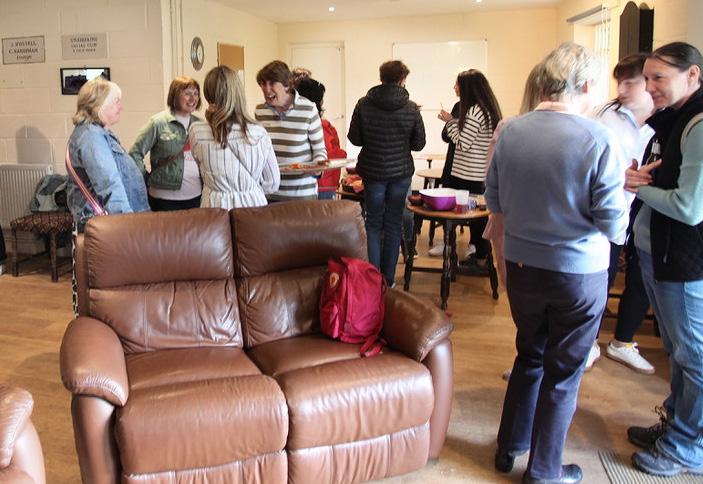
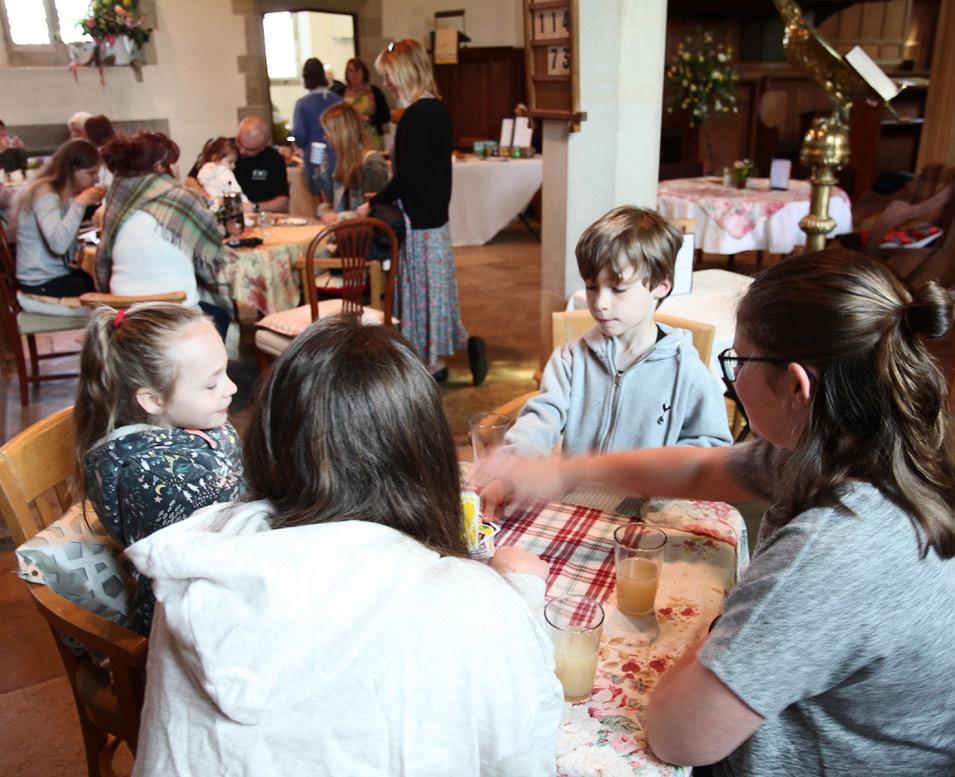
2. Buy a raffle ticket in the Fundraising with Art Event, with a special exhibition in September when everyone gets to take a piece of art home. Contact Chrissie Anderson on music39uk@ gmail.com, or Marie Fisher on marie@ adrianfisherdesign.com
3. As an artist, pledge to create a work of art for the Fundraising with Art Event. Then create it by 15 July 2022. Again, please contact Chrissie Anderson or Marie Fisher.
4. Offer to host a Ukrainian family. See the website: www.ukrainedorset.org
5. Order copies of “Blue and Yellow - Hope for Ukraine” colouring book; to sell through your organisation (minimum batch one carton), to enable free copies to be distributed to Ukrainian refugees in Eastern Europe. Contact Adrian Fisher on adrian@adrianfisherdesign.com
6. Donations are always welcome, to provide
A get-together on 20th May at The Hub, provided by the village of Stourpaine as a meeting place for Ukrainian families in the district. There have also been social occasions such as a barbecue at a host’s home in Stourpaine, where host families exchanged ideas and their Ukrainian families got to know each other.
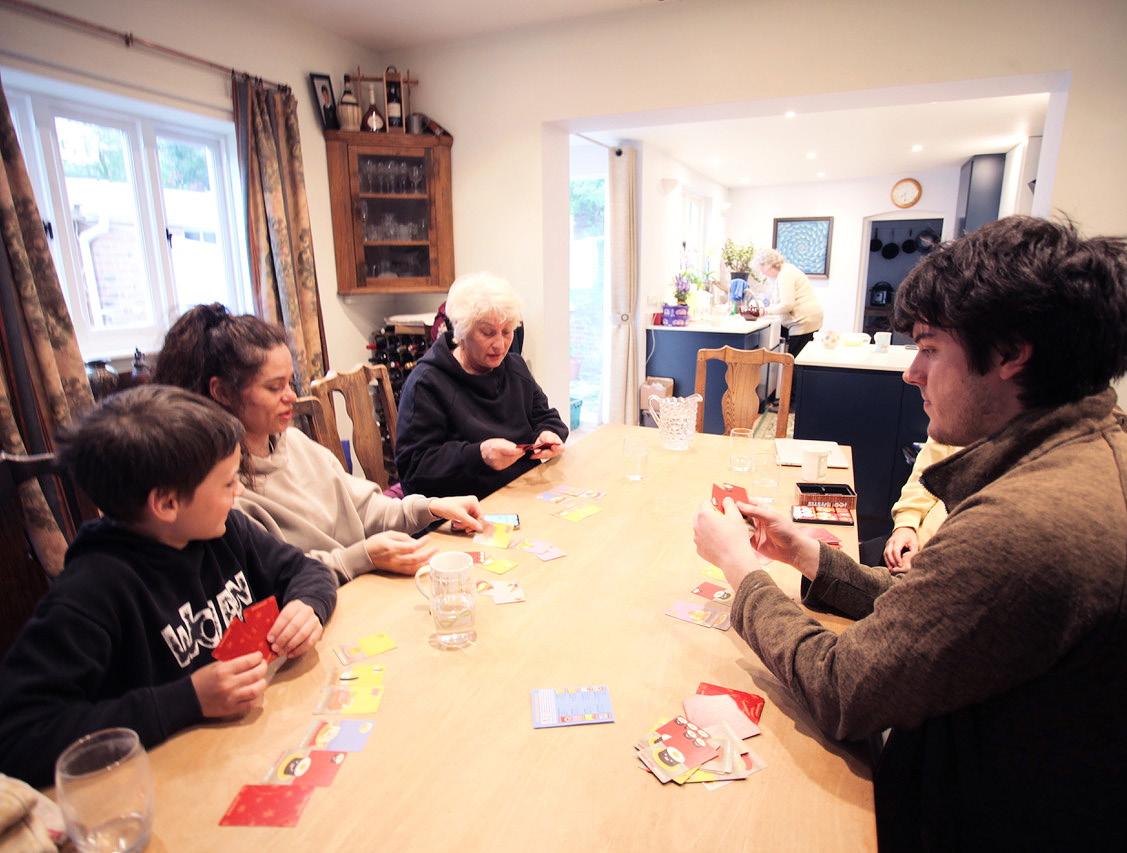
more help for refugees.
7. Generosity in kind is also most effective - from a donated kid’s bike or unused computer to smart women’s clothes. Typically each refugee only arrived with one suitcase. Please ask!
Kingston Maurward College (KMC) was celebrating last week, winning a Silver Gilt medal at the prestigious RHS Chelsea Flower Show. Their garden The Space Within was entered in the Sanctuary category and was designed to provide a nurturing and calming space in which to relax and unwind.


College Principal Luke Rake said: “This is the second Silver Gilt that the college has won for a garden, something no other college has ever achieved. It’s the second highest possible award and is a fabulous outcome for everyone here –and for Dorset.”
KMC is one of the UK’s few land-based colleges, providing education and training in agriculture, land and animal sciences– the skills needed for rural economies. The garden was designed by exKMC graduate Michelle Brown. It was completed as a team effort by staff and students, said Luke Rake: “More than 100 people were involved in the creation, from welding and blacksmithing to countryside and horticulture specialists, all pulling together to create
“I’m so proud of them, it’s a genuinely world-class performance and it was a real privilege to be able to see the garden in situ after all the hard work.”
The Space Within The garden contains a contemporary arch providing an entrance to a secret jungle of foliage planting inspired by the sub-tropical gardens of the Mediterranean and punctuated by specimen architectural plants and trees.
a daybed platform where the visitor can rest, totally immersed in plants. The asymmetric social platform and seating is inspired by childhood den-making and entices the visitor with its playful shape. The sanctuary boundaries are created as wildlife habitats, using fallen trees and waste timber to enclose the space.
If you’d like a glimpse inside the garden, it was on the BBC’s Chelsea show - click play below left and skip forward exactly 30 minutes







Audrey Burch smiles as she describes the arrival of her Ukrainian guests from Kirvog Rog, west of Dnipro. It took 15 hours for them to travel between Dnipro and Lviv, and then on to Slovakia. From there they got a flight to Luton, where Audrey’s husband met them.
“And it took four hours of us working on WhatsApp to fill out the visa application!”
After the arduous journey, Katya and her two sons are settling into the Burch home in Milton Abbas.
Katya’s husband has remained in Ukraine as he works in a steelworks, which is critical to the war effort.
The Ukrainian family aren’t the first refugees Audrey has helped. She is working with the Blandford Welcome Group, a committee established to support one family as part of the government’s Community Sponsorship Scheme for refugees.

Taking one family at a time, they help them to resettle and build a future in the town.
“We must raise £20,000 through fundraising, and we must also have a suitable property. Our guest family is classed as highly vulnerable and selected by the Home Office from a United Nations security camp (UNHCR).
We have a three-bedroomed house in Blandford. Everything is vetted by the Home Office. We receive a family, welcome them as a community and help them to be independent. Blandford School has been fantastic.
“We had a Syrian family who stayed for 18 months – now the father has a job in Bournemouth and is settling there. ”
I asked Audrey what it is about refugee work that interests her.
“We hear so much about people who have been pushed away from their homes. To me, a refugee hasn’t got a chance. So many of the problems in this country have been about economic migrants whose own governments have failed them.
“During the war, my father was a refugee from Poland. He came to this country. My grandfather was killed by the Germans. When the Red Army arrived, my father had to leave Poland. So when I hear the news, there are echoes of what my father went through in 1939. And it’s not the Russian language but the language of Communism at fault.”
Unlike refugees from the Middle East and Afghanistan, who have settled mainly in urban areas, many Ukrainians are requesting to go to rural counties.
According to Government statistics Somerset, Dorset, Devon and Cornwall are some of the most popular areas in England where people from Ukraine are choosing to live. They also have some of the highest numbers of hosts offering accommodation in the country – more than 700 people are expected in Dorset in the coming weeks. Audrey’s
one of several families hosting Ukrainian refugees in North Dorset. She describes how the whole community is helping:
“We looked for a school for the eldest boy, age 15. Do you know, Milton Abbey scooped him up. They gave him a uniform and laptop and he has been there for two weeks. He is being looked after by them and has two tutors. But, of course, they have small classes, which makes a difference. He speaks English and translates for his mother. And the youngest boy (age seven) goes to school in Winterborne Kingston. It is important he settles. Children in Ukraine start school at a later age than we do in England.
“In Winterborne Stickland, they had a flag-raising ceremony. There are three families there. One of the refugees, a woman, has already set up her own business.”
The fundraising continues with Audrey organising a raffle of paintings. “We have 100 paintings, and people can spend £10 on a ticket. So they will either get a terrific painting, or they might get a bloody awful one.”
To find out more about the Blandford Welcome Group, visit their website at blandfordwelcome.group
A local committee has been quietly working to help settle refugees – one family at a time – from all parts of the globe, reports Rachael RoweAudrey Burch is working with the Blandford Welcome Group as part of the government’s Community Sponsorship Scheme for refugees. Image: Rachael Rowe



A student from Clayesmore School has surprised and captivated supercar owners with his creative meet-ups. Rachael Rowe reports
At his last event, 18 year old Zander attracted over 120 cars, with values between £120,000 and £1.2 million
Eighteen year old Zander Miller has been interested in supercars for a long time. “From a young age, I watched Top Gear and then got fascinated by photography. Through my photographs of the supercars, I developed a social media presence and got chatting with some of the owners. I have spent the last year getting facts together and officially starting a company.”
Zander started with a meet up for supercar owners in November last year. “The first meet up was for owners only and was a real eye-opener. Forty cars turned up, which was unusual as a lot get put away for the winter. People started talking to each other about their cars, and it was a lovely day. Some of them hadn’t met each other before.”
I’m wondering how these supercar owners reacted when they found out who had organised the meet-up, as Zander is still at school. Zander smiles: “My dad took me to the first meet
up and all these owners went up to him asking if he was Zander, so he said ‘no, I’m just the taxi driver! You want Zander – he’s over there!’.”
Bigger and better The next meeting was a more significant event with more than 120 cars attending with values

between £120,000 and £1.2 million. It was also opened up to the public with food stands available. Zander clearly knows how to attract the cars!
“Some of my friends came, and they were impressed. One of my friends turned up with his dad, who has a supercar and he was amazed at the turnout.”
Most of the owners are happy to talk to people about their cars. One lets people sit in his Ferrari, for example.
“I have spoken to all the owners, either in person or online. My contacts portfolio is extraordinary. I have been able to talk to them about how they made their money to buy the cars, with a lot of people investing or making it through property. Although it is free to meet up at the moment, I’m looking at ways to develop the business.”
For those of us who associate a supercar with a certain type of individual in Central London, Zander is keen to dispel that myth. “There is a minority of people out there who are arrogant, but most people are very down to earth and happy to show their success.”

I’m interested in what Zander currently drives (I’m curious about the insurance premium).
“A Skoda Citigo – I’d like a Lamborghini.”
And what do his parents think?
“They’re really supportive, and they’re proud of me too. Mum and Dad came to both events.”
So what are the next steps for Zander? “I’m off to Bournemouth University to study business management, and after uni who knows. I’ll
also be looking at making my business succeed.”
Clayesmore has taken an interest in Zander’s entrepreneurship. The school is supporting him to host a Classic and Supercar Sunday event at Iwerne Minster in August. Already the event has attracted the interest of local companies like the Haynes Museum. Headteacher Jo Thomson said: “We are very proud to celebrate Zander’s entrepreneurship and lend our support and stunning grounds to launch this inaugural Classic and Supercar Sunday event at Clayesmore.

“Working with a student on a stand-alone event is not something that’s happened at Clayesmore before, but when we realised the scale of the
network Zander has built in the supercar world, we jumped at the chance to collaborate with him. He has a bright future ahead, and we hope he will come back in years to come and mentor other Clayesmore pupils. We can’t wait to welcome visitors to Clayesmore to see magnificent cars and soak up the atmosphere in our glorious grounds.”
The Classic and Supercar Sunday event is at Clayesmore School on 14 August.

For further information on the event, please contact the Clayesmore commercial team on 01747 813240
If you would like to exhibit your classic or super car, please register here: classicandsupercarsunday
In October last year, Ben Varney (22) received a request through the online freelance marketplace Fiverr for a song for a client in Japan:
“He provided a beat for me to rap to, and asked me to make a UFC-style video game fighting song. I wrote and recorded the song in about an hour. The client was happy, paid me £120, and I forgot about it.”
Ben lives with his parents in the tiny hamlet of Bagber near Sturminster Newton, the birthplace of Dorset dialect poet William Barnes (180186). Currently studying for his Master’s at Bath University, like most students, Ben supplements his income. Along with bar work at Plumber Manor, he sells his abilities as a rapper on Fiverr. Taking commissions through the online marketplace, Ben records at home with a microphone attached to a kitchen table.
Last month, Ben saw that forgotten song begin to appear in his ‘top songs’ online. Unsure how, he searched for it on YouTube and came up with Ready For The War JONAH (play the video below).


“I was shocked to see it had
over 35,000 views – but that it had been posted without my name and, on top of that, on the New Japan Pro-Wrestling channel, a professional wrestling organisation. To be honest, I usually only get about ten views, half of which are my gran.
“From here I found my track was the official song for a professional Australian professional wrestler named JONAH. He uses it for every live bout entrance and exit, as well as in any match held by the US wrestling organisation IMPACT. The song can be heard playing in wrestling arenas in the US (I’ve been played in Las Vegas!), Australia, Japan and more; some of the videos have upwards of 300,000 views.
“It was amazing to find that my voice has been played in arenas all over the world, especially as I had no idea what the song was going to be used for.”
And how much more did Ben make from the song – was it a lucrative deal for the useage on such a huge worldwide stage?
“No, nothing – just that initial £120! Apparently my original client worked for New Japan Pro-Wrestling. I did have in the contract that I should at least be credited wherever the music was used, but my client then handed the song rights to the wrestler in question, so it all gets very muddy.”
You can follow Ben and hear more of his music on his Instagram account

Could dialect poet William Barnes have imagined that 220 years later another poet from the same hamlet would create a song heard across the world?@BenVarneyOfficial Ben Varney records at home with a microphone attached to the kitchen table. From Bagber to the world –Ben relaxes by the river.
The Blandford U9 Wildcats sealed the inaugural Dorset Youth League Cup trophy for Under Nine’s girls football in May in a truly remarkable game at The Blandford School.

The girls were 4-1 behind their opponents, the strong Redlands Rebels U9 Girls, after a nervous first half. IN the second half they fought back to a 4-4 draw at full time. Extra time lead to a 6-5 win to Blandford!
There was strong support for both teams, with more than 250 people attended the cup final –an astonishingly big crowd for a match which traditionally only draws the family of the players. Manager Dan Cullen saud “The memories of today will outlive the trophies, and the crowd and roars of support meant more to the team than winning.”
Life doesn’t stand still. Some events you can predict, plot and carefully plan for. Others come out of the blue and send you reeling. Whatever you’re facing, we’re here to help.
Call us on 01722 398137.


It was 1977 when 2-4-6-8 Motorway became one of the landmark singles of the UK punk era. Other hits by the Tom Robinson Band included Glad to be Gay, Up Against the Wall and Power in the Darkness, which went gold in the UK. As a solo artist, he had further hits with War Baby and Listen to the Radio and co-wrote songs with Peter Gabriel and Elton John.

As a radio broadcaster Tom has been introducing new artists to the UK audience for the past two decades, sharing them on his Sunday night Introducing Mixtape show.
I asked Tom whether his heart lies in touring or in his radio show.
“The radio show was a godsend when it came along in my early 50s. I’d been a working musician for the best part of 40 years, and it was getting tiring! So the radio show was just at the
right time and ensured I knew where the next crust was coming from – that I slept in my own bed and actually saw my kids grow up. But then it’s been really nice coming back out of retirement and strutting the boards again. Really I get the best of both worlds.”
Small but perfectly formed So why now think: “hmmm, as I reach 70, now is a great time to head back out and work long hours for weeks in a row”?
“Ha! Gratification! People still remember the songs that I wrote all those years ago, and an astonishing number of them know the ones I wrote more recently. There’s a small but perfectly formed audience, and it’s enough to fill a venue.
“At 72, still to be able to strap on a Fender bass guitar and throw shapes on a stage, pose in the
lights and play with some great musicians? Why wouldn’t I?
“I get to play with top-level musicians who are 20 years younger than me, and it keeps me on my toes. We do it because we love it. And when people sing along to what you’ve written, 40 years later, it’s definitely something.”
And does he mind the repeated requests for 2-4-6-8 Motorway?
“Oh, no, au contraire! If it wasn’t for that song I wouldn’t be talking to you now! The great advantage of only having half a dozen songs that everybody knows is that there’s plenty of scope in a show to play loads of other stuff – I just don’t have the enormous back catalogue of hits like Elvis Costello and other contemporaries of mine. So we can play all the favourites, and everybody’s happy, but I have latitude to do some interesting new stuff too.”
And alongside the music, Tom’s career has really moulded around introducing new artists?
At 72, to still be able to strap on a Fender bass guitar and throw shapes on a stage, pose in the lights, and play with some great musicians? Why wouldn’t I?
“Absolutely! Actually I’ve had a great time on this tour asking my favourites to be my guests and open the shows. A lot are completely under the radar artists. It means I get to see them play live and they get to play to an audience that doesn’t know their work. My favourite on the last tour was a 14 year old from East Sussex. She first sent me a record at the age of 11 that she’d made at home with her dad. It was stunningly good. Really radical and spiky. When we played Brighton I asked if she fancied playing a few songs, and it turned out she’d never played live for an audience before. Her very first gig was opening for us at the age of 14 in Brighton!
“And she was brilliant – the audience went crazy. Talent is talent, it doesn’t matter how old or young. She’s probably the youngest I’ve ever played on the show, and the oldest was Peggy Seeger, who sent a new song to BBC Introducing, as if she were a new unknown artist – at the age of 86. And it was brilliant!
All that matters is what comes out of the speakers.”
I’m presuming the entire industry has flipped on its head since Tom started, compared with how people access music now?
“The key word there is industry. We always thought of ‘music’ and ‘the industry’ as synonymous.
But the older I get the more I see that the industry exists simply to extract money between the creator and consumer. That’s why we have record companies, publishers, managers, touring companies, rehearsal space managers … endless people all creaming off their five per cent.
“It is interesting that creators are now bypassing all that and going direct to the consumers. I see folk bands with a mailing list of a couple of thousand followers, and they’re making a great living off that – because no one else is taking overheads. So if someone
is willing to spend £100 a year on tickets, an album, a tee and what-have-you? Multiply that by a thousand, and that’s giving up the day job and making music full time. On a very small audience. You no longer have to have a big industry behind you, to be on Radio 1 and play Glastonbury with an audience that loves what you do. ‘Unsigned’ used to be a demeaning term. But there’s no shame at all in being unsigned – now we call them independent artists, and they just don’t wait for permission to be musicians anymore.
So – campaigner or musician, which is your legacy?
“I never got into music to politically campaign for LGBT rights or racial equality. I was just keen to use any platform I had. It has to be music first and foremost. Because unless you’re
making music people love, no one gives a toss about your political views or campaigns. Nobody buys your records because they agree with your politics. Glad to be Gay didn’t change attitudes, it was the audiences that used to sing it together that went home and talked and argued with friends and family that did that. I don’t believe music has the power to change minds – I don’t think a single National Front skinhead showed up at one of our shows and said ‘Oh, I’m so stupid, I’ve seen the error of my ways’. But sharing the music with a big crowd does reinforce a message in a mind that is ready for it.”
Tom Robinson is appearing at the Exchange in Sturminster Newton on 24th June, a full band show ahead of their Glastonbury set next day Tickets are £22 here.

Unsigned used to be a demeaning term. But there’s no shame at all in being unsigned – now we call them independent artists
Sophia began weaving willow when she was nursing her dying mother. Her daughter’s birth coinciding with another family death caused a major re-think in her priorities, and Sophia set out to master willow coffin making.

In a remote barn in Dorset, with pigeons and podcasts for company, Sophia Campbell is quietly revolutionising funerals with her reusable coffins and environmentally-friendly farewells, Tracie Beardsley reports
As we talk, Sophia is creating a beautiful willow coffin for a man whose photo is propped nearby – families send pictures of loved ones so she gets an idea of the character for whom she’s creating a coffin.
‘Cradle to grave’ has never felt more apt – the design is an adult Moses basket. Unlike the dread that fills me from a traditional coffin, I’m happy to run my hands over the smooth weave, finding it comforting to the touch. Rustic hemp ropes replace cold metallic handles.
There’s understated cotton lining inside – no gaudy satin in sight! The weave is so tight you can’t see through the willow and these fragile-looking
coffins will hold up to 23 stone. Sophia’s business was born out of bereavement. She’d begun weaving willow when she was nursing her dying mother, who died when Sophia was 22. She continued weaving, finding ‘great bereavement therapy’ and began to sell baskets as a sideline.

Then life threw her joy and tragedy. Eight weeks after the birth of her first child, Ava, Sophia’s 26 year old sister, Anna, was killed in action in Syria.
“I had this incredible experience of my life being thrown up into the air – becoming a mum and losing another family member. It took me a while to percolate my emotions, but I came away
with a better awareness of the preciousness and the sheer transience of life, prompting me to reset my goals.”
With ten-month Ava in a sling on her back, Sophia mastered willow coffin making and launched Woven Farewell four years ago. Now her second child, one-year old son Idris, sits on her back as she works.
True sustainability Sophia’s environmental ethos is impressive. This is no ‘greenwashing’ but a true commitment to a greener footprint in an industry that is highly polluting. The willow is grown just down the road in Somerset, wood for the base slats comes from Bridport’s Eggardon Saw Mill and biodegradable plastic or organic cotton is used for the lining. All coffins are
Unlike the dread that fills me from a traditional coffin, I’m happy to run my hands over the smooth weave, finding it comforting to the touch.

Sophia gave birth to her first child Ava, and only eight weeks later her 26-year-old sister Anna was killed in action in Syria.Image: Courtenay Hitchcock
biodegradable, releasing no harmful gases during cremation. Sophia even donates five per cent of her business profits to the Woodland Trust. She says: “I’m genuine in my sustainability policy. My philosophy is very much that life and death are
doesn’t touch the sides of the rental coffin at all.
“We don’t have this culture in the UK. It requires a mindshift on a taboo subject, as well as greater awareness of hygiene standards and how the
aesthetics work – so people feel they can trust something new. “ Willow coffins are made with one continuous panel so can’t be reused … yet! Sophia is designing one with a collapsible willow foot panel that she
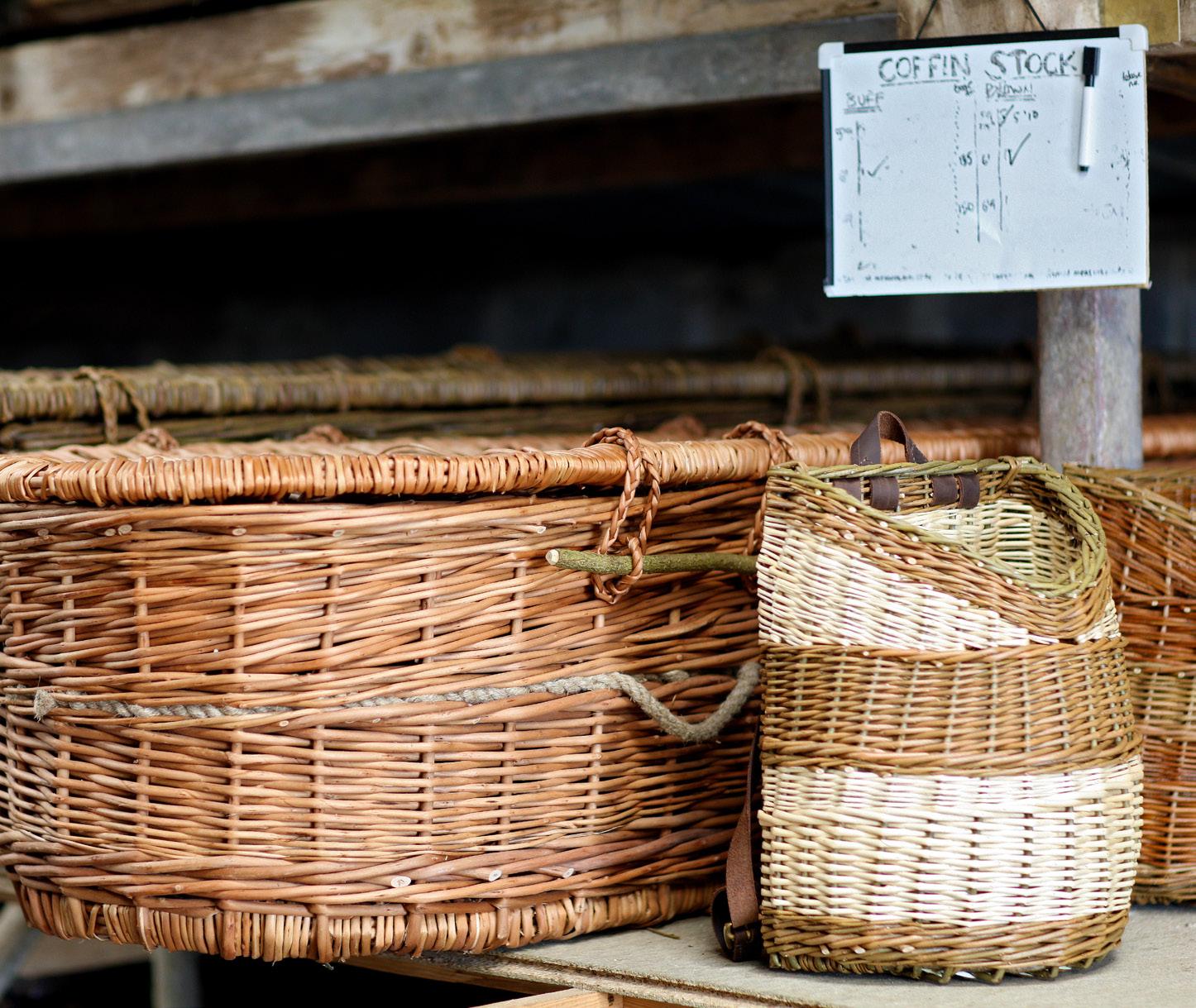
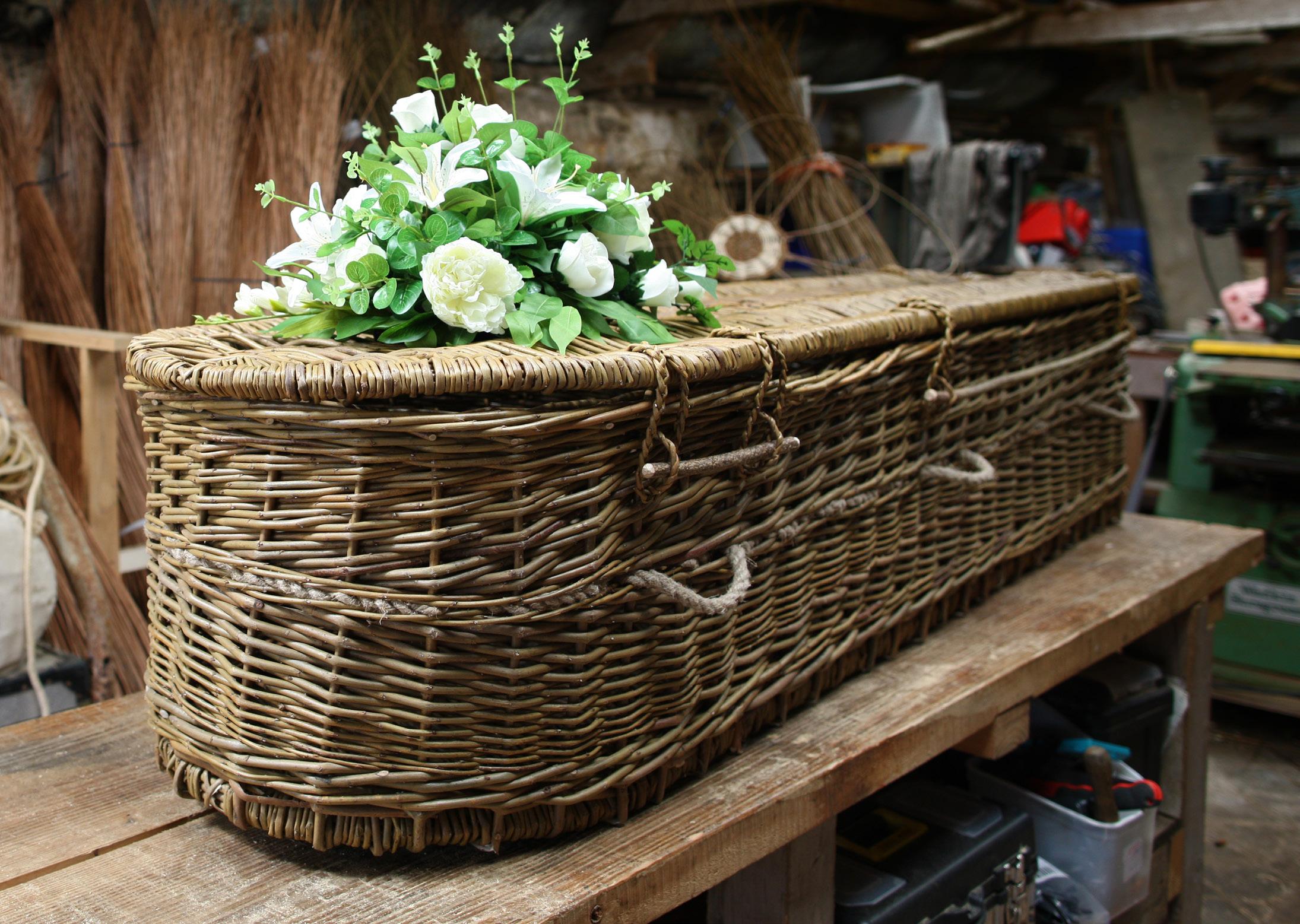
In 2020, UK cremations generated more than 80,000 tomes of carbon emissions.Three million single-use plastic coffin handles are used every year.
simply part of the same coin.’’
Added to this is what Sophia describes as “a twin funnelling of a cost-of-living crisis and the climate crisis. Funerals are neither cheap nor ‘green’.
“In America, rental coffins are a lot more mainstream. There’s a panel at the end of the coffin which folds down and the coffin liner slides in and out, so it’s very hygienic. The deceased
...a twin funnelling of a cost-of-living crisis and the climate crisis. Funerals are neither cheap nor ‘green’Image: Courtenay Hitchcock
aims to test with local funeral businesses – probably the first of its kind in the world. She’s also working on a willow canopy to go over a cardboard coffin so that it can be lifted off and reused many times.
Sophia welcomes bereaved families to her workshop and
Shared by Sophia on social media was the story of one family gathering to help with weaving their father’s coffin. Sophia wrote: “One of the most special parts of what I do is that I get to give folks the opportunity to not only help weave their loved one’s coffin, but to come together as family and friends over that process. We drank tea, ate cake, whacked willow, spoke and listened. All the simple things really.”
The family commented: “It felt good to be part of this very intimate final process of saying goodbye to Dad.”
they can even get involved in the making of the willow coffin.
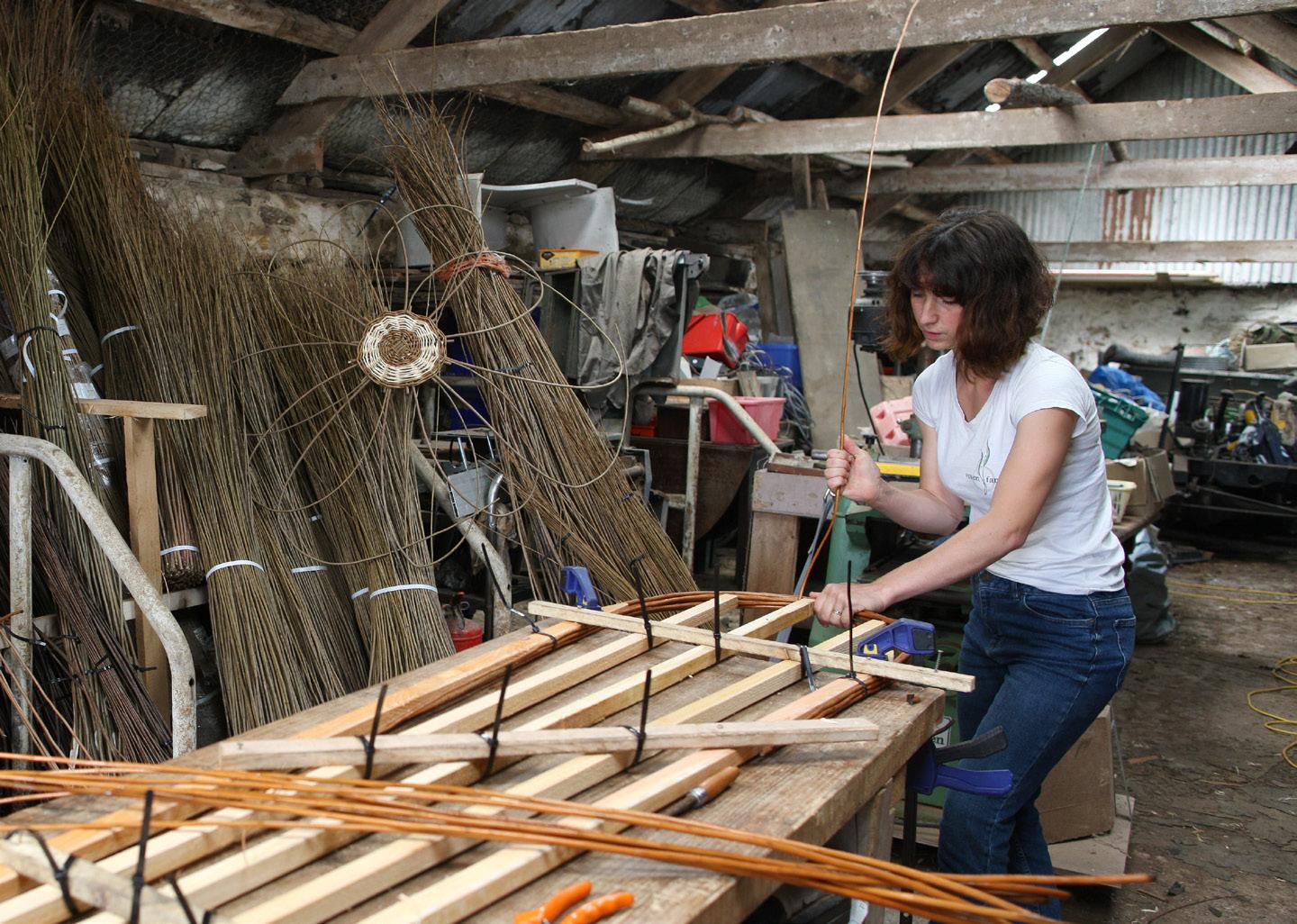
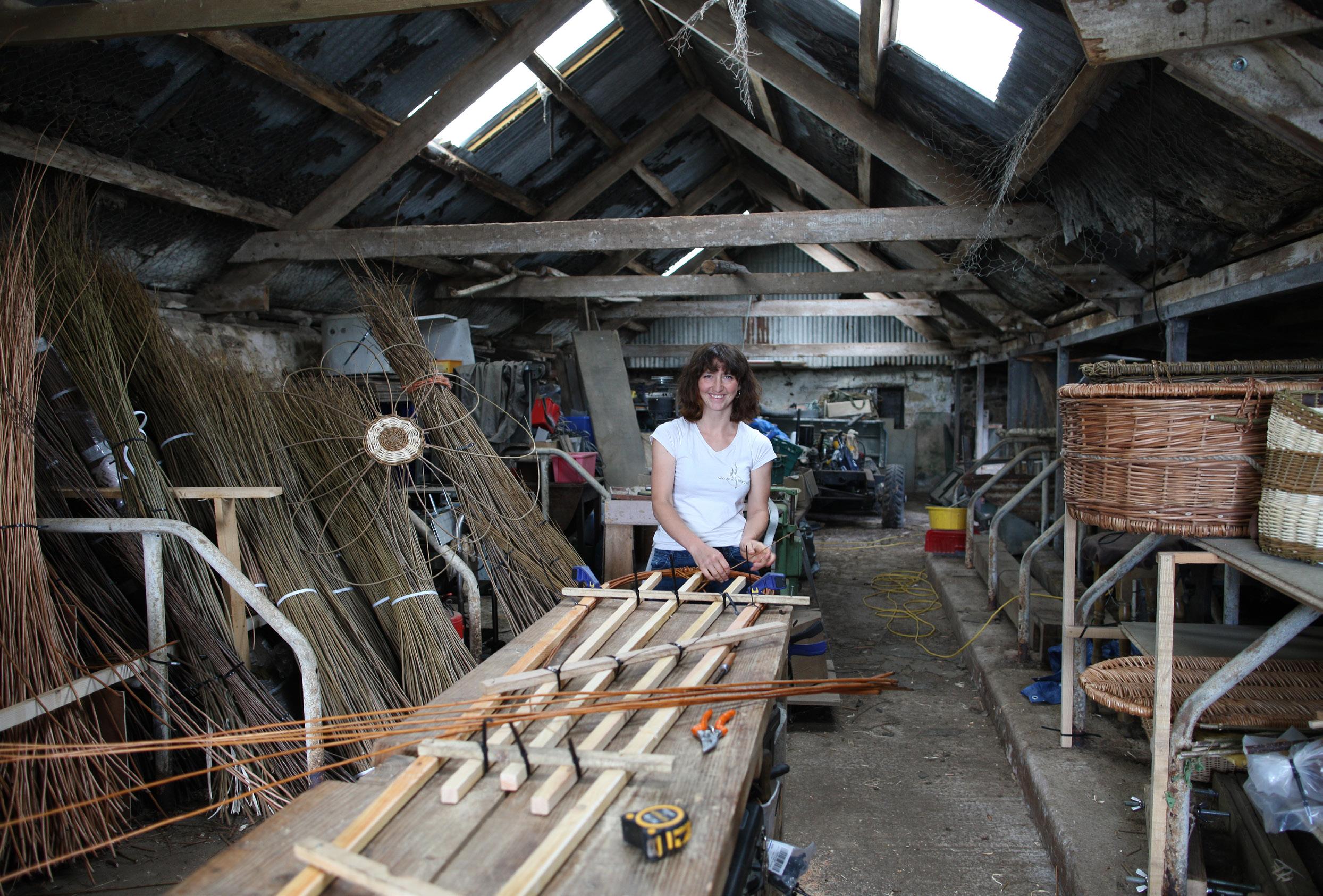
“Giving people the opportunity to see the coffin before the funeral and, if they wish, take part in making it, can be cathartic and an important part of the bereavement process.
I’ve even had someone help me weave their own coffin.”
Sophia is already a national
My mum and sister. Gandhi.
A mixture of inspirational and factual – meditation, women’s sexual health and an autobiography of a cancer survivor.
I love gardening and flowers. I’m also one of those crazy cold water swimmers.
award-winner – silver in Best Businesswomen Awards 2021 – but she is modest about her achievements. “There is a definite mind-shift towards more sustainable, family-centric funerals. I feel like a very small peg in the loom of a bigger momentum. I’ve never had a livelihood like this – every order feels like an absolute honour.”
There’s an opportunity for eco-tourism to benefit both our rural landscape and the local economy, says Richard Miles, Dark Skies Adviser for Dorset CPRE

England’s ‘green and pleasant land’, this ‘sceptred isle’, has in my lifetime become rather too urbanised for my liking; 84 per cent of the UK population now lives in towns and cities. As such, the countryside is in danger of becoming an increasingly scarce resource. Rural areas such as the Blackmore Vale need to be protected from creeping urbanisation on our doorstep. How might we do this?
One approach is to exploit our rural heritage by encouraging
visitors to enjoy the simple delights of the countryside which are noticeably absent from urban environments, such as walking through green fields and woods, breathing clean air, enjoying the tranquillity, birdsong, the sound of running water and the rustle of leaves in the breeze. Communing with nature in this way is an increasingly popular form of eco-tourism – but have you considered another attraction that is missing from the life of the city dweller? Urban living has many benefits, but it does come without the spectacle of
the evening, when the failing light brings forth the nocturnal world and the starlit sky.
William Barnes, the 19th century Blackmore Vale poet and scholar, celebrated the beauty of evening-time in his poem, The Evenen Star O’Zummer (opposite).

Above is a photo taken by my astronomer friend, Nick James, to which I have added a relevant extract from Barnes’ Musings poem.
Late spring through to early autumn are arguably the best times for staying up late to take in all things nocturnal.
The nights are warmer and darkness arrives later in the evening. Nocturnal mammals such as foxes, deer and bats are often best seen around dusk. Then we have the moon, stars and planets appearing in the night sky. Pubs, inns and other local places to stay might profit by advertising these attractions and staging events to enjoy them. In Hampshire, for instance, the Hawk Conservancy Trust stages Owls by Moonlight events that include a hot supper and can be booked online.
The CPRE has just published the findings of the 2022 Star Count, which aims to map light pollution across the UK. Severe ‘night blight’ in towns and cities reached a peak in early 2020, comprising 61 per

cent of all reports. In two years, this proportion has dropped to 49 per cent, suggesting that more people are now switching off lights (perhaps saving on their electricity bills). Rural businesses could take advantage of our improving dark skies to attract more visitors to the Vale, adding ‘astro-tourism’ to their activity portfolio. To me, a night awash with stars and our Milky Way spanning the sky instils a sense of awe and majesty. Stargazing is one of those contemplative activities which provides an escape from the everyday hustle and bustle and opens a door into a magical world that does wonders for our mindfulness and mental wellbeing. Sleep well!
Richard Miles Dark Skies Adviser Dorset CPREWhen vu’st along theäse road vrom mill, I zeed ye hwome all up the hill, The poplar tree, so straïght an’ tall, Did rustle by the watervall; An’ in the leäze the cows wer all A-lyèn down to teäke their rest
An’ slowly zunk towárd the west The evenèn star o’ zummer.
In parrock there the haÿ did lie In weäle below the elems, dry; An’ up in hwome-groun’ Jim, that know’d We all should come along thik road, D a-tied the grass in knots that drow’d Poor Poll, a-watchèn in the West Woone brighter star than all the rest,-The evenèn star o’ zummer.
The stars that still do zet an’ rise, Did sheen in our forefather’s eyes; They glitter’d to the vu’st men’s zight, The last will have em in their night; But who can vind em half so bright
As I thought thik peäle star above My smilèn Jeäne, my zweet vu’st love, The evenèn star o’ zummer.
How sweet’s the mornèn fresh an’ new, Wi’ sparklèn brooks an’ glitt’rèn dew; How sweet’s the noon wi’ sheädes a-drow’d
Upon the groun’ but leätely mow’d, An’ bloomèn flowers all abrode; But sweeter still, as I do clim’, Theäse woody hill in evenèn dim ‘S the evenèn star o’ zummer.

Natasha Solomons is the author of five novels, including Mr Rosenblum’s List (set in Dorset) and The Novel in the Viola, which was chosen for the Richard & Judy Book Club. Her latest book, I, Mona Lisa, is just out in paperback “After university I completed an MPhil in 18th century literature and then began a doctorate researching Women’s Romantic Poetry and the Domestic Muse. Unfortunately, I became un-stuck on a chapter on Verse Letters and so began writing my first novel as a way of avoiding correcting the footnotes. My entire career to date has been an extremely elaborate form of avoiding that tricky chapter …”
1. What’s your relationship with the Blackmore Vale (the loose North Dorset area, not us!)?
My grandparents bought a house here in the 70s with restitution money from Germany. I came here as a child for weekends and holidays, though I went to school in London. I moved here as soon as I could – it was the place in my heart. My first novel was set here and this is the place I feel centred, the place I always come back to. The Blackmore Vale is where I love to come home to.
2. What was the last song you sang out loud in your car?
I’m not allowed to sing out loud in the car. The second I do, my children tell me to stop that awful noise. My daughter complains if I sing she might actually die. Even when I’m alone, their voices are in my head, stopping me.
I used to sing in choirs and probably would have tried singing something like Sumer Is Icumen In to torment them on the 1st May and that would have elicited that response.
3. What was the last movie you watched? Would you recommend it?
After two and a half years of not going to the cinema, the last movie I watched was Sonic the Hedgehog. No. I want those hours of my life back. I ate a lot of pick ‘n’ mix, just for something to do, so that my tongue went blue. No. I wish I had ended my cinema drought with something else.
4. Your favourite quote? Movie, book or inspirational - we won’t judge, but would like to know why.
I don’t have one. It’s not really my thing. I ... maybe it’s the Douglas Adams one: ‘I love deadlines. I like the whooshing sound they make as they fly by.’
But … I mean I like it. It’s one I like. But saying it’s my favourite would suggest that I like it more than a line from Jane Austen. I don’t. I like it, it’s funny and true. But how can I like it more than Jane Austen? And how can I like one line from Jane Austen over and above another?
No. I have no favourites. It’s too anxiety-inducing to choose. The pressure’s too much.
5. It’s Friday night – you have the house to yourself, and no work is allowed. What are you going to do?
Run a bath. Read a book. Pour a glass of something to drink in the bath while reading the book. And try really hard not to dip the book in the bath.
6. What is your comfort meal? Corned beef hash and a big green salad. And failing that, if I need a lot more comfort, wine.
7. What would you like to tell 15 year old you?
Oh, I need something that 15 year old me will understand, but no one else will …
*Thinks*
“It’ll be okay in the end. And nobody knows anything.”
The Hambledon Gallery in Blandford. I can NEVER pass it. I love it.
9. What book did you read last year that stayed with you? What made you love it?
Can I cheat and have two? I’ll make it one fiction, one non ... Stay with me.
My favourite piece of fiction was by Gabriel Tallent – My Absolute Darling. The subject matter is quite shocking, but that’s not why I loved it. I loved it for its evocation of rural and coastal California. The way he writes about the natural world and the main characters’ relationship with nature, in a place I didn’t know at all, was like nothing else. Lots of people were very uncomfortable with a man writing about a female character, but I find it’s very strange that we’ve got to a place where, as writers, we have to limit our imagination. I found his depiction of a young woman totally convincing.
His descriptions of the storms and the sea, I just loved that part of the book. Parts of it were shocking and disturbing and difficult to read, but I … like books that disturb and challenge me. Some found it too much, but I … didn’t.
My other book is Consent: A Memoir of Stolen Adolescence by Vanessa Springora. She’s an editor in France and she wrote a memoir about her relationship with a famous French writer when she was 14 and he was in his late 40s/early 50s. Essentially he was a serial paedophile. Various women over the years tried to expose this writer for what he was, but the French establishment and police wouldn’t listen – he was so well known he was entirely protected. Until finally, this very well-known editor in France wrote this book. And now France is beginning to wake up and have its Me Too movement. But it’s taken 40 years. It’s remarkable for her strength and courage, but also because it’s an astonishing piece of literature – a sort of anti-Lolita where she writes about his erasure of her self. He not only takes her girlhood and innocence but he steals her voice. He turns her into a character in several of his novels, steals her name, and turns her into ‘his’ character, which is a warped version of herself. This fictionalised version chases her through her life. She pleads with him and his publishers to remove her from the books, but neither he nor they will. He uses a photograph of her as a child and refuses to stop using it. He doesn’t just take her body, he steals and publishes her voice. And so this unbelievably well-written book is a reckoning, where she says “Here I am” and settles

the account. It’s written with such acidity and beauty. Utterly brilliant.
10. Favourite crisps flavour?
*unhesitatingly swift* Salt and vineger. So vinegary they make your cheeks pucker.

11. Cats or dogs? DOGS. *glances happily at Mr Bingley currently loafing handsomely under the table*
12. What are your top three most-visited, favourite websites (excluding social media and BBC News!)?
1. How to get your dog to stop barking
2. The British Library
3. Authentic Shakespearean insults. I do go there a lot.
Oh and a high runner-up would be an unceasing search for holidays in Italy.
13. What’s the best biscuit for dunking?
I don’t like to dunk biscuits. Who wants floaters in their tea?
I just don’t like soggy biscuits. Sorry. Actually, I’m not.
14. What’s your most annoying trait?
Er … I’ve got quite a lot? How do I pick one? I worry about everything. Super anxious. Super self-critical. Nothing’s ever good enough. I’m also disorganised and forgetful. If left to my own devices, I will forget everything. I’ll casually throw away really important stuff. We could be here a while … do you need more?
15. Tell us about one of the best evenings you’ve ever had?
Can I cheat with an afternoon instead? We had a really great afternoon in Bath with my children about a month ago to celebrate my most recent book being out. It was so special. We went to an Italian restaurant (obviously - the book’s set in Italy). It was just one of those times. I got tiddly on some prosecco, and we ate so much that my daughter said “she felt like an overstuffed pillowcase”. Then we toddled round Bath, and I signed hundreds of books, and we went to the Baths, and it was just really fun. Low key, just a good day. Being with happy children, having happy times. Oh, and then in Milan last week, in the Leonardo3 museum, that was really lovely. The photo opposite is of me on the balcony – I was so happy. That was a great evening.
*checks under the table* Mr Bingley’s is that time he got a sausage for dinner.

16. What was the last gift you gave someone?
Genuinely the most recent? A sausage. For my husband. It was much appreciated.
17. What’s your secret superpower?
I have two. First is the Maternal Object Echo Location Service.
It’s a widespread phenomenon, found in most mothers, actually. It’s an ability to find objects that hitherto have been lost, and searched for to no avail for some time up to this point.
Socks, toys, pants, shoes, bags … I can find these objects even when I’m not in the room. Even over the phone I have been known to locate them.
My second is every writer’s superpower – an empathic ability to imagine yourself as someone else, in another time, in another situation.
18. What in life is frankly a mystery to you?
*plaintive voice* Most of it. I just thud from one corner to the next, mostly wondering how I got here.
19. You have the power to pass one law tomorrow, uncontested. What would you do?
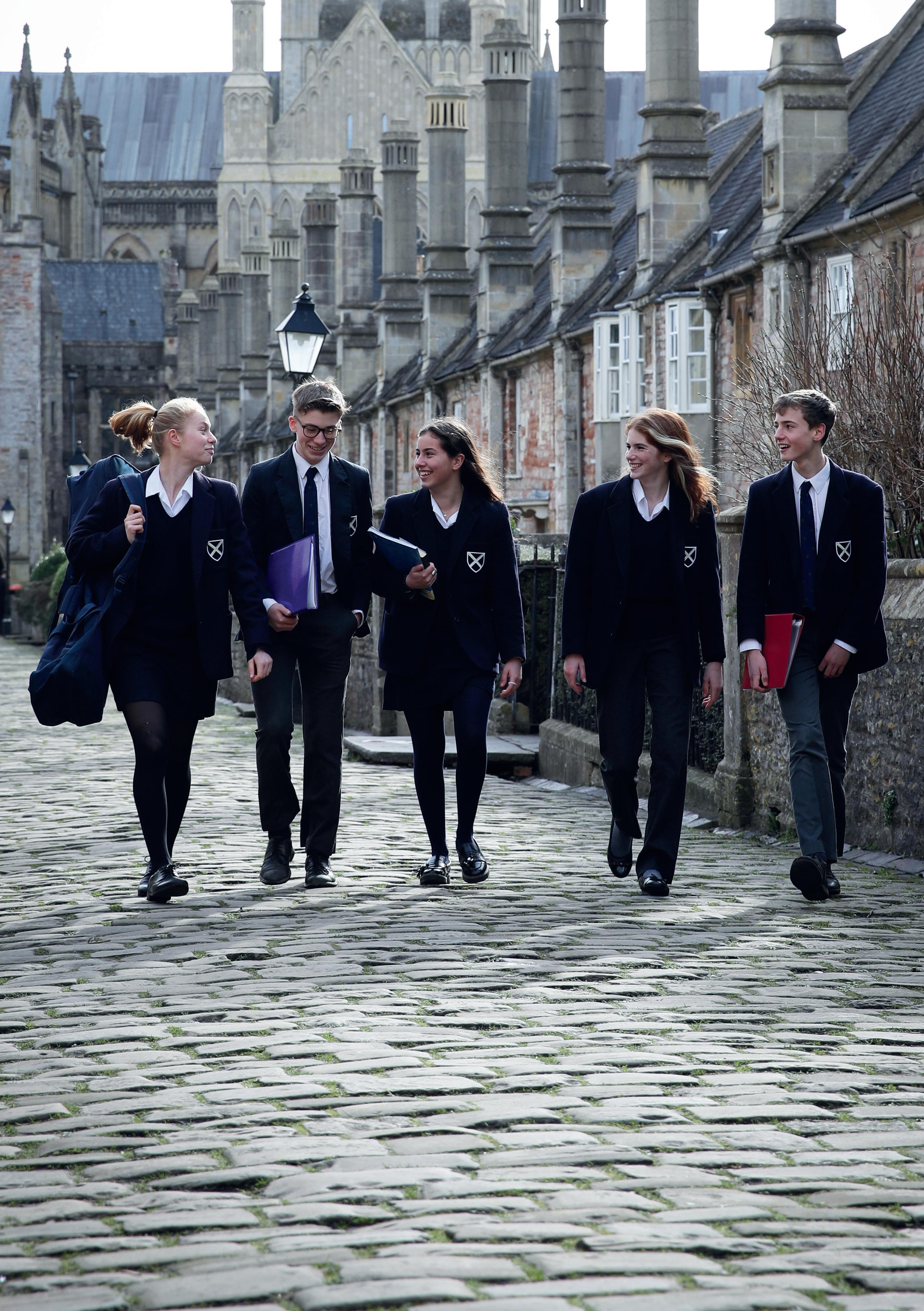
Stop dunking. Is that too controversial? It’s just too much power. My daughter always wishes for wings. It’s not very practical, but it’s an excellent wish. I think she’d have wings made legal, so I’m going to go with hers.
I, Mona Lisa is out now. Natasha wrote a fascinating and very personal essay for the Observer, about her journey to becoming a writer, and what brought her to share the quiet, strong voice of Mona Lisa.

“Listen to my history. My adventures are worth hearing. I have lived many lifetimes and been loved by emperors, kings and thieves. I have survived kidnap and assault. Revolution and two world wars. But this is also a love story. And the story of what we will do for those we love.”
In Leonardo da Vinci's studio, bursting with genius imagination, towering commissions and needling patrons, as well as discontented muses, friends and rivals, sits the painting of the Mona Lisa. For five hundred tumultuous years, amid a whirlwind of power, money, intrigue, the portrait of Lisa del Gioconda is sought after and stolen. Over the centuries, few could hear her voice, but now she is ready to tell her own story, in her own words – a tale of rivalry, murder and heartbreak. Weaving through the years, she takes us from the dazzling world of Florentine studios to the French courts at Fontainebleau and Versailles, and into the Twentieth Century.
I, Mona Lisa is a deliciously vivid and illuminating story about the lost and forgotten women throughout history.





A stunning, original hotel at the heart of a warm and visionary community that is reconnecting food, land and culture, this is no ordinary rural getaway.
Dining and staying at The Castleman is like coming home to the warmth of family. We offer guests homegrown and seasonal local produce, often picked from the walled garden and hedgerows, crafted into interesting dishes by talented chefs. As locally sourced as possible, the provenance of our meat, game and fish is a top priority, securing the tastiest cuts with sustainability in mind. Heritage grains and vegetables are often the stars of the show.
Our menu is often described as fine dining enough to be a special meal, but not fussy and pretentious. Simple, delicious and consistent, you will currently find dishes such as Hake ‘Kyiv’ with Sorrel Butter, Clarke’s Brisket Croquettes with Celeriac Remoulade and Vanilla Crème Brulée topped with Poached

This big-hearted community is
thatched village and pop into the famously quirky Chettle Village Store for a pie. There is also
enjoy your beautifully curated en-suite room with roll top bath, glorious views over the garden and surrounding fields, comfy mattress and fluffy white towels.
You’re invited! Curious? You are warmly invited to come and enjoy the generous hospitality of this tiny community and find out more about its extraordinary history and plans for the future.
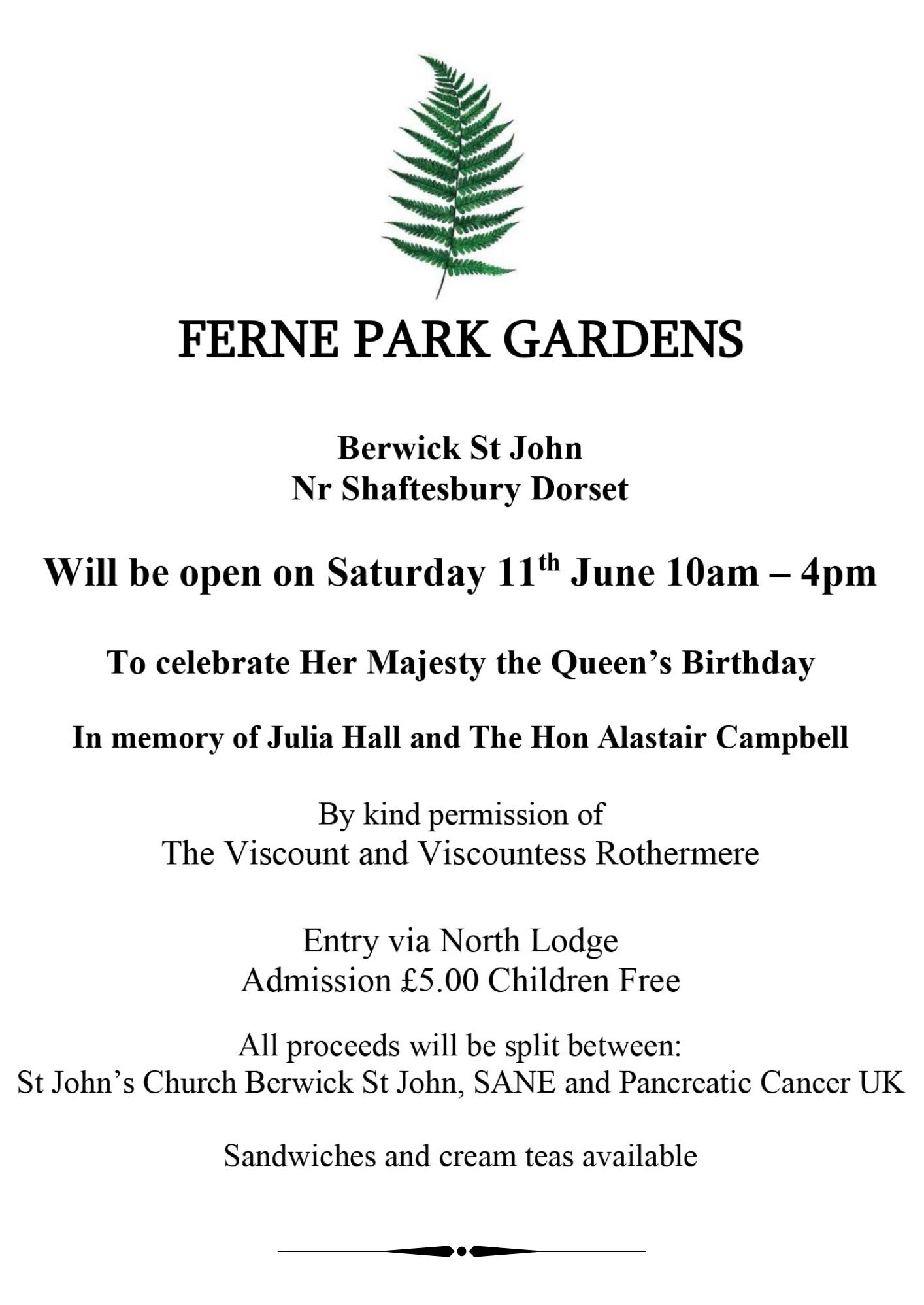
The Castleman are offering one lucky reader the chance to win an overnight stay this year, including dinner for two. Simply click the image on the right to go to the website to enter (scroll down to find the entry widget at the bototm of the post).

Please note T&C’s apply:
• Based on one/two people sharing one room • Dinner prize is capped at £60 per head for food/beverages
• Offer excludes bank holiday weekends/Christmas-New Year period


The new Platinum Skies community officially opened last week – and Courtenay Hitchcock discovered it wasn’t at all what he was expecting
The new retirement development on the site of the old Sherborne Hotel on the western edge of the town is not what you might be imagining. There is a noticeable absence of the usual small proportions, beige carpets, bland uniformity and ugly safety features. Instead the new Platinum Skies development seems to take delight in rejecting every expectation of what ‘retirement living’ looks like, with everything designed and built around independence and community. The complex of 82 retirement apartments offers generouslysized accomodation, with up to three-bedroomed options available.
In the main building the ground floor communal area is accessible to the public, but beyond there are security measures restricting access. Here residents can enjoy communal TV and sociable lounges, a multi-activity studio for dance, pilates or movie nights, plus a health treatment room. The residents-only bistro and bar is run as a not-for-profit enterprise, which means a full meal can be purchased for
around £6.
The atmosphere is not one of a random group of elderly people living together. Instead, this feels like a ready-made village community. There are social spaces to share and enjoy, with a luxuriously comfortable personal retreat behind each front door.
Looking around inside the houses and apartments it’s easy to see Platinum Skies’ attention to detail. Though a new build, the welcoming feel is of a quiet, solid construction with lots of natural light. The future-proofed extras, such as high-quality, easy-to-use appliances, sensor
lighting and other thoughtful details, are there for any older resident. The atmosphere is as far away from an ‘old people’s home’ as one can imagine. This is simply good, thoughtful design from start to finish, aimed at encouraging long-term independence.
Comments were overwhelmingly positive from those residents who spoke to me - some have transferred from the Platinum Skies Poole community, excited to live in Sherborne and enjoy all the town has to offer, while keeping the friendly, involved Platinum Skies community.
As one of her first official engagements, the new Mayor of Sherborne Cllr Juliet Pentolfe cut the ribbon on the independentliving apartments in Mulberry House and neighbouring houses which are home to people aged 55 and over.
Speaking after the event, she said: “I think it’s absolutely fantastic. It’s a brilliant concept and it has a wonderful community feeling. I’ve been to look around the apartments and the houses and as soon as you
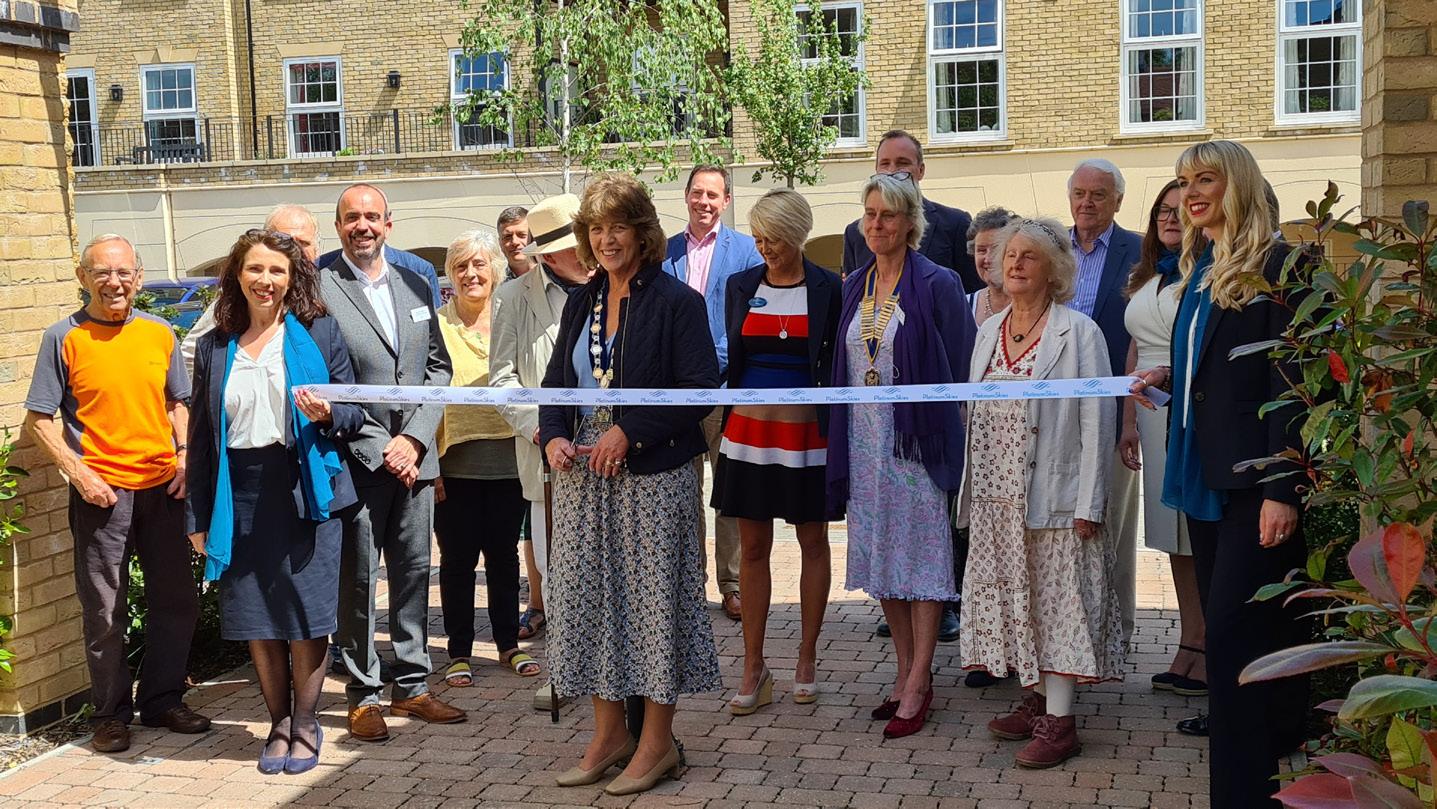
walk through the door, it feels as though you’re on holiday. It’s gorgeous.”
Sherborne has two dedicated Community Managers, Hayley and Vanessa, who organise fun activities like wine tasting workshops, talks, live music, yoga, coffee mornings, quizzes, and crafts, as well as providing practical and emotional support. Among the opening party’s guests were Pamela and Derek Emerson, who moved into a house in Canon Woods Close, earlier this year. Talking about the move, Derek said: “It’s one of the best new-build houses that we have seen. I think it’s one of the best moves we’ve ever made and that’s coming from someone who really didn’t want to move.”

Pamela added: “We lived on Dartmoor in a large house with no neighbours. It meant that we were isolated (although I was happy to spend all day in the garden!). Thinking about coming into a retirement village was initially quite daunting, but we settled in quite quickly and the Community Managers go to a lot of effort for us, along with Agata who runs the bistro.”
Shared ownership Platinum Skies works through a shared ownership schemeits own, plus the government’s ‘help to buy’ scheme which is for over-55’s as well as young first time buyers.
The minimum ownership is 25 per cent – but homeowners can vary how much of the property they own, releasing capital or reducing rent as life circumstances alter.
For more information go to Platinumskies.co.uk or call the team on 01202 040996



Born in Devon, Luke grew up on the edge of Dartmoor and has always been an outdoors fanatic, as well as a selfconfessed geek.
“I’m a classic example of the free school meals kid whose life was changed by education, supportive welfare from a number of sources and some cracking parenting.
After my parents split we were shunted around by the council for a little while, including to a bedsit and a caravan, until we got lucky and landed a council house when I was 11. There are no musicians in my family, but the radio was always on and my pop quiz abilities are largely down to a young mother who didn’t migrate to Radio 2 until well after I left home. Like every sane person, I consider 1984 to be the greatest year of music in history. At sixth form I started to learn the guitar and have been obsessed with it ever since,
so I’ll admit this list is heavily influenced by that!”
And so to Luke’s eight music choices, in chronological order of influence:

I remember bouncing around to this in the car as we drove to and from my Dad’s greengrocer’s shop when we lived in East Devon. Literally bouncing. I don’t think we used seatbelts back then.
It’s a fabulous song with huge energy and defines the late 70’s for me.
This band was hugely formative for me and their albums were some of the first I bought with earnings from my Saturday job. It’s also current – outside work I swap the tweed for a cut-off jacket as I’m one of two guitarists in an Iron Maiden Tribute Band. COVID has got in the way for every venue and it’s
important to get this back and support live music. We’re gigging all over the country, headlining a couple of festivals over the next 12 months and love what we do. When this one kicks in, the crowd goes nuts every single time. It’s just a blast to play with the guys.

Probably the closest thing they did to a pop song, this late 80s tune always makes me smile and has been a fixture in most of the driving mix-tapes (and modern equivalents) ever since. Great band, great musicans.

It’s pure cheese, but it’s also brilliant. We could have an endless debate over the David Lee Roth vs Sammy Hagar era, but Eddie was just such
an inspiration to a young guitarist and this song is also the soundtrack to driving over Dartmoor.
In the upper sixth our timetable on a Thursday had just one lesson first thing and then we were free to do ... whatever. We used our ‘study time’ most
productively, and were usually on the moor or at a beach by lunchtime. Van Halen was the soundtrack to every sunny day.
Although I grew up in Devon, I didn’t really regularly visit Dorset until the 90s, after I got my first car. I was doing a lot of rock climbing and frequently spent Friday nights zooming down here to camp at Tom’s Field in Purbeck, or a cheeky bivi site on Portland, and get to the pub before they rang for last orders. This tune is iconic for the 90s and was frequently playing as we left for the coast. It’s no wonder we ended up living here really –my wife and I got engaged after a particularly romantic weekend around Dancing Ledge, and even named our first cats after places in Dorset!

By day, he’s a mild-mannered college principal. By night, he‘s a rock-playing guitar man with torn-off sleeves
It’s not a phase. It’s a way of life. I was never really into grunge, but emo, definitely. Welcome to the Black Parade is the defining album of the genre and this song is just immense. We saw them in Cardiff 15 years ago, leaving behind a baby and a toddler in
the care of the babysitter, and they blew our minds. This May all four of us were at Cardiff for their return, although I was more than happy to let the younger pair go into the mosh pit this time while I held the drinks and merch …
I love folk as much as I love metal. This is a Dougie Maclean song about emigration from the east of Scotland, and this rendering by Cara is just sublime. She has the most incredible voice, truly astonishing. The storytelling of the lyrics combined with the way it’s delivered always make me cry.

I love musical theatre. Music is, or should be, about emotion. Anyone who has felt ‘on the outside’ will resonate with this. I was someone who was definitely the Dungeons and Dragons science geek at school, and that, along with dealing with the challenges never having enough money at home brings when you see your friends do things you simply can’t, meant I always felt somewhat separate.

Being pretty introverted also probably added to the mix. It’s a powerful message – Evan has his own issues, but we’re all on the outside at one time or another. It’s important to just be happy with you, whatever that is.
And if the waves were to wash all your records away but you had time to save just one, which would it be? Dreams. It has to be.
My book – Danny, the Champion of the World. Such a comforting read, as well as beautiful imagery. Loved this as a kid, and was then lucky enough to live in the Chilterns in my late 20s and early 30s, not far from Roald Dahl’s home. It is exactly as you’d expect it to
be, and I used to drive along the same road as Danny did (when he ‘borrowed’ the Baby Austin) every day to work. Fabulous.
My luxury item Well, a guitar obviously. Along with a Marshall DSL Head and 4x12 cab please. And maybe a full pedalboard of FX. (I think you’ll find that’s cheating, and more than ONE THING - Ed)

Click here to listen to Luke’s entire playlist on YouTube


Last month in the BV the North Dorset MP offered to answer an open postbag – and here he has answered all the letters that were sent.
The UK government signed an international agreement in the Northern Ireland protocol. Are you happy that it would then break it –what would that say about the trustworthiness of the Johnson government?
Christie Burton, Monkton Deverill
You may be aware that I chair the Northern Ireland Affairs Select Committee so I know this policy area pretty well. The UK’s reputation for upholding the Rule of Law is really important. I have made this clear in the Commons and directly to Ministers. We cannot and should not act unilaterally but through the dispute mechanisms of the Agreements. To do otherwise would send a devasting message to the rest of the world and would undermine our Rule of Law message to Putin.
Why has Mr Hoare not publicly stated his confidence, or lack of, in the PM, and has he sent a letter to the 1922 committee?
Chris (via Twitter) Blandford St Mary
I think my views are pretty well known on these matters. I expect more and better from the Government.
I would like to ask Simon about the NHS dental services in this part of Dorset. When I moved to Dorset I waited a year on an NHS Dentist waiting list to get an appointment. My dentist is now retiring and I have to go back onto the list. With only three of 99 NHS dentists in Dorset taking patients, this is not going to happen soon. We now have a dental crisis in Dorset – this is nothing to
do with Covid. ALL dentists say that the money they receive from the NHS makes it impossible to provide dental services in a financially viable way. The NHS has got to pay dentists sensible money – they have to be paid more and this has to happen now. In the meantime perhaps Simon can tell me what I am going to do?
Alyson Parkes, Verwood
Only three out of 99 dental practices in Dorset are accepting new adult NHS patients, a health watchdog reports. Healthwatch Dorset said its research, undertaken between September and November 2021, also found that only 12 were accepting new child NHS patients.
NHS dentistry is in national crisis I am afraid and I hear many such stories as Alyson’s in my inbox. Put simply we do not have enough trained dentists in the UK, so this puts pressure on the system both public and private. The Government is aware of the situation and trying to encourage more people to become dentists. It’s not so much about the money per se but rather a shortage of trained people.

With second-homing becoming such a major issue affecting not only house prices but also the social backbone of our village communities, can Mr Hoare share what steps can, should and will be taken to ensure more truly affordable housing in the countless new developments planned for Dorset – and also that this housing is kept for people who live and work locally? Our adult children are leaving, not by choice, but because there is simply nowhere for them to feasibly live.
Angela Park, Blandford Forum
Angela raises an important point. Housebuilders want to build and deliver their product to market. There is a real issue of viability evaluation on development proposals, which I am discussing with the Housing Minister. Changes in viability can affect the per cent of affordable housing that is delivered.
The housing list already has a local connection element to the assessment criteria, but this can always be strengthened. The key ambition, I would suggest, is to keep our villages and towns vital and viable.
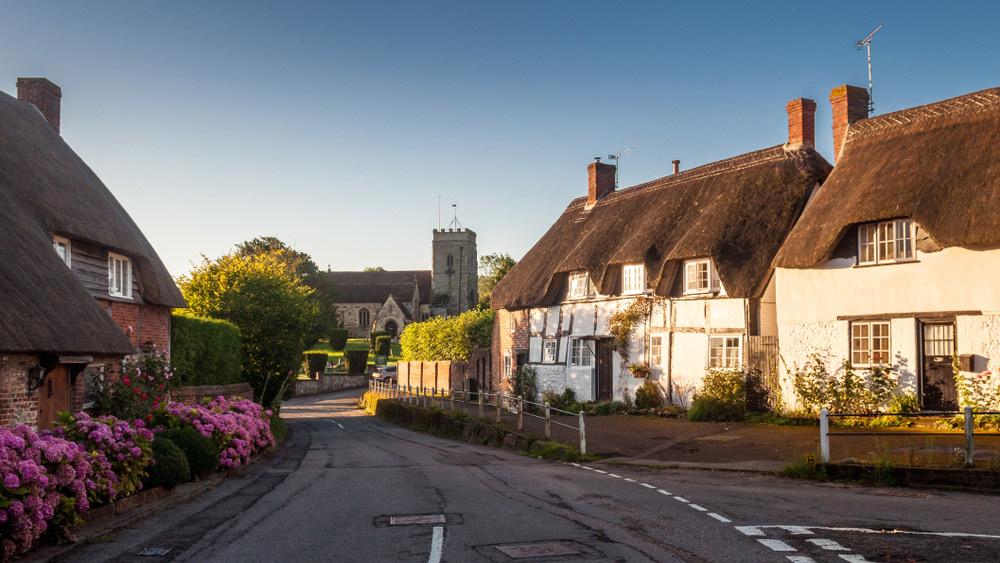

What is Mr Hoare going to do about illegal fox hunting, with the local hunts (Portman and Blackmore & Sparkford Vale) [potentially] endangering the public on footpaths, roads and railway lines?
Lucas North, Buckhorn Weston
It is imperative that local hunts stay clearly within the law. It is imperative that we all stay within
the law. As I always say when this issue is raised with me, if there are concerns or evidence of lawbreaking, inform the Police, record the evidence if you can and submit it.
A fascinating addendum to Tales from the Vale in the May issue of the BV was a link to a House of Commons debate from March 1942, in which Major Lloyd George states: “we can call upon our people for any sacrifice, provided they have the knowledge that it is equitable”. It is a shame then that a fact which the Liberal Party understood 80 years ago is still not grasped by our current Conservative party. How does Mr Hoare justify the seeming culture of ‘one rule for them’ rife in Westminster, exemplified by Partygate? How does he explain this to those who missed their loved ones’ last days during Covid, and who were denied the comfort of a simple hug upon their death bed from similarlygrieving family, only to now see images of our political leaders thoroughly enjoying themselves at parties?
Annabel Cores, Gillingham
Let me start by saying that my family and I, like countless others, took the Covid rules seriously. We stayed home. We saved lives. We protected the NHS. I called for Dominic Cummings to be sacked following his Durham ‘eye test’. I was ignored and the rest, as they say, is history. I cannot and will not defend the indefensible. Politics has been damaged by this shameful episode, compounding the feeling of ‘do as I say not as I do’. It is appalling. I am furious. There is no justification and I won’t use weasel words to mitigate that which cannot be mitigated against.
Why does the Tory elite seem so set against home working? Proposals to expand flexible working were removed from last week’s Queen’s speech. Boris Johnson has decided that those who work from home are aimlessly drifting back and forth to the fridge. Rees-Mogg decided the best way to bully civil servants back into the office was to leave passive aggressive notes on their desks. It’s clear that flexible working is here to stay (the ONS predicts that 57 per cent of workers will work at least partly from home by this autumn, while two-thirds already work flexibly in some way), and those who resist are refusing to acknowledge the
It is appalling. I am furious. There is no justification and I won’t use weasel words to mitigate that which cannot be mitigated against.Dorset has one of the highest rates of second homes in England – at one in every 34 homes. It is nearly three times the national average.
benefits and bound to be left behind. Just last month in the BV a local recruitment firm acknowledged flexible working was a must on an employer’s benefits list if they wished to recruit the best candidates. In a rural area like ours, the ability to work from home opens up opportunities previously unseen, and can drive real change in our local communities – what sucks the life from our area is young people moving away for better jobs. But would more choose to stay if remote working for at least part of the week let them tap into big-city opportunities without having to up sticks? More home working means less commuting (with its enormous knock-on environmental benefits), putting money back into hard-pressed pockets; it breathes life back into struggling local high streets too, drawing new people in. Brian Holmes, Shaftesbury
I agree with Brian. My party professes to believe in individual choice and discretion. If a boss and employee can come to a good working solution allowing flexible working, then let them get on with it. We have not rolled out broadband across the UK just to allow superfast gaming! It is also good for the environment, saving miles of car journeys, as well as being good for family life and the work/life balance. It also means we can employ good people who don’t live in the area but are happy to visit once a week or whatever.
Home working is a dividend of the IT revolution. Let’s exploit it.
It seems that the Conservatives have abandoned their pledge to reform the planning system, and I wonder if Mr Hoare can explain how they propose to improve the chance for young people to buy their own home? The last major housebuilding programme took place many decades ago and we just don’t have enough homes for everyone. I voted Conservative because they promised to rectify this.
S Richards, Fifehead Neville

Another planning Bill was announced in the Queen’s Speech. Let’s see where that takes us. I agree with the question that, if we are to have sustainable communities allowing inter-generational living, then we must have a wide range of home ‘products’ of wvarying types, price points and purchasing schemes to get our young on the housing ladder.
How do we regain trust in our government when their lack of proximity to the truth undermines trust in all MPs and by doing so undermines democracy? Without truth there’s no trust and without trust, democracy flounders. Simon Hoare is a decent MP tainted by dishonourable colleagues. As a supplement, I would be interested to know which of the seven Nolan Principles Mr Hoare believes (and is able to confirm) Johnson adheres to: • selflessness • integrity • objectivity • accountability • openness • honesty • leadership
Wendy Darvitt Chalke Valley
It is for any Government to earn trust, secure it and retain it. It is not automatic from the people, nor should it be. No party has a right to be in government. It is a sacred trust vested by the people and it can be taken away. I think the key task at hand is to veer away from easy populism and deal with grown-up politics in a grownup way.
The Nolan Principles are pivotal to our public life and tinkering with the Ministerial Code is inept politics. All I can say is that in the 19 years that I have been elected to office – 12 as a parish, district and county councillor and seven as an MP – I have tried to maintain the highest levels of public service and uphold the Nolan Principles. I think they are important as they are, in essence, the heart of our UK political system.
The Nolan Principles are pivotal to our public life and tinkering with the Ministerial Code is inept politics.Jacob Rees-Mogg hit the headlines when he left this note for civil servants who weren’t at their desks
We haven’t rolled out broadband across the UK just to allow superfast gaming! It is also good for the environment, good for family life and the work/ life balance.



It’s tricky speaking truth to power. How can citizens who are increasingly concerned about the looming environmental crisis persuade government and industry decision-makers to take the necessary actions to avert disaster?
The challenge was highlighted at a protest outside Dorset Council’s offices on 12th May, seeking to raise awareness of the council’s failure to take adequate action since it had declared a climate and ecological emergency three years ago ago at its first AGM as a unitary authority. None of the protesters were there for personal gain. They were acting on behalf of all of us. To their credit, some councillors engaged with them as they arrived for the meeting.
Notably only a couple of younger Conservatives did so.
The protest was entirely peaceful, albeit theatrical and lively when a drum band struck up. There were various speeches, but they were not heard inside the building. A Conservative councillor in the meeting was reported to have described the protesters as a ‘rabble’ and said she was ‘disgusted’ by them.
Decades of increasingly desperate warnings by scientists have failed to generate the required urgent action. Public protests have so far simply drawn increasingly harsh repressive measures by the Government.
There is some hope, with polls indicating that most people are now increasingly concerned
about the environment, and growing numbers within industry are too. A safety consultant recently left her job with Shell, sending an open letter to its executives and 1,400 employees saying the firm was knowingly causing extreme harm to planet and people.
Attitudes to the environmental crisis are too often split between the so-called political Left and Right. This is disastrous. Global warming will impact us all, regardless of our political affiliation. We have to find a way to work together for the common good. Our common future depends on it.
The world needs grown-up democracies more than ever, says North Dorset Lib Dems’ Mike Chapman – but ours is currently looked at with raised eyebrows
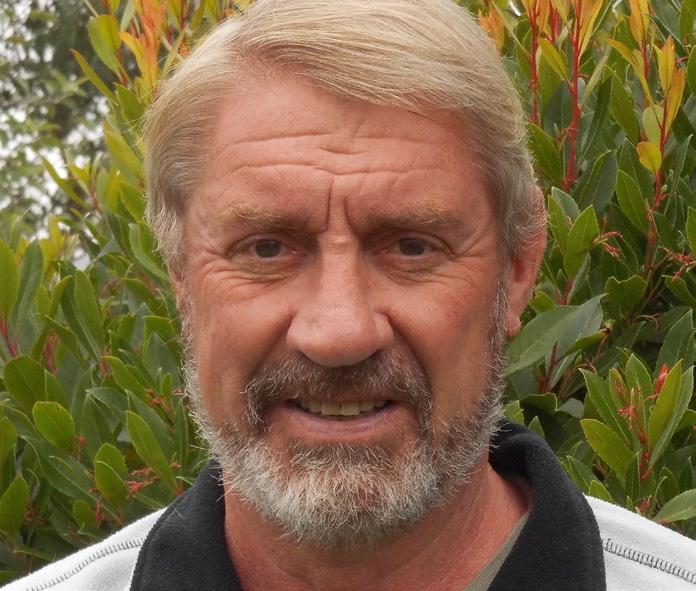

First and foremost, 70 years of duty delivered faultlessly by our Queen is the most potent message this nation can send to the rest of the world. The strong, integrating and positive voice of the Commonwealth, built during her reign, is the most extraordinary achievement, too. A heartfelt thank you to Her Majesty from here in the Vale.
But why does the quality of the political leadership of this nation matter so much to us in the South West? Why should the probity of those at the top, elected and unelected alike, be so important?
With the US schizophrenic about guns and equally divided about so much else, with Russia being taken to hell in a handcart and China continuing to demonstrate the viciousness of its regime, the steady voice of the more grown-up democracies needs to
be heard. Thus, Partygate, the continuing spat with the EU about Northern Ireland and the rest of the Brexit mess are doubly disastrous: our nation is not focused on the more important issues and the rest of the world is dealing with us with raised eyebrows and the long spoon of distrust.
The electorate is increasingly savvy. Those one-liners from the 1950s on, from “you have never had it so good” to “take back control” no longer resonate the way they used to. Lincoln had it right about the limitations of trying to fool the people. We know we have been taken for a ride. The heart of this for the Vale is the notion of levelling up, currently being served up by those we have seen at the centre
of the Partygate revelries. The haughtiness, the we-know-best approach of those in the various coteries at the centre can be seen in the pictures, read in the texts and felt in the denials and excuses. It is this centralised and centralising monoculture that needs fixing. Otherwise, we are no better than those tyrannies we seek to defeat. Through elections near at hand and in the longer term, we will find the way. Early May saw the start of change.
While Rishi Sunak’s announcement of a £37bn package of household support for rocketing energy bills gave the Tories some respite from Partygate this week, for many of those worst affected by the cost of living crisis, its impact will barely be felt at all.


October’s grant will do very little to offer respite from hardship for many on pre-paid meters, let alone replace the meals and hot showers they’ve already missed. For others the grant will offset arrears that have accumulated, effectively rechannelling cash from a windfall tax on obscene super-profits straight back into the pockets of the oil barons and energy moguls.
Sunak is right to point to the role of a range of global factors, such as the war in Ukraine, in pushing energy prices up. But the cost of living crisis isn’t just about energy – it’s wilfully disingenuous of a man with his economic background to sidestep the plethora of homegrown factors that are contributing to it.
The package does nothing to address low pay, nothing to address the housing crisis and rising rents, nothing to insulate homes (which is the most costeffective way of both keeping energy bills down and tackling the climate crisis), and nothing to reverse the damage of 12 years
of Tory austerity on our decaying public services.
Most importantly, it does nothing to tackle privatisation and the lust for excess profits that are the root of inflation.
The Chancellor’s long-awaited answer to the cost of living crisis has been to put a sticking plaster on a gunshot wound. Like the rest of Johnson’s Government, he shows himself to be without either the imagination or integrity to act in the best interests of the country.
The household support package is a mere plaster on the UK’s cost of living says Labour’s Pat Osborne
What better time of year could there have been for exploring the Dorset countryside while seeking out the abundant artistic talent? With 250-plus venues and more than 500 artists taking part in Dorset Art Weeks (DAW), there were some stand-out artists among the studios, galleries and exhibitions.
I started my exploration in the hills above Durweston, in the stables at Traveller’s Rest Farm (home of BV farming columnist George Hosford) where Heather MacGregor was exhibiting her oil paintings with David Norton and Judy Baker. Heather says: “I paint what I see and how I feel about it. The work aims to give more than an initial visual impact. Principally I make studies in the field which I work up into paintings in the studio. When I am painting, I am conscious of walking on a tightrope. The challenge is in creating an engaging sense of place without slipping into the obvious or the obscure.” She responds with a glorious exuberance to her subject matter. She is pictured above with two of her works: Misty Stour and Summer River.
Down the hill into Durweston and to the new Bryanston Knighton House where, alongside that of their tutors, pupils’ work across all the age ranges was on display. One could not help but be impressed by their accomplishments and

the variety of media to which they had been introduced. See image below - one little visitor found much to absorb her!
In the centre of Blandford, Georgina Wood’s charming house was full of her sensitive paintings, prints and mixed media images. The classic India

Edwina visited many of the 250 venues of Dorset Art Weeks and shares personal highlights of her tour around the artistic side of the countyHeather Macgregor in front of Misty Stour (left) and Summer River Image: Edwina Baines Absorbed in the Bryanston Knighton House Gallery Image: Edwina Baines
 Mark Harris in his studio, with ‘Gully Lane’ (left) and ‘Glorious Dorset’ (triptych) right Image: Edwina Baines
Mark Harris in his studio, with ‘Gully Lane’ (left) and ‘Glorious Dorset’ (triptych) right Image: Edwina Baines
ink shapes and muted colour palette of various vessels was reminiscent of the work of Italian artist Giorgio Morandi, whose paintings were noted for their tonal subtlety in depicting apparently simple subjects. A few streets away was Rachel Baynes’s pretty, productive garden and exhibition All Kinds of Inks. A wide range of differing methods and media were on display, from collagraph prints to Japanese woodcuts, linocuts and inks. Rachel explained that a collagraph print is made by glueing different materials to cardboard and creating a kind of collage. During the inking process the ink will rub off the surfaces that are smooth or higher and stay on surfaces that hold more ink, for example at the edges and at lower points, thus creating the image. The results were striking.
A drive through the Clenston Valley then led me to Mark Harris’s Gallery in The Old Engine Shed in the beautiful
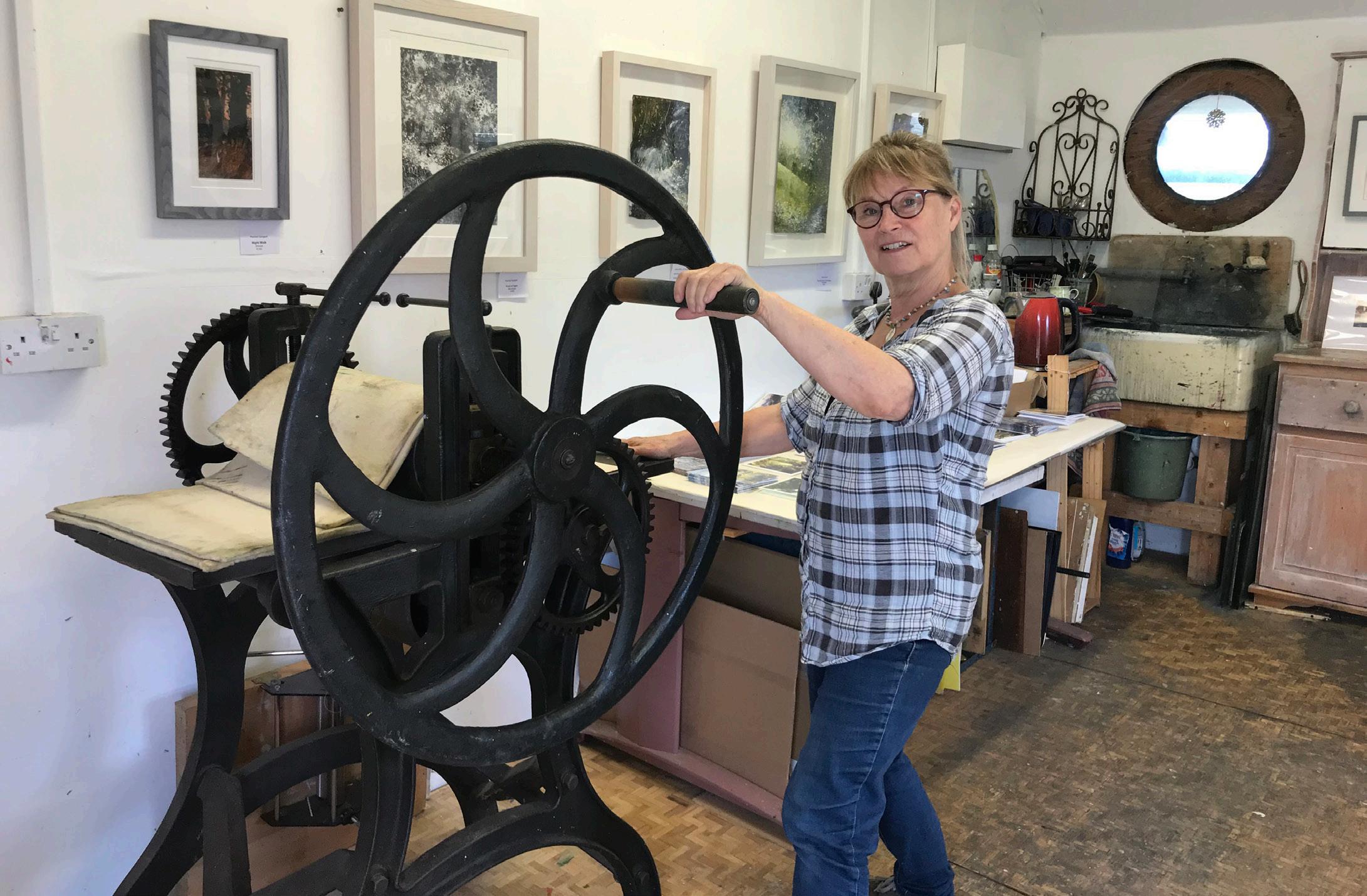
village of Briantspuddle, which is worth visiting as an artwork in its own right. In 1914, the small settlement was sold to Sir Ernest Debenham, grandson of the founder of Debenham’s department store, who expanded the village to house those working on his selfsufficient farm. Many houses are built from hand-made concrete blocks in the Arts and Crafts style. The listed Bladen Valley is
an example of a model estate and well worth a visit, especially the First World War memorial Madonna and Child, whch was sculpted by Eric Gill.
Interestingly, the original purpose of the Old Engine Shed was to house Ernest Debenham’s vehicles! Mark showed me an old photograph of the cars lined up outside the building, now converted into housing, bed and breakfast accommodation and a

studio.
The walls of the latter are lined with his striking canvases. Mark gains his inspiration from the surrounding countryside and coastline. Initial marks are made in pastel and charcoal before blocks of acrylic paint are layered, then further pastels and Indian inks are added. Mark started his career as a pastry chef, although he found time to paint throughout that time; it was his sister who actually went to art school! Now a fulltime professional artist, during lockdown Mark was unable to purchase large canvases (“I’m obsessed with trees and I love big rolling fields”) which resulted in wonderful triptychs which work extremely well, even in small spaces.
In his studio, I was curious about a seemingly incongruous painting of a giraffe – it transpired it was part of a design commissioned for a range of labels for a very expensive single malt whisky! Indeed, the image has to reflect not only the taste, but also the flavour and aroma of the whisky, and Mark uses the Brushes app on his iPad to transfer and modify the digital image. He occasionally uses the app when he gets stuck on an image; he finds that by copying and digitising an image, he can experiment by flipping or using different colours. He can therefore make several versions of the same picture.
“However, you have to be careful you don’t get overly distracted!”
Another day took me to Poundbury, Dorchester and a wealth of venues and talent. Top of my list was the Casterbridge Art Society ’s broadranging exhibition It’s Up to Us, showcasing the concept of sustainability. Paintings,

sculpture, photography, calligraphy, woodwork, textiles and work from pupils at Damers First School were on display. The exhibition in Queen Mother Square was held in the newly refurbished Jubilee Hall, which incorporates structural elements of The Royal Jubilee Hall from Weymouth. The historic cast iron columns and brackets were recovered and incorporated in the new building alongside the old stone hearth found in a Portland quarry.
I ended up close to home in the
converted cowsheds at Gold Hill Organic Farm, in the studios of Rachel Sargent and Emsie Sharp. Rachel’s evocative paintings and prints are full of light, shadows and the elements which chart her walks along local footpaths and the coastline. She is pictured opposite with the Victorian etching press (her popular workshops will be running again in the autumn). Emsie makes unique and colourful handblown glass, and I will be writing more about her exciting techniques next month.
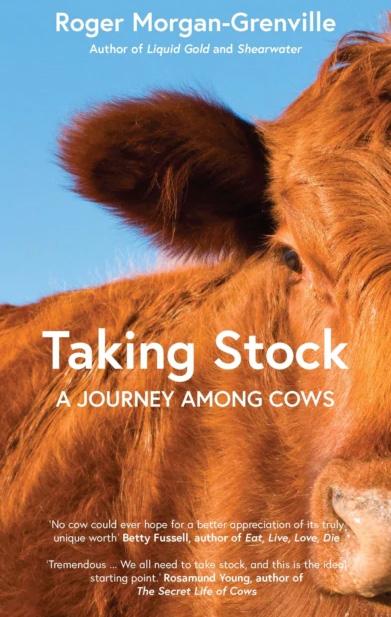
Since Highland cattle ransacked his grandmother’s vegetable patch when he was six, Roger has been fascinated by cows. So at the age of 61, with no farming experience, he signed on as a part-time labourer on a beef cattle farm to tell their side of the story. The result is this lyrical and evocative book. Cattle have existed alongside us, fed and shod us, quenched our thirst, and provided a thousand other tiny services, and yet most of us know little about them. We are also blissfully unaware of the de-natured lives we often ask them to lead. Part history, part adventure and part unsentimental manifesto for how we should treat cows in the 21st century, Taking Stock asks us to think carefully about what we eat, and to let nature back into food production.
Roger Morgan Grenville is speaking at a Sherborne Literary Society event on June 8th - see more details and book tickets here

Polly Morland was clearing her late mother’s house when she found a battered paperback fallen behind the family bookshelf. She was astonished to see inside an old photograph of the remote, wooded valley in which she lives. The book was A Fortunate Man, John Berger’s classic account of a country doctor working in the same valley more than half a century earlier. This chance discovery led Morland to the remarkable doctor who serves that valley community today, a woman whose own medical vocation was inspired by reading the very same book as a teenager. Interweaving the doctor’s story with those of her patients, reflecting on the relationship between landscape and community, and upon the wider role of medicine in society, a unique portrait of a 21st century family doctor emerges. Illustrated throughout with photographs by Richard Baker.
On June 30th Wayne invites you to join him for an evening with Polly Morland. Enjoy a glass of wine, a talk and a signing. Tickets just £2, redeemable against the book. More details here
In 2022 Winstone’s celebrates 10 years as Sherborne’s Independent Bookseller. Winstone’s has won the British Book Awards South West Bookseller of the Year four times and was winner of the Independent Bookseller of the Year national award in 2016. Owner Wayne Winstone was previously one of the three judges for the Costa Prize for Fiction, and in 2018 Wayne was selected as one of the top 100 people in the Bookseller’s Most Influential Figures listing.

“As it’s such a pleasure to share books at events both in the shop and out and about, I thought I’d bring a couple of books to your attention that have the authors visiting Sherborne in June” - Wayne


‘He went that way!’ - Marilyn Peddle

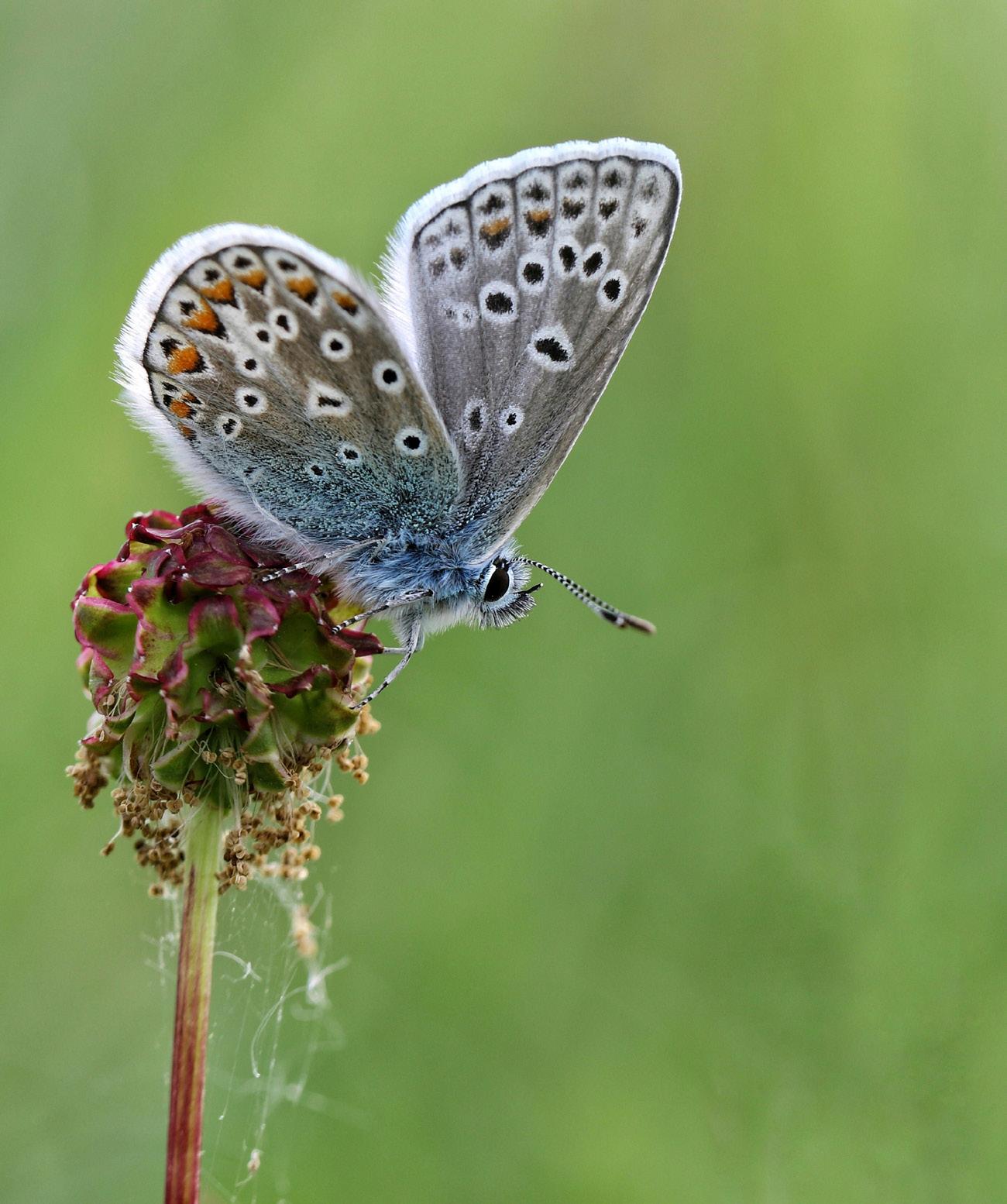
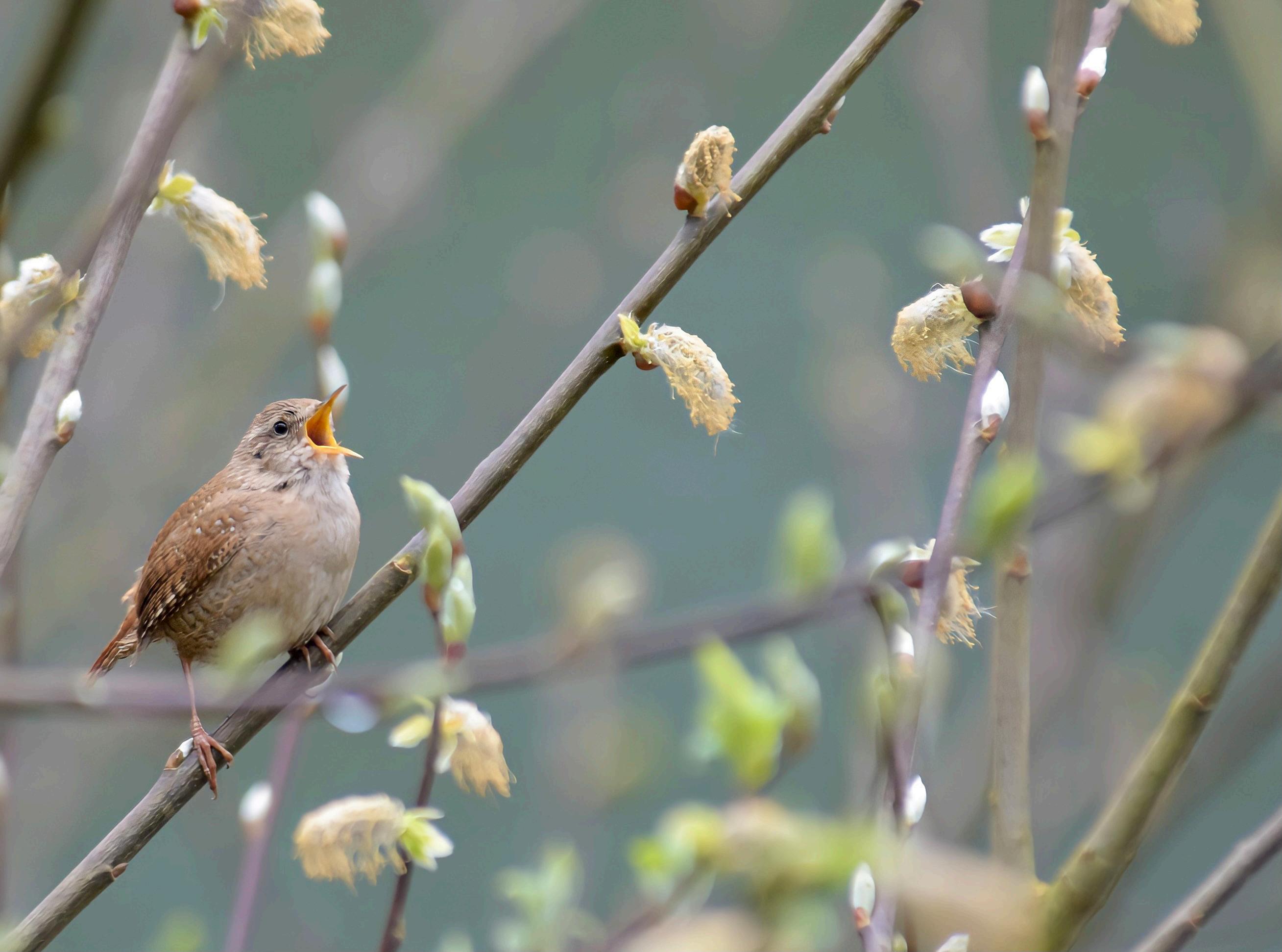


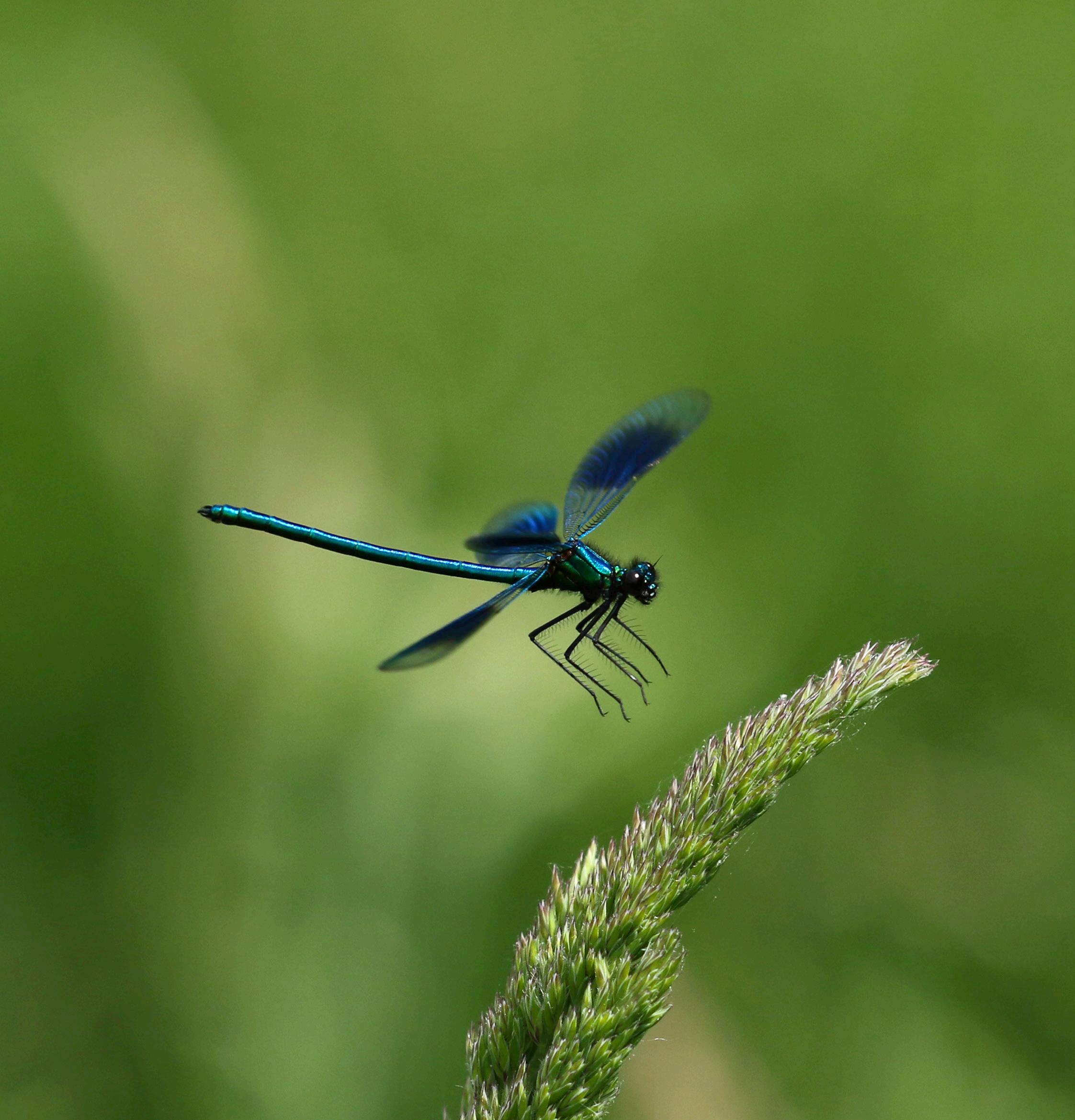

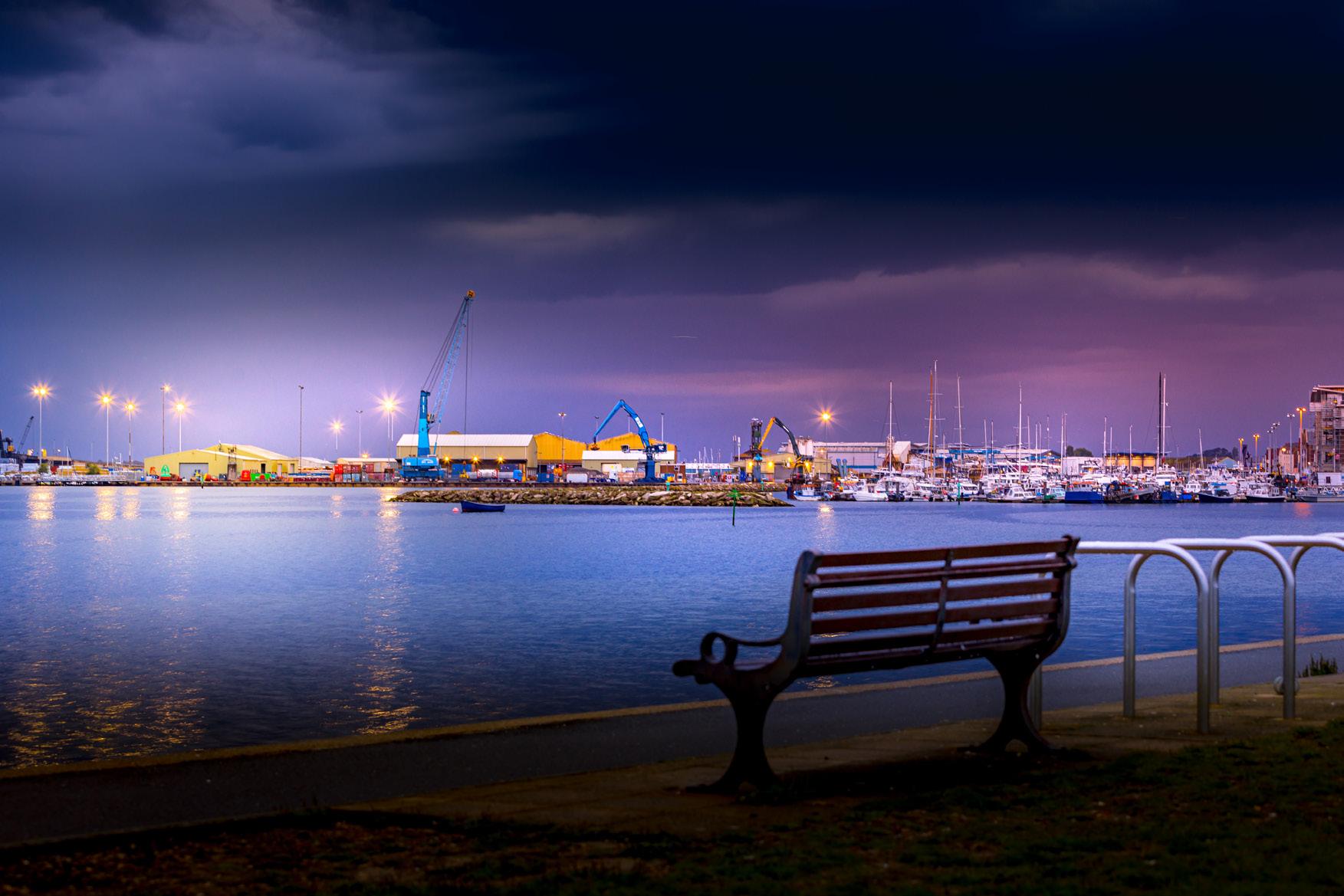
Well folks, we said farewell to astronomical darkness at the end of May, so it will soon be time to turn our attention to the planets in our solar system to explore through our telescopes. Exciting update; I have now acquired some additional equipment including a planetary imaging camera so hopefully I might be able to start capturing some planetary, solar and closeup lunar surface images myself.
Watch this space (yes, that pun was unintentional)!
This month I was planning to share the M13 Globular Cluster, but unfortunately the image I tried to capture didn’t quite cut the mustard. So instead I’m going to share with you this rather impressive supernova remnant captured a couple of months ago.
Last month I shared an image of a brand new supernova just
starting to occur. However IC443, also known as the Jellyfish Nebula, shows what a supernova looks like after thousands of years, with this stunning blast wave of gas and dust.
IC443 is around 70 light years across and 5000 light years from Earth.
This image was captured using my bigger Sky-watcher Newtonian Reflector Telescope and Cooled Astro Camera.
Inevitably, this being the UK, those of us who got up superearly to try to watch the total lunar eclipse in May were thwarted. Mother Nature naturally decided to obscure our view with clouds and rain. However in June we do at least have a chance to see the second supermoon of 2022, which is only one per cent smaller than the biggest supermoon event coming up in July. A supermoon occurs when the moon’s orbit is closest (perigee) to Earth at the same time it is full.
On the 14th of June, the supermoon will hopefully reveal itself, so grab those binoculars or a telescope and have an explore of the detailed lunar surface across the entire visible face of this full moon.
The planets aren’t currently visible in the evening skies, but do wake up early to see a beautiful procession of the planets before dawn.
On the 21st June, the bright
‘star’ seen nearest to the Moon will be Jupiter.
Also on the 21st of June at 10:13am we witness the Summer Solstice. The sun will reach its northerly-most point in the sky, marking the Midsummer’s Day, with the longest period of daylight and shortest night.
On the 22nd June, before dawn, look to the right of the Moon to see Jupiter, with Mars flanking from the left.
On the 23rd June, also before dawn, Mars will switch positions and be visible to the right of the Moon.
On the 26th June, Venus alongside the crescent moon make a picture-perfect arrangement with the Pleiades visible above if observing with binoculars. Mercury will also appear, completing the arrangement to the lower left. Wake up early again on the 27th June (it’s clearly a month of early starts) to reveal a very thin crescent Moon, with Venus visible to the right, and Mercury below.
The summer solstice, also known as estival solstice or midsummer, occurs when one of Earth’s poles has its maximum tilt toward the Sun. It happens twice yearly, once in each hemisphere (Northern and Southern). For each hemisphere, the summer solstice is when the Sun reaches its highest position in the sky (for areas outside of the tropics) and is the day with the longest period of daylight. Within the Arctic circle (for the northern hemisphere) or Antarctic circle (for the southern hemisphere), there is continuous daylight around the summer solstice.
Since prehistory, the summer solstice has been seen as a significant time of year in many cultures, and has been marked by festivals and rituals. Traditionally, in many temperate regions (especially Europe), the summer solstice is seen as the middle of summer and referred to as “midsummer”.

Doug and Lucy reflect on the enormous joy of an ‘I made that!’ moment - even as they teach foals to pick up their feet, and hope they don’t split their stitches
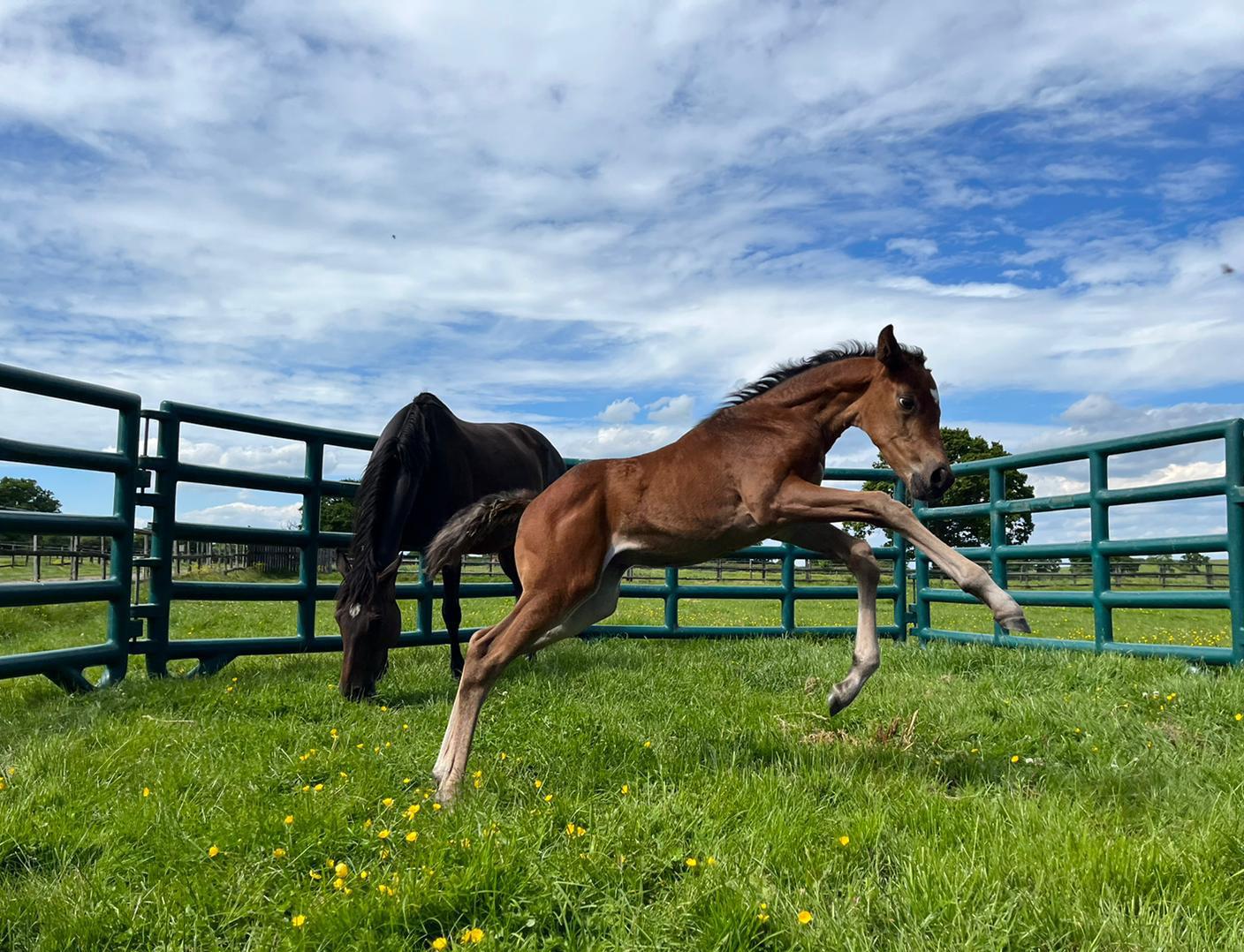
We can’t start this column without mentioning the passing this week of Lester Piggott –probably the greatest jockey any of us will ever see. But what people may not know is that he was also the breeder of a number of successful racehorses, some of which he rode himself: rider-breeder is a far rarer combination than owner-breeder.

At TGS, with the arrival of June, life at the stud changes pace. All but a handful of the mares and foals now live out 24/7, most of our seasonal boarding mares have returned home

to their owners and our two seasonal members of staff have left for the summer. With less to do during the day, I’ve had a flurry of photos of foals wearing caps and having
snuggles with the staff – but none of this is time completely wasted. If the foals are well handled at this early stage, the easier they will be to handle as they mature into half ton, lively
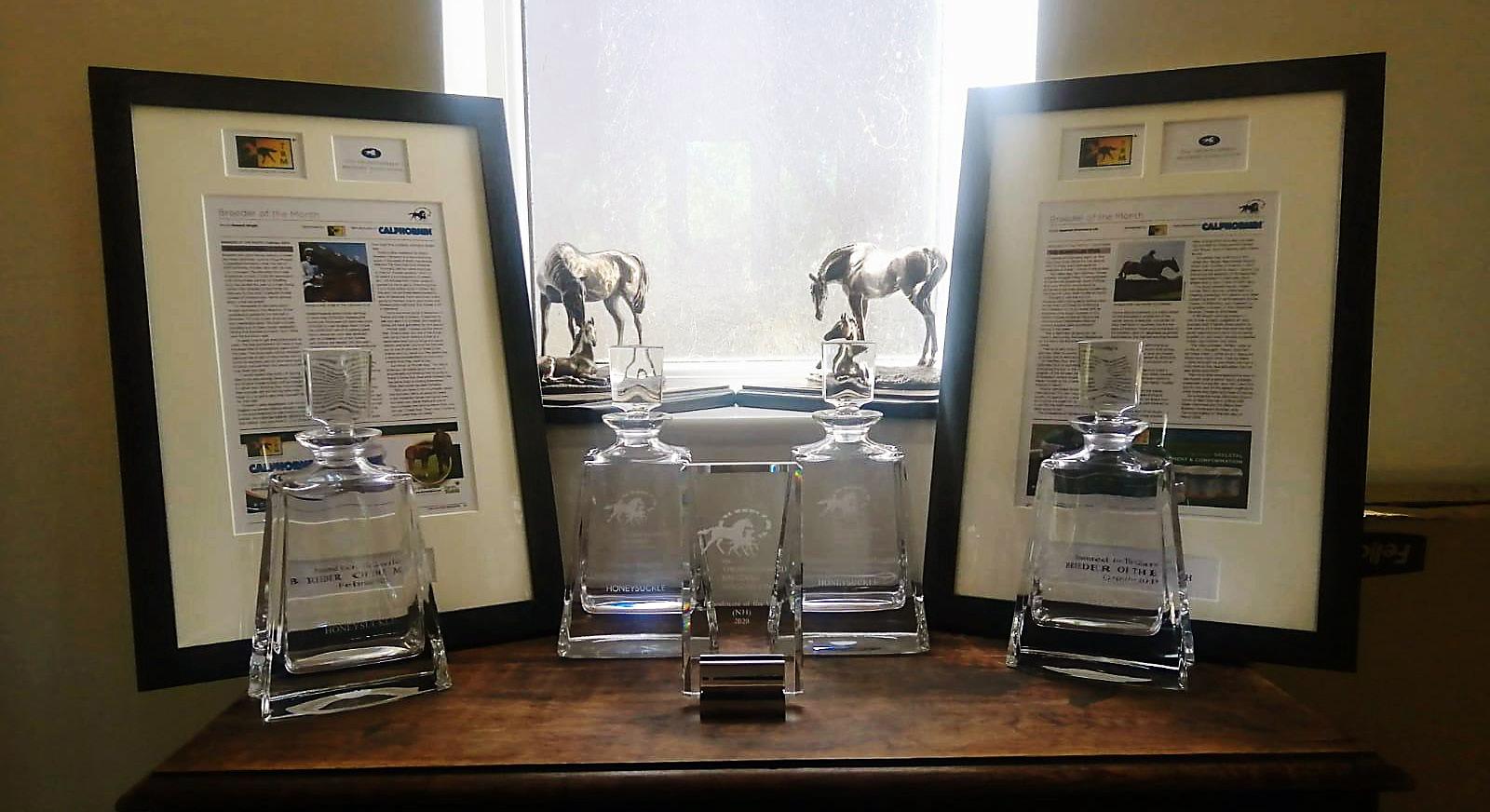
young racehorses.
At TGS this season we’ve welcomed 22 foals into the world, 24 mares have visited their chosen stallion and, at writing, 19 are confirmed pregnant. There are two late mares due to foal at the end of the month and only three mares left to cover.
Doug takes up the story: While checking on how both the foals and the grass are growing (well for both, at the moment) I got to thinking just what do we get out of breeding racehorses?

With a horse like Honeysuckle, what we get out of it is pretty obvious; awards and column inches galore would be a buzz for anyone. But what about the others? A lot of horses never win. In fact about a fifth never even race. So when you do breed a winner it’s quite an achievement. You can think “I made that!”. A lot of other people – bloodstock agents, trainers, jockeys, owners, old uncle Tom Cobley and all, have got to get it right along the way, but still, YOU made it. You chose the mare. You planned the mating. You can remember the gawky youngster and what you thought about its future as a racehorse, whether they might be good. Or not. But for sheer joy and excitement, seeing a horse you bred cross the line in front of all the others, be it carrying your colours or someone else’s, is hard to beat.
The old Churchill quote “there’s something about the outside of a horse that’s good for the inside of a man (sic person?) is doubly so when you’ve bred the horse too. But before we get too carried away dreaming, Lucy
brings us back to earth with the day-to-day ups and downs of breeding.
This month, one of our mares foaled her filly foal while standing up. Normally if this happens there isn’t a problem, but on this occasion, within a couple of days the foal’s stomach was noticeably distended. Our vet identified a potential issue with the foal’s bladder and arranged for a rushed admission to Western Counties Vet Hospital. An internal rupture was identified and surgery carried out.
Now home, although mother and foal can go out during the day, we have to keep them in a small grazing pen for the next month so that the foal doesn’t gallop around too fast and risk splitting her stitches. We can’t stop her leaping for joy, however (see image at the top of article), so we just have

to keep our fingers crossed she doesn’t do any damage!
One of the routine jobs for us is worming, which starts at two months old, and continues bi-monthly until late autumn. We used to deworm monthly for the first year, but professional advice now is to do so every two months, the idea being to give the foals a chance to start building their own natural resistance.
Our main weapon in the battle against worms though is poo picking. We regularly remove poo from fields using poo skips and rakes, before moving the horses to a different field and then
going in with the tractor to harrow and top the grass and rest the pasture for a couple of weeks before grazing again.
Our oldest foals are also meeting the farrier for the first time. It’s a good idea to regularly practice picking up their feet in the stable or field, so that it isn’t a total shock when the farrier turns up to trim their hooves for the first time. Usually the foals are reasonably well behaved for the farrier, but recently one in particular wasn’t interested in standing still with her feet up for rasping. So rather than battle with her we will do daily foot-lifting practice so that hopefully, when the farrier returns in a couple of weeks, she lets him do his job.
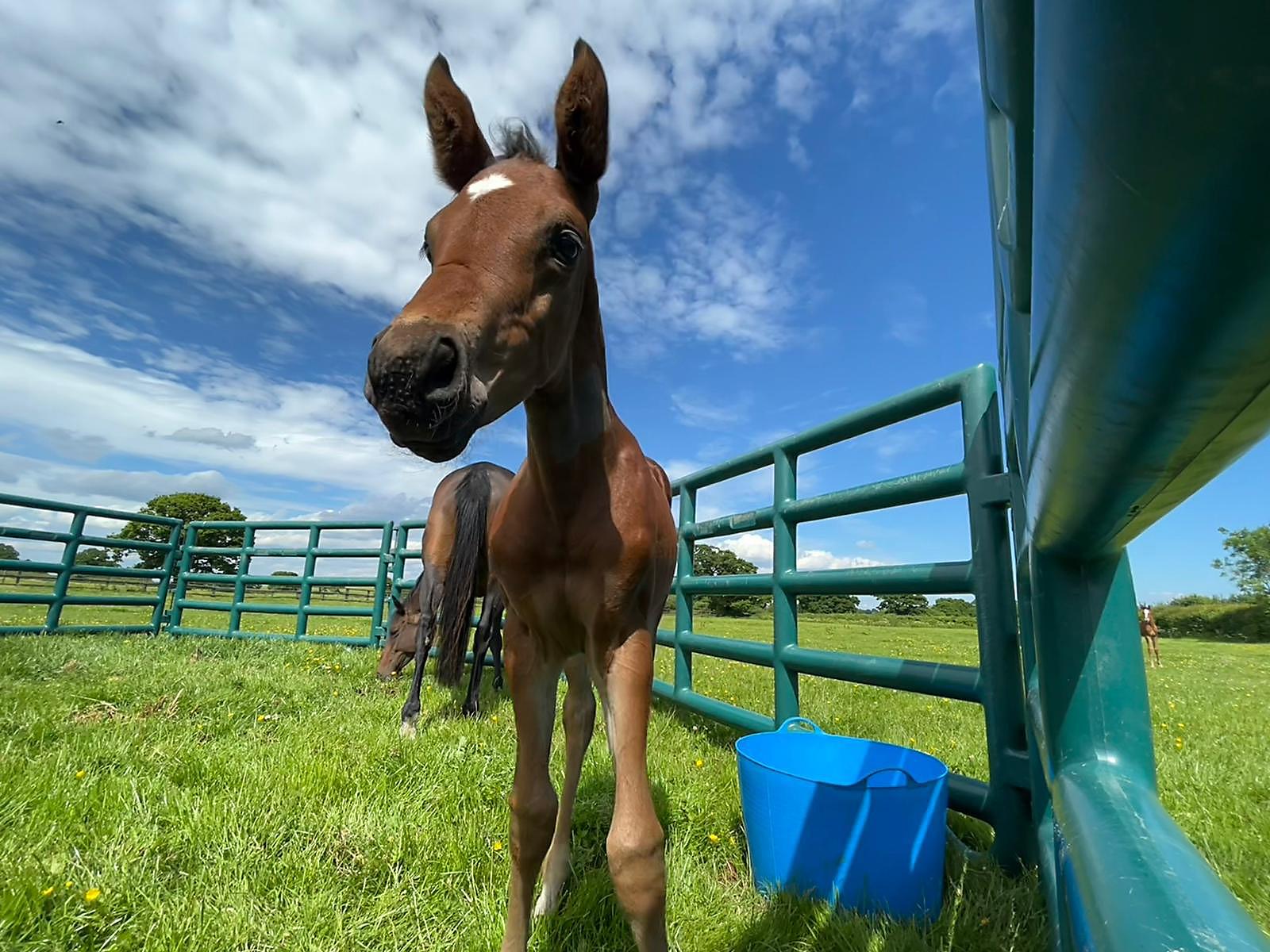
With the Queen’s Jubilee upon us, and we prepare to head on up the hill opposite the stud for the lighting of the Jubilee beacon, we are reminded that her Majesty has herself been a keen owner and breeder of racehorses for most of her seventyyear reign. In fact, her most notable owner-breeder triumphs came in 1977, her Silver Jubilee year, when her homebred filly Dunfermline, won both The Oaks and The St. Leger, two of the five British Classic flat races.





The team at MGAR share the story of Herman, just one of the senior pets they rescue and rehome every year. Do you have room for a senior pet?
Herman is a sweet boy who has suffered far more than any dog should. He is an 11 year old Lurcher and he came into our Lincoln Farm Centre this year as an unclaimed stray.


The staff could see that he has had a hard life. He was emaciated when he arrived, and struggled to walk as he was so drained of energy.
Herman was in desperate need of some love and care. Even though he was in such a poor state, he would always stagger to his feet to greet the staff with a very waggy tail - the team felt he knew he was finally safe. The vet suspected that two of his legs were previously broken and had just been left to heal, which meant that they have not healed correctly and he is a little wobbly when he walks.
Along with his starved body, Herman also had overgrown nails, rotten teeth and pressure sores all over. He was taken for emergency dental treatment where he had 18 teeth removed, as he had track lines on his gums indicating an infection. He also required a second operation for another six teeth to be taken out, as it was too dangerous for him to be under general anaesthetic any longer due to his age.
The cost of Herman’s operations and treatment has already cost over £1,400, with the possibility of this increasing with further procedures. Despite his trials and ailments, Herman is the most wonderful, adoring and cheeky old gent who has stolen the hearts of everyone that has met him.

The cost of providing care is the sanctuary’s largest expense – but we firmly believe it’s necessary. Animals should be able to live a happy and pain free life.
We spend a staggering £2,500 per week on veterinary fees, and for older animals at our centres like Herman, these are usually age-related medical issues.
We all understand how important it is to have some peace and quiet and a safe place to rest, which is what we aim to provide for all pets who find themselves in our care.
It is unsettling for any pet to have their world turned upside down. But in their golden years it can be devastating. We rescue thousands of senior animals and sadly they are often overlooked, which means they spend longer at our rescue centres. Today, we ask you to not look the other way and help with the ever-increasing costs of caring for them. A donation today will truly help, and 100 per cent of every donation goes towards the care and welfare of the animals at our rescue centres.










Some foraging is an easy win, says expert Carl Mintern, but remember not to ignore the weeds when you look for the strawberries and honey June has arrived, with its long warm evenings and the most hours of daylight (is it too ambitious to say sunshine?) that we will see all year. If you have been waiting for an opportunity to do some evening hedgerow harvesting, then wait no longer.

Eat the weed!
Let’s start by talking about ground elder (aegopodium podagraria ) which gets its name because its leaves resemble those of the elder
tree (sambucus nigra). The tender leaves have been used in antiquity and throughout the Middle Ages as a spring vegetable, similar to spinach. It has many names which can tell us something of its traditional medicinal uses against rheumatism and gout (gout weed, goutwort) in the form of a poultice. Around the end of the first century, monks started to include it in their herb gardens so its presence around ecclesiastical buildings
gave rise to other namesbishopweed and bishopwort. First introduced to the UK as a pot-herb by the Romans, it was cultivated as a valuable food plant. It soon spread, and the modern day gardener now spends fruitless hours attempting to get rid of it, considering it an invasive weed. With a similar flavour to parsley, you can eat the young leaves and shoots (before the leaves have unfolded) raw, or add to salads. Alternatively, you can cook young shoots
the same way as you might spinach, by boiling, steaming or frying in butter. They can also be added to many dishes as you would parsley.
Widespread and shade-loving, look for this plant under hedgerows, in woodlandsand in gardens! Look for oval, serrated leaves growing in threes, close to the ground on a stalk which is grooved.


Sweet honeysuckle Next I want to talk about honeysuckle (lonicera periclymenum). This beautifully scented plant can be found in woods and hedgerows throughout the summer. Just look along the tops of hedgerows while travelling through country lanes and you’ll often see the distinctive honeysuckle flowers. And it is these delicious blooms the forager seeks!
These fragrant wildflowers can be used to infuse a sweet, honey flavour into a variety of drinks and foods. Only a few flowers are required to inject the taste of sunshine into water to make a refreshing drink, but they can also be used to enhance ice creams,
jams and jellies. Or, like me, just eat them fresh in salads and as garnishes on any meal. Remember it’s the flowers we are looking to collect – the berries of some varieties can be quite toxic.
Tiny wild strawberries Finally I wanted to mention wild strawberries (fragaria vesca) which can be found in woodlands and on shady ancient banks under hedgerows towards the end of spring and carry on throughout the summer. They are much smaller than the cultivated ones we see in the shops, but that makes the discovery of the miniature fruit all the more rewarding as they are often hiding in plain sight, using only their diminutive size and unassuming habit as cover. They frequently grow in small patches, and sprout tallstemmed, small white flowers before they fruit with tiny, dense berries which burst with an intense flavour – they make up in taste what they lack in size. The fruits tend to start ripening from June onwards. So all that begs the questionwhat are you waiting for?
It takes dedicated picking to collect many tiny wild strawberries, but it is definitely worth the effort. They have an extremely intense, sweet flavour with a hint of vanilla, and the fruit is best eaten fresh on its own, perhaps served with Greek yoghurt, cream or ice cream. Preserve into jams, jellies and syrups or use in muesli and granola mixes.
Ground elder is a member of the carrot/parsley family (Umbelliferae), which also includes poisonous species such as hemlock, fool’s parsley, Satan’s parsley, giant hogweed, etc. In the UK, there is a very easy distinguishing test. Ground elder is the only one with a stem that is triangular in cross section.
 The nymph stage of the speckled bush-cricket, with the moulted skin below the leaf.
Image: Jane Adams
The nymph stage of the speckled bush-cricket, with the moulted skin below the leaf.
Image: Jane Adams
What’s bright green, spotty and loves a bramble bush?
The speckled bush-cricket thrives in shrubs and grasses in hedgerows and woodland edges. Perched motionless during the day, look for speckled bush-crickets at dusk and in the evening on shrubs and in tall vegetation. You’ll need to search as they are excellently camouflaged.
Image is the nymph stage of the speckled bush-cricket -

Image: Jane Adams
As I stand in the middle of a flowerbed in my Dorset garden, I’m surrounded by insects. Worker bumblebees scurry in circles over flower heads, a small-white butterfly floats by like a paper plane, and an armoury of shieldbugs patrol the jungle of shrubs. It’s an idyllic June day. The sort you dream of in the depths of winter when you’re cold and tired. But there’s one insect that’s nowhere to be seen. The speckled bush-cricket. Eventually, long antennae dangling in mid-air give its position away. As I follow the looped tendrils, they
The adult cricket on yellow tansy flowers - the nymphs emerge in May and June and mature as adult speckled bush crickets by mid August
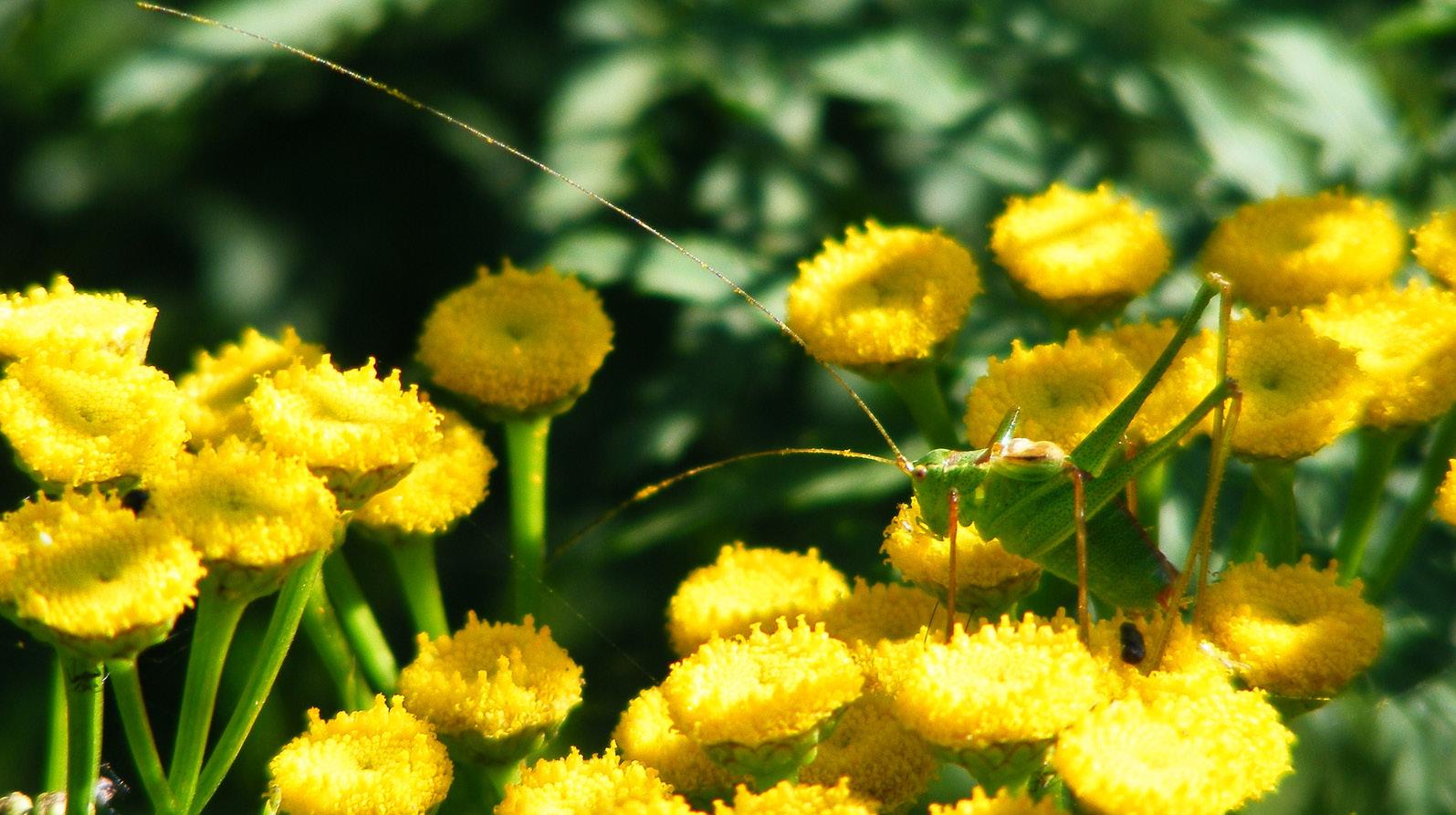
lead me to its speckled body, camouflaged against the leaves of a Michaelmas daisy. It’s tiny. A nymph, less than a centimetre long. As it turns its Jiminy Cricket face towards me, I swear it’s going to break into a song and dance routine. Sadly, it doesn’t. Instead, as I move, its compound eyes follow me, and I’m left wondering just who is watching who. Most of the 23 cricket species we have in the UK are omnivores,
but the speckled bush-cricket is strictly vegan. By gorging on young leaves, it will outgrow its skin and moult several times until it reaches the two to three centimetres of adulthood.
If the one I have found is a male, it will eventually sing to find a mate by strumming the underside of its left forewing with its right forewing - but we won’t hear it. The frequency of its clicking song, and its mates’ reply, are way beyond the limits of our human hearing. Crickets like the heat, so at the moment most species in Dorset don’t seem to be threatened by climate change. However, with so many insects disappearing from our gardens, there’s still a chance they could be next. So, it’s worth taking care of them - turn a blind eye to a bit of plant nibbling and steer clear of pesticides. Maybe then we’ll see this harmless and beguiling insect again next year.
“As it turns its Jiminy Cricket face towards me, I swear it’s going to break into a song and dance routine. Sadly, it doesn’t”Image: Jane Adams

This is an old favourite which we’d not done for a while. I’ve linked the map to the original route (with all its 5* reviews!) but we walked it again this month, and it’s still stunning (you can see all 30 photos on the 2022 the duplicated route here). It’s an up-and-down walk as you cross the hill range and back again, and it took us three hours and 40 minutes at a steady pace. It’s heavy on the spectacular chalk downland valleys, and switches between shady green lanes and expansive views across the Chalke Valley. There are three steady climbs but they are suitably rewarded, I promise, with big skies, and sights across to Salisbury cathedral, coupled with hidden green lanes and ancient woodland. Walk it on a summer Sunday, and you’ll descend from Marleycombe Hill into Bowerchalke to the sound of cricket on the village green. Perfect. Also watch out for hares in early summer - we saw so many on this walk in the middle of May. Easy free parking at the start at Vitrell Gate car park.
The routes we feature have always been created and walked recently by ourselves (See all previously published routes on the website here), so you know you can trust them - we aim for unpopulated routes with as little road and as many views as possible! You can see all our routes (including those not published) on Outdoor Active website here, and all include a downloadable gpx All images Laura Hitchcock
No of course we didn’t just plough through a crop. This farmer is ace - he always places posts wrapped in white plastic along the footpath through this huge field, so you always know you’re where you’re supposed to be (see the white dot over to the right of Courtenay’s shoulder? That’s where the path goes, NOT the wide tractor track over hs left shoulder)
The farm track from the back of Knowle Farm is steeper than it looks here (under the tree and up the hill between the hedges). Grit your teeth and just keep plodding...
It’s a steady pull up Marleycombe Hill... and the steep descent into Bowerchalke isn’t much better

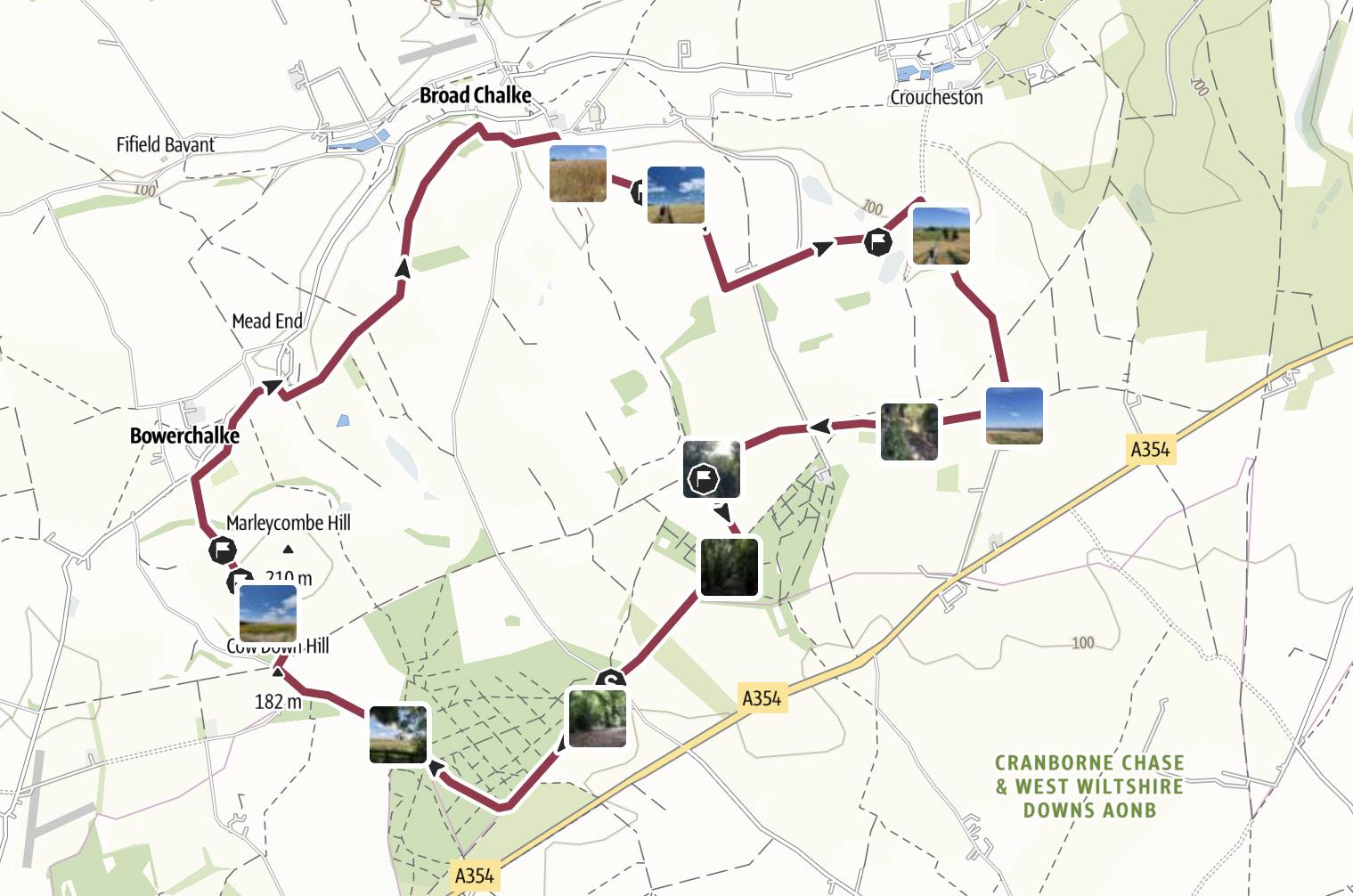
The view from the top of Marleycombe Hill though ...
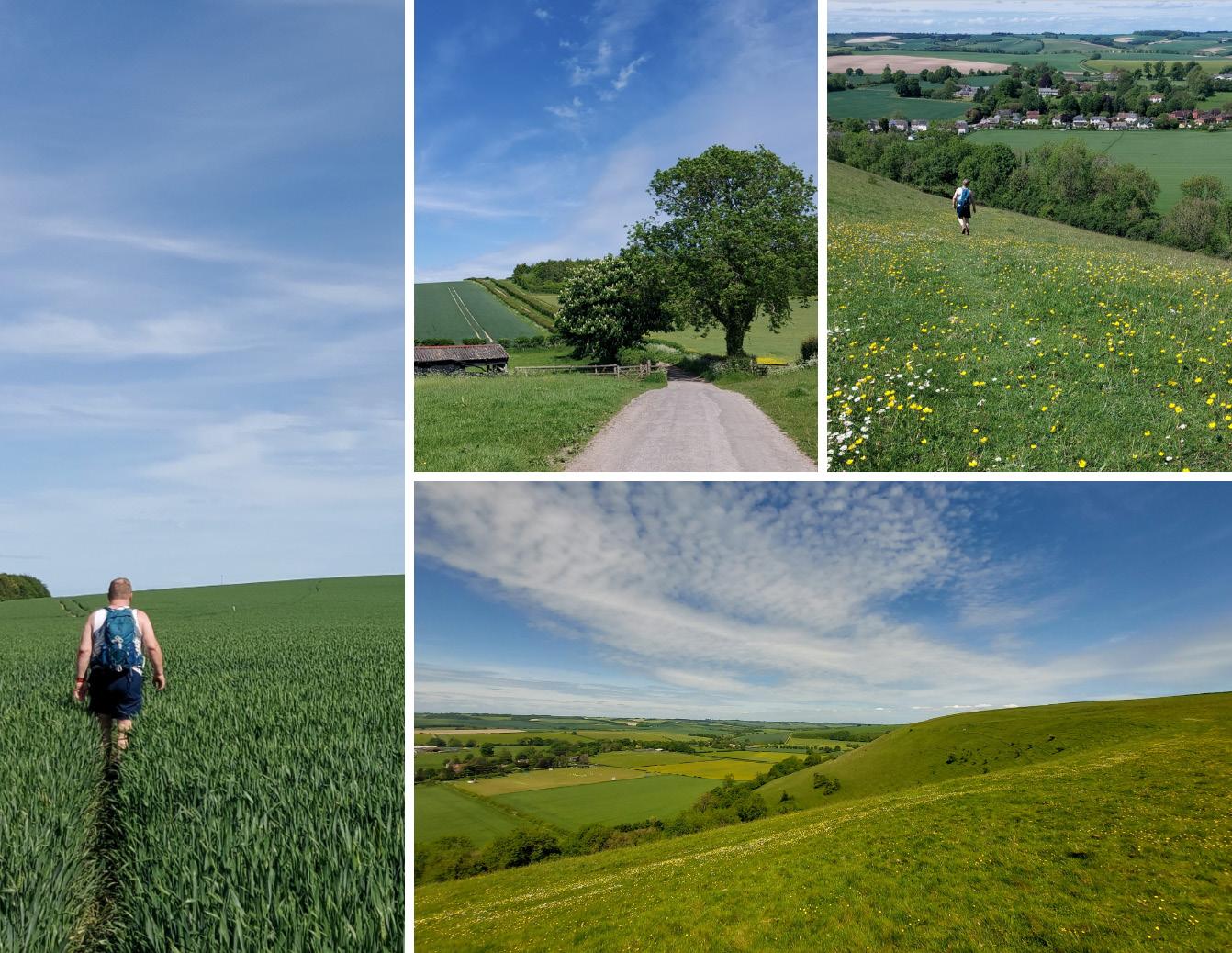
World Bee Day is now a ‘thing’. These tiny little insects get to have their own day in order to raise awareness about the threats made to pollinators by human activities. It has the approval of the United Nations no less, and the first World Bee Day was celebrated on Sunday 20th May 2018. For me, one simple solution would be if we all aim to stop using pesticides in our gardens. By stopping the use of such harmful chemicals we could genuinely make a difference to our bee populations – and all those good insects which in time will come to our gardens and improve them, our environment and the world in general.
Here are some mind-blowing facts about our humble honey bee for you:
• In her (sorry chaps, but they only come in a ‘she’ variety) lifetime she will only make 1/12th of a teaspoon of honey. That’s the life’s work of 12 bees to sweeten your herbal tea!
• She will fly 375 miles and visit 70,000 flowers for that 1/12th of a teaspoon.
• Bees need a varied diet – there have been studies done and like us the more varieties of flowers they visit the better for them.
• A bumblebee’s tongue can be as long as 20mm and they often fly with their tongue extended as they collect nectar (a bit like a dog with its head out of a car window, I imagine).
There are lots of things we can do to help the bee population in our gardens and cut flower patches and in doing this we really can all make a difference.
Bees need to drink water, but can often drown in a bucket or plant pot or wherever water collects. Simply tie a bit of string to the side of your water butt, and the bees can climb up the ‘ladder’.
• Bee hotels
Provide or make bee/insect hotels – there is so much information online about this and it’s a great school holiday project for children.
• Bee-friendly plants
Try to avoid double-petal blooms as bees like an open-faced flower. Foxgloves are like top floor restaurants for bees, especially as the spotted throats of these flowers act as runway markers for the bees to land and they can
• In the UK we have 270 bee species, and almost 250 of these are solitary. Only nine are types of honey bees, but they are all amazingly effective pollinators.

come back again and again as each flower opens up the spire. Lavender and honeysuckle aren’t just human favourites, they are a favourite for bees as well. And please do let that ivy grow on your garden wall, the flowers are a great source of bee food when there is not a lot else flowering.
If you visit your local garden centre they will have an area of pollinator-friendly plants to give you inspiration, along with lots of ideas on how you can help.
• Let the wilderness in If, like me, you have an embarrassing corner of your garden where the nettles have taken hold why not admit defeat? Leave it for the butterfly caterpillars of Red Admiral, Small Tortoiseshell, Painted Lady and Comma. By stopping the use of pesticides in your garden, over time it will benefit from more birds as they come to eat the bugs and the circle of life continues ...
Charlotte offers workshops through the year - please see northcombe.co.uk for further details.
Even the UN recognises World Bee Day – Charlotte Tombs shares some beewitching bee facts and how you can make a difference.Image: Charlotte Tombs
Since 1900, the UK has lost 13 species of bee, and a further 35 are considered under threat of extinction. None are protected by law. Across Europe, nearly one in ten wild bee species face extinction.
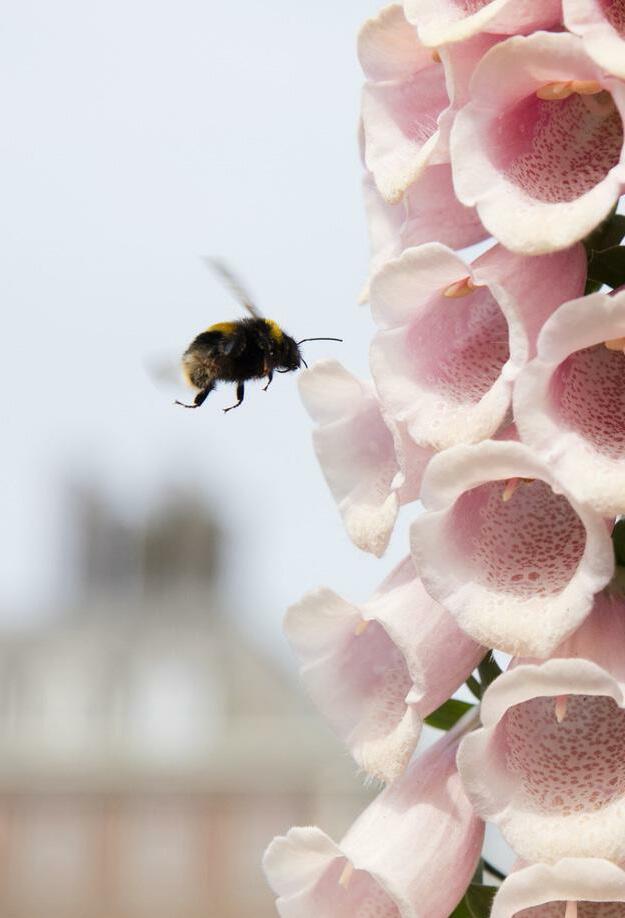
Roses are one of the oldest flowers – archaeologists have discovered rose fossils that date back 35 million years. The oldest living rose is 1,000 years old, and grows on a wall on the Hildesheim Cathedral in Germany.

The glasshouses and polytunnels at Thorngrove are bursting with colour now, and Kelsi-Dean Buck is celebrating the start of rose season
Isn’t it April that’s supposed to be full of showers? May was flipflopping on us here in Gillingham with scorching sun one day, and torrential rain the next. The fun never stops when it comes to the weather in England. At least we have weather though, right? I’m not sure having the same climate all year round sounds all that interesting to be honest, and as far as our gardens are concerned, too many dry days and we’re out there doing a rain dance anyway! We’re welcoming June and the approaching summer, and it’s now the time of year when you should be thinking about increasing the watering of your plants. Even on the more overcast days, the warmth will see them being more thirsty.
Busy days June in Thorngrove is, in a word, cramped! But in the best way. There’s barely enough space to contain the range of plants we have in right now, and it seems as soon as some space is cleared in the glasshouses or
polytunnels, new plants take their place ready to be nurtured. An almost endless list is coming into flower, meaning the courtyard and glasshouses are brighter than ever… plus, the first roses have officially bloomed! The first two weeks of June should see even more of them making themselves known and we cannot wait until they’re fully on display, as usual reaching for that spotlight. It really does take your breath away when they’re all flowering.
The roses are here Always one of our most popular plants, the roses are a major draw at this time of year. It’s always when they’re fully in bloom that customers tend to pick them up, so don’t miss out! That being said, we wanted to
shine a bit of that proverbial spotlight on some of the other seasonal plants which may be overshadowed by the stunning rose season. There’s such a diverse range to fill your borders, beds, and planters with, including some stunning lilies, dianthus, clematis, geraniums, begonias, chrysanthemums, gaillardias, as well as a brilliant selection of lush Heucheras. And I’ve not started on the trees and shrubs to fill those corners of your gardens or line your walls. Honestly, we could do a fourpage spread highlighting what’s looking good right now.
Stop by Thorngrove in June and get your summer garden looking the best it can possibly be. We’re on hand for advice as always, and look forward to seeing you!

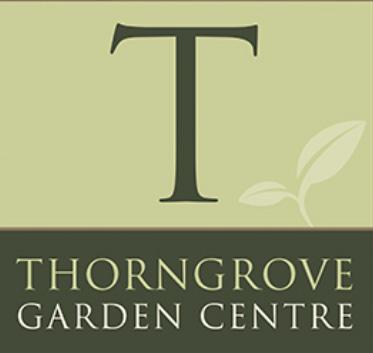

Growing from seed always has an element of risk – Barry Cuff shares his challenges this month, along with the wide variety of veg he’s bringing on, and his weevil battle
May is always a busy month on the plot and one of the main sowing times. We always like the challenge of raising our vegetables from seed rather than buying plants from a garden centre. Raising from seed can be a challenge – but it is so much cheaper. Most seed packets contain enough seed for at least two years, and if stored correctly they do retain their viability.
Our allotment association is a member of the South West Counties Allotment Association which enables us to buy flower and vegetable seed at a fifty per cent discount, with a choice of seeds from Suttons and Kings Seeds.


We always sow more than we need to cover losses on the plot, and any surplus young plants are given to neighbouring plot holders.
This is what allotmenteering is all about – sharing and swapping with friends.
Vegetables raised in modules during the month include
cauliflowers, broccoli, romanesco, courgettes, cucumbers, squash, gherkins, sweetcorn, French beans and runner beans. For the first time we only managed to raise 25 Swift sweetcorn plants from a packet of about 50 seeds. A second packet of the same variety was bought from a garden shop, and these were more successful; enough to complete a block of about 50 plants.
During the month we planted out the first sown sweetcorn, Brussels sprouts, runner beans, French beans, gherkins and courgettes. Sowings were made of carrots, Beetroot, peas, mangetout and snap peas.
We look forward to digging our first new potatoes early in June.
Weevil has again been a problem with our peas, taking out many seedlings before emergence, but we have replacement seedlings to fill the gaps.
Pigeons are becoming a major problem on the site, with all plot-
In the wild, bastard balm is an uncommon plant, found only in south west England, the New Forest and south west Wales. It grows in ancient woodland and old hedgebanks where it finds a spot in dappled shade. It has been lost from many sites where coppicing no longer takes place or where the flail has replaced hedge laying.
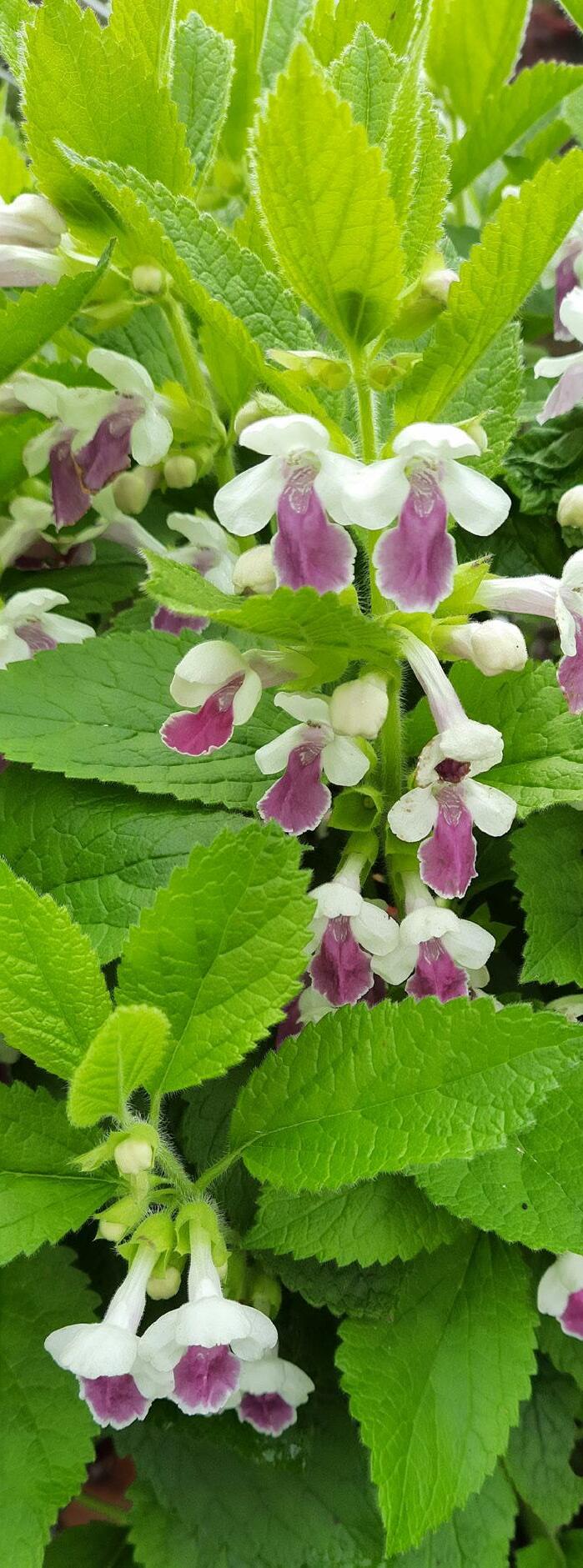
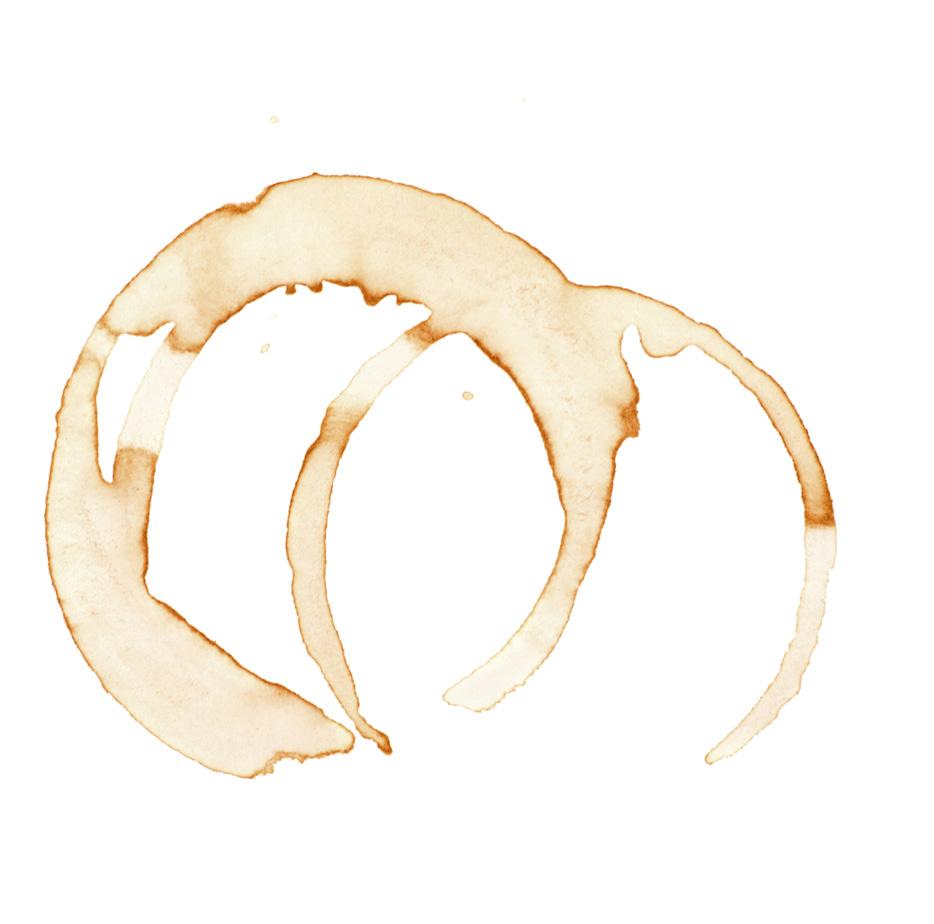
holders having to erect nets over their young brassica plants. The council does not allow shooting on their land so it has to be netting or some type of silent scarer.
With rain falling on about 12 days this month, plants, seedlings and weeds have made good growth. Weeding can be a back-breaking job, especially among young seedlings where the hoe will not go!
In the small area for flowers both Californian poppy and bastard balm have kept the bees happy.
In June, the garden really begins to bloom, says Pete Harcom. There are maintenance jobs to be done – but don’t forget to sit and enjoy it too!
June should be a month of calmer and warmer weather. Flowers in bloom now will include lonicera (honeysuckle), potentilla, iris, dianthus, astilbe, cistus, roses, early clematis, sweet peas (if you started them early), geraniums, weigela and wisteria to name a few. If you want a quick boost to an empty bed, now’s a great time for a visit to a garden centre to pick up some instant colour. The garden will be vigorously growing now, so here are just a few ideas to help keep on top of things …
Use blinds or shade cloth or apply shade paint on the external side of greenhouse glass to prevent overheating. Remember to open vents and doors on warm days – automatic window openers are a real bonus at this time of year.
Now is the time to get into beds and hoe and/or hand pick annual weeds before they get out of hand. Keep deadheading (particularly roses) to remove faded blooms and help continue their display.
Plant out summer bedding,
The hot, dry conditions caused by direct sunlight coming through greenhouse glass in spring and summer can scorch plant leaves, encourage pests such as red spider mite and lead to the patchy ripening of greenhouse crops such and tomatoes and peppers. Greenhouse shade paint is easy to apply to the outside of the glass as and when you need it. It’s shower resistant and effective, but remember to wash it off again towards the end of the season.

including potting-up hanging baskets. This is probably the last chance to plant shrubs, as the soil will be heating up now. Ensure you water them well and monitor. If your garden has a south-facing area this may be a time to consider growing some plants from warmer climates –agapanthus, evergreen jasmine (trachelospernum jasminoides), stone pine (pine nut trees), or perhaps Italian privet (ligustrum) and Mediterranean fan palms.
Now is the perfect time to take softwood cuttings of many shrubs, including lavender,

fuchsia, philadelphus and forsythia. Collect healthy shoots from the tips of plants and make 5-10cm long cuttings. Slice through the stem below a pair of leaves and remove the lower set of leaves. Simply push into a small pot filled with gritty cutting compost and place in a shady part of the greenhouse or a windowsill propagator until rooted.
Start sowing perennials and biennials such as wallflowers and sweet williams for flowering next spring and summer. Sow seeds of polyanthus and winter pansies in trays, cover with vermiculite and place in an unheated propagator. You can then plant out into their flowering positions in autumn.
In Greek mythology, Iris was a messenger from the gods who travelled to earth on a rainbow. Wherever she stepped, flowers sprang up. Iris means rainbow; appropriate when bearded iris comes in colours from pure white to purple/black, and nearly every color in between.
Feed fuchsias, petunias and any other flowering pot plants once a week to boost flowering. Use a high potash liquid tomato feed, and start once you notice flower buds forming; continue though to the autumn when the plants run out of steam.


The brown hare is Britain’s fastest land mammal, clocking speeds of up to 40mph. The expression to ‘kiss the hare’s foot’, meaning ‘to be late’, alludes to the hare’s great speed and the notion that, if you hesitate, it will have gone and all that will be left is a footprint.
Image: Alan Wicks
Hares don’t seem to become an issue, reflects Dorset NFU county chairman George Hosford, but beavers (and, surprisingly, Jeremy Clarkson) pose far tougher questions – and there don’t seem to be any easy answers
Seven or eight hares constitutes grazing pressure equivalent to how many sheep? When does the hare population shift from “I like to see a few of them about” to “I might have to consider doing something about them”?
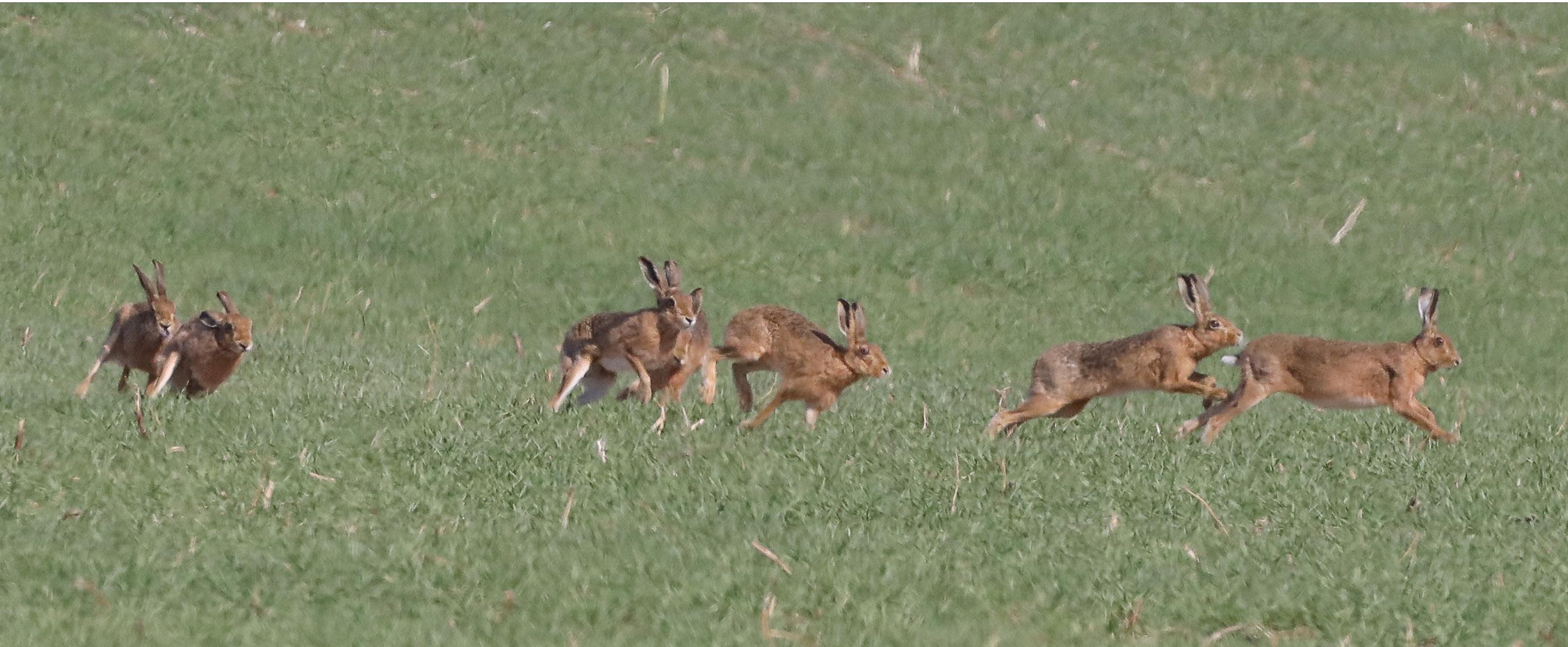
But when our friend Alan Wicks can produce photos like the above, I just want to celebrate. They look like a bunch of greyhounds racing hell-forleather around a track, but what would the hares be chasing? A stuffed whippet on a piece of string?
I think they are just doing it for the sheer fun. Alan tells me that he has seen them rough and tumbling in a heap sometimes. I know that some areas suffer from much larger numbers of hares than we do, and that action does indeed need to be taken, but here, hare numbers have been low to modest for as long as I can remember. What is the key factor that limits them? There is, after all, no shortage of food. Has it been due to the
presence of too many predators of the leverets, like buzzards and crows? Or is it that we have been too successful in controlling small weeds in crops, which I have long understood are vital for the survival of young groundnesting birds? Surely a young hare can graze on wheat from the day it’s born? As farmers it is very difficult to get the right balance between a few weeds sufficient for skylark and lapwing chicks, and a wipe-out of a crop due to runaway weed infestation. The chemicals we use are very efficient at their job, and if you use reduced rates you risk encouraging resistance to the sprays in the weeds.
All too often when walking, biking or paddling along local rivers, one comes across weirs and sluice gates that are woefully neglected. How much of the

flooding that so many tears are shed over – and millions of pounds spent clearing up after –could be saved if the rivers were better managed? Current river policy seems to revolve roughly around re-wilding. Oh, and let’s bung in a few beavers for good measure, there won’t be any flooding then.
How long before a dislodged beaver dam gets washed down to a dodgy old bridge, turning it into a bigger dam, causing flooding upstream, or a tsunami downstream, following its collapse?
I am sure those responsible for intelligent advanced planning have borne all this in mind before launching into the Great Beaver Release Gamble that is approaching; at least five such releases are planned for Dorset. Noone seems to operate the precautionary principle any more. There are numerous
“what would the hares be chasing? A stuffed whippet on a piece of string?”
tales of beaver trouble from Scotland, where, as so often, they are ahead of us in this game, but has any notice been taken? Apologies for all the questions this month – but does anyone have any answers (oops, there’s another)? Luckily for me, I live on a hill.

Mother knows best

The school visit season has now begun, and so far in pretty co-operative weather. Sometimes a group will bring a picnic, after which they will enjoy running or rolling down a nearby hill, before resuming their tour around the farm, asking plenty of questions along the way. Didn’t Mother always say you should let your lunch go down before such exertions?
Clarkson’s got a point
Whatever you might have thought of Jeremy Clarkson in the past, since he began sharing with his huge audience the trials and tribulations of learning to farm, he has surely been a force of good for the industry. His first
series from his farm Diddly Squat was highly entertaining, and brought tales so familiar to longsuffering farmers to the attention of the population at large.
His piece in the Sunday Times today, 15th May, is worth looking up (read it here - the Times has a paywall, but there’s a month free trial and it is well worth a read - Ed) - he is publicising, in his usual entertaining style, what our NFU President has been trying so hard to ram home to our wise and wonderful (apparently clueless) leaders for months, since the war began in Ukraine, about the impending crisis in food prices and availability around the world.
What he doesn’t get around to is pointing out all the micro-decisions we are making at farm level to control risk and to preserve our livelihoods, which are very likely to result in reductions in production. Speaking to many farmers it is easy to find those who have reduced their usage of
fertiliser this year, accepting that output may fall. This year could be OK - many bought fertiliser at what now seems giveaway prices, and we can currently sell grain, milk and meat at prices well above where we were a year or two ago (with apologies to pig and chicken farmers). Ask about next year though and you get blank looks all round. How do we make sense of such a huge change in circumstances? Should we buy (very expensive) fertiliser for next season now, if we can get it, and back it up with cracking forward grain prices? Unfortunately that doesn’t work in the meat markets. Or do we wait and see? In terms of the environment and climatedamaging emissions, it couldn’t be a better time to rein back on fertiliser applications and test the result. With the ongoing war though, shortfalls in exports of grains from Russia and Ukraine are suggesting the opposite should be done. At farm level, I suspect we are likely to be cautious, with production likely to fall.
The Eurasian beaver is native to Britain and used to be widespread in England, Wales and Scotland, but was never known in Ireland. They became extinct in the 16th century, mainly because of hunting for their fur, meat and castoreum, a secretion used in perfumes, food and medicine.
There have been more than 200 formal beaver
projects (plus numerous unofficial releases) in more than 26 European countries and their ecology and management is well-studied.
Ask about next year though, and you get blank looks all round. How do we make sense of such a huge change in circumstances?
I am sure those responsible have borne all this in mind before launching into the Great Beaver Release Gamble in Dorset.
As the pig crisis is ignored, the poultry crisis deepens and the supermarkets refuse to budge – Andrew Livingston fears a difficult future for farming
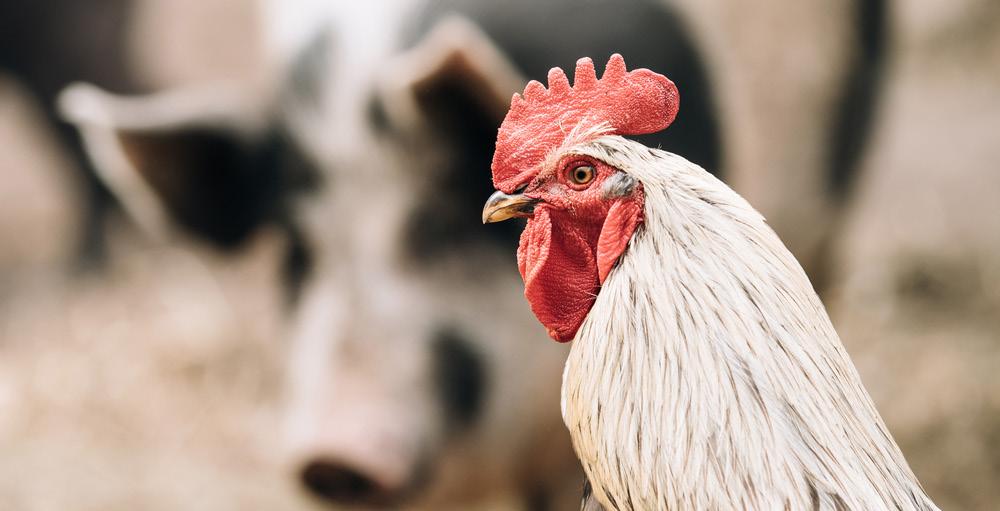
You don’t have to be a fortune teller, clairvoyant or medium to know that things aren’t looking good for the future of farmers. The signs have been pretty obvious over the last year that certain sectors in agriculture are on a downward spiral.
Late last year (BV, Nov 21) I wrote of the serious issues in the pig industry that had led to farmers protesting about the lack of action from the government. Farms went out of business. It was a dire situation. Yet to this day, pigs are still sitting on farms waiting to be killed and butchered – the NFU stated in March that 40,000 pigs had to be culled and ‘thrown away’ because of a lack of butchers to process them. The additional seasonal workers sent over did little to save the situation. The meat processing industry says there is a shortage of about 10,000 butchers.
The diverse nature of farming means that agricultural managers and farmers in other sectors can sit back and say, “Not my problem.” But it’s the wrong attitude. Sticking your head in the expensive grain isn’t helping.
Farmers can look to history for guidance – and surprisingly to Nazi
Germany (stay with me on this).
A famous poem from German Pastor Martin Niemöller explains why silence is as bad as being complicit:
“First they came for the socialists, and I did not speak out - because I was not a socialist. Then they came for the trade unionists, and I did not speak out - because I was not a trade unionist.
Then they came for the Jews, and I did not speak out - because I was not a Jew.
Then they came for me—and there was no one left to speak for me.”
As with the socialists, the crisis in the pig industry continues (without headlines), but it is the egg industry’s head that currently rests on the chopping block.
Supermarkets are adamant that they will not pay more for the eggs on the shelves as they believe their consumers won’t either.
The industry met at the annual Pig & Poultry Fair in Stoneleigh last month and the British Free Range Egg Producers Association invited representatives from eight of the major retailers for a crisis summit.
Not only did none of the retailers attend, only Tescos and Morrisons

even bothered to reply and engage in conversation. Free range farmers are asking for 40 pence a dozen extra – just to be able to survive. Supermarkets argue that shoppers won’t want to pay 40p extra for their eggs, while market research from the egg industry disputes this.
But retailers will soon have to pay more than 40 pence extra. Farms ordering new pullets since the war in Ukraine are already downscaling, and some are simply not bothering to place birds at all due to the costs.
As fewer birds are placed now, fewer eggs will be in the market in the future. Bird flu last winter wiped out hundreds of thousands of hens in the UK, meaning that egg numbers are already low. Eventually, the number of eggs in production will be so low that supermarkets could be embroiled in bidding wars for anything to sell on their shelves – and will naturally pass the additional cost to the consumers.
I can’t see the future, but as an employee in poultry, I can see the worrying signs of what’s to come for the egg industry. Once we have all packed it in … you have to ask yourself who is next?
Few sites in Shaftesbury have seen a greater variety of uses over the centuries than the present-day Post Office at Angel Square.
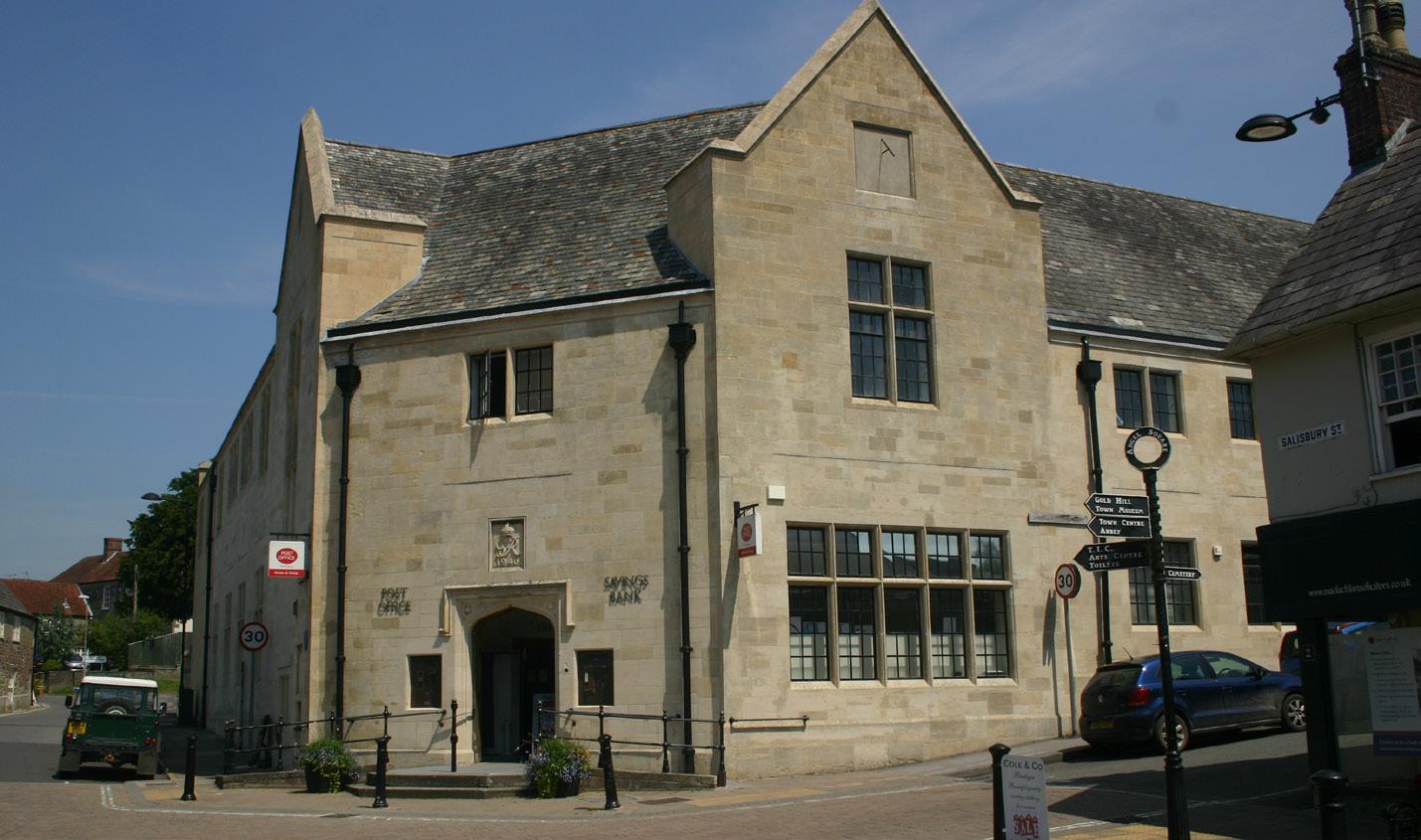
As a blue plaque erected by Shaftesbury and District Historical Society reminds us, the location at the corner of Angel Lane and Coppice Street takes its name from an early role as the site of the Angel Inn. It was also the home of the hilltop town’s first postmaster in about 1667.

A later building hosted a coachbuilder’s, after that it became
a car repair workshop, and the present Post Office opened in 1946.
My early 20th century picture (above) shows the site during its incarnation as Philip Short’s coachworks. Signs on the wall advertise Shell, Pratt’s petrol and Vacuum Oils.

This suggests that, as well as making horse-drawn carriages and gigs like the one pictured, Shorts were also catering for Shaftesbury’s first motorists.
The coachworks included workshops, stables, showrooms and
a residence, which may explain the young children and terrier dog on the far left of the picture. Perhaps they were the owner’s family. The employees alongside them would have included smiths, bodymakers, wheel-makers and painters. A sundial high on the Post Office wall is the only survivor of the pre-war complex. It was originally erected in memory of Dr Evans, who was fatally injured in a tragic accident at this spot in 1897.
The 36-year-old Shaftesbury GP was driving his four-wheeled carriage when his horse bolted, overturning the vehicle and throwing him against a wall. He suffered a fractured skull and broken thigh, and died 12 hours later.
Dr Evans’s seven-year-old son was also thrown from the carriage but landed on his father and escaped with bruising.
The Rev. Thomas Rackett is famous for his interest in science, archaeology and antiquaries but did he neglect his churchgoers? Roger Guttridge reports
It was November 1828 and in two parishes near Blandford ripples of discontent were spreading among the faithful. Someone felt strongly enough to take their feelings about the Rev. Thomas Rackett, Rector of Spetisbury and Charlton Marshall, to a higher authority.
On November 10, the Bishop of Bristol wrote to Rackett over the ‘great complaint’ he had received.
The unidentified complainant alleged that the clergyman was ‘never at home’; that his curate lived at Blandford; that ‘all’ the parishes’ children attended a non-conformist meeting house, as there was no church school; and that ‘many converts’ were heading for the Catholic Nunnery and Chapel. Converts to Catholicism? God forbid! Rackett reassured the bishop – but his troubles had barely begun.
The vicar’s never here Four months later, in a speech in the House of Lords, the Marquis of Lansdowne accused the £750-a-year rector of ‘residing in London’ for the last 30 years, during which time there had not even been a resident curate at Spetisbury or Charlton Marshall.
As the Lords debated the controversial Catholic Emancipation Bill, and with the Bishop of Bristol among his audience, Lord Lansdowne cited Rackett as an example of Church complacency.
In a speech reported in several newspapers, he claimed the ‘real cause’ of any growth in Catholicism in that corner of Dorset was ‘the want of
efficient discharge of clerical duties on the spot by a resident clergyman’.
In a further complaint in July 1829, the bishop was told that Rackett ‘scarcely ever’ resided in his rectory, that there was still no church school and that ‘a large Catholic Church is now building in your parish’. Rackett continued to protest his innocence, claiming he had lived at Spetisbury Rectory ‘every year’ for 40

years, although admitting that ‘circumstances of a private domestic nature’ had caused his absence ‘at various times’.
Given the absence of his signature from the parish registers for months on end, year after year, this appears to have been something of an understatement.
Of the alleged drift to Catholicism, Rackett claimed that of 108 Spetisbury families, ‘five or three’ had always been
connected with the village’s Convent of Augustinian Nuns while two other families and six individuals had been ‘induced to embrace the Catholic religion’.
There is no evidence that Rackett received more than a few written reprimands.
But there’s no doubt that his lengthy stays in London enabled him to indulge his passions for physics, chemistry, botany, geology, heraldry, archaeology and antiquities. His parishioners’ loss was posterity’s gain, for Rackett, who died in 1841, left more than 50 years’ worth of correspondence with friends who shared his interests.
First published by the Dorset Record Society in 1965, these letters have now been reprinted with additions as a smart new hardback.
It includes several drawings by Rackett, who was no mean artist and who provided some of the sketches for the second edition of Hutchins’ History of Dorset.
These included pictures of the old Rectory at East Stour, where Henry Fielding (1707-54) wrote most of his acclaimed novel,
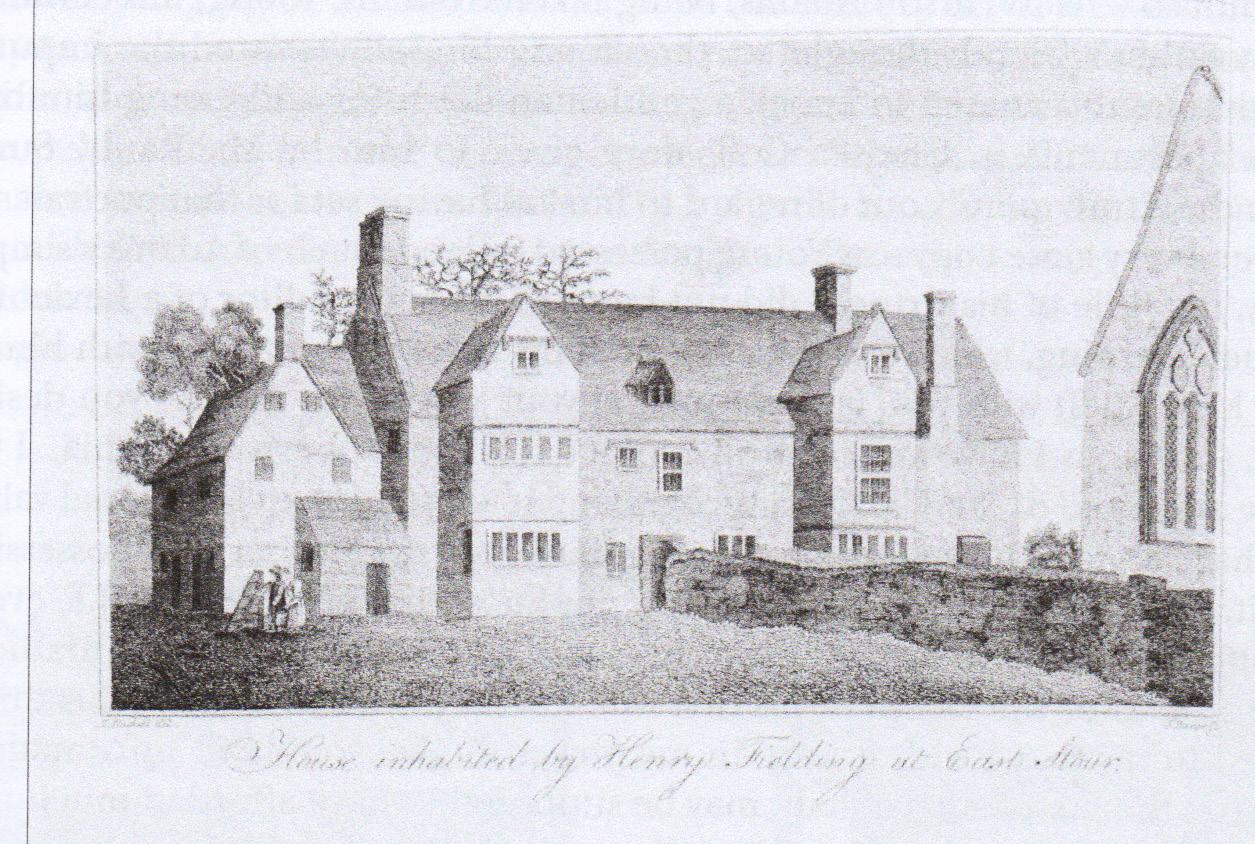
Tom Jones. The house has since been demolished and replaced by Church Farm.
In 1802 Rackett corresponded with Allen Fielding, one of five children born to Henry Fielding and Mary Daniel, the former maid of his first wife Charlotte. Mary was already pregnant when the novelist controversially married her just three weeks after Charlotte’s death.
As well as discussing the origins of characters in his father’s novels, Allen revealed that the East Stour house was given to his grandparents as a wedding present by his grandfather Edmund Fielding’s wealthy father-in-law.
Letters to Rackett’s wife and daughter, both called Dorothea, also feature in the collection. Dorothea Jr (Mrs Solly) was a friend of Mary Anning, Lyme Regis’s famous fossil hunter.
In June 1844 Mary reported that there had been no great storms or landslips the previous winter and hence few fossils exposed. Lyme had, though, experienced a ‘tremendous fire’, which had destroyed 52 houses including three inns, plus ‘the old clock that had stood for centuries’.
• More next month.
“From his quiet country parish at Spetisbury in Dorset, the Rev. Thomas Rackett corresponded with a wide-ranging variety of friends and contacts between 1786 and 1840.
Fellow members of the Royal Institute wrote about experiments in physics, chemistry, engineering and the emerging science of electricity, Sir Richard Hoare wrote to him about archaeological exploration, and friends from abroad sent news from as far as South Africa, Canada and Russia. Rackett’s interests included botany, engineering, heraldry, prehistoric and Roman antiquities, geology, shells and conchology, barrow-digging, Greek and Roman coins and methods of engraving. He was personally involved in many of these activities and his correspondents wrote to him for advice and to exchange opinions. His wife and daughter contributed to the scientific, literary and historical discussions and come across in these letters as intelligent and well-read members of a society that accepted them as intellectual equals. The Thomas Rackett Papers was first published by Dorset Record Society in 1965 and this new edition includes correspondence with Mary Anning, who was a friend of Rackett’s daughter.”
Copies of the Thomas Rackett Papers are available by post from the Hon General Secretary, Dorset History Centre, Dorchester DT1 1RP (£14.95 + £2 p&p – cheques only) or in person from the Dorset History Centre.
roger.guttridge@btinternet.com
Over the past 200 years, many items have been produced to commemorate royal events. However, it has only really been since 1897, when Queen Victoria celebrated her diamond jubilee, that items were mass-produced. For collectors, the best to look out for are the early commemorative ceramics celebrating Queen Victoria’s coronation in 1837 and any previous royal events. These are increasingly rare.
It has always been popular to obtain a mug to mark these events – I still have my 1977 Poole Pottery mug from the Silver Jubilee – but these do survive in vast numbers. I think most of the population has one!
When King Edward abdicated in 1936, most of the commemorative items had already been produced. Mugs, ceramics and tins were all ready for sale, but were then sold off cheaply, mainly to staff who worked for the producers at the time. I have a tin which my great aunt gave me in 1980. She hoped it was rare and valuable, but

many survive. I still have it to this day and when I see it in my tin collection I remember her fondly.
Start collecting Royal commemorative memorabilia is certainly an area which is accessible to all. Mugs and ceramics from the 1953 coronation can be purchased for less than £5. Why not start your own collection? Spoons, thimbles and plates are always available for only a few pounds. Most ceramic and glass factories produced commemorative items and some of the finer factories produced quite exclusive limited edition ranges of wares. These now certainly fetch a premium.

It’s no secret that at Sherborne Antiques Market we pride ourselves with our window displays (see picture below) – and yes, we love a patriotic window! We have enjoyed our Platinum Jubilee displays and have appreciated all the positive comments we have received.


The
Platinum Jubilee might just be the perfect time to start collecting your own royal commemoration antiques, say experts Craig Wharton and Philip Traves
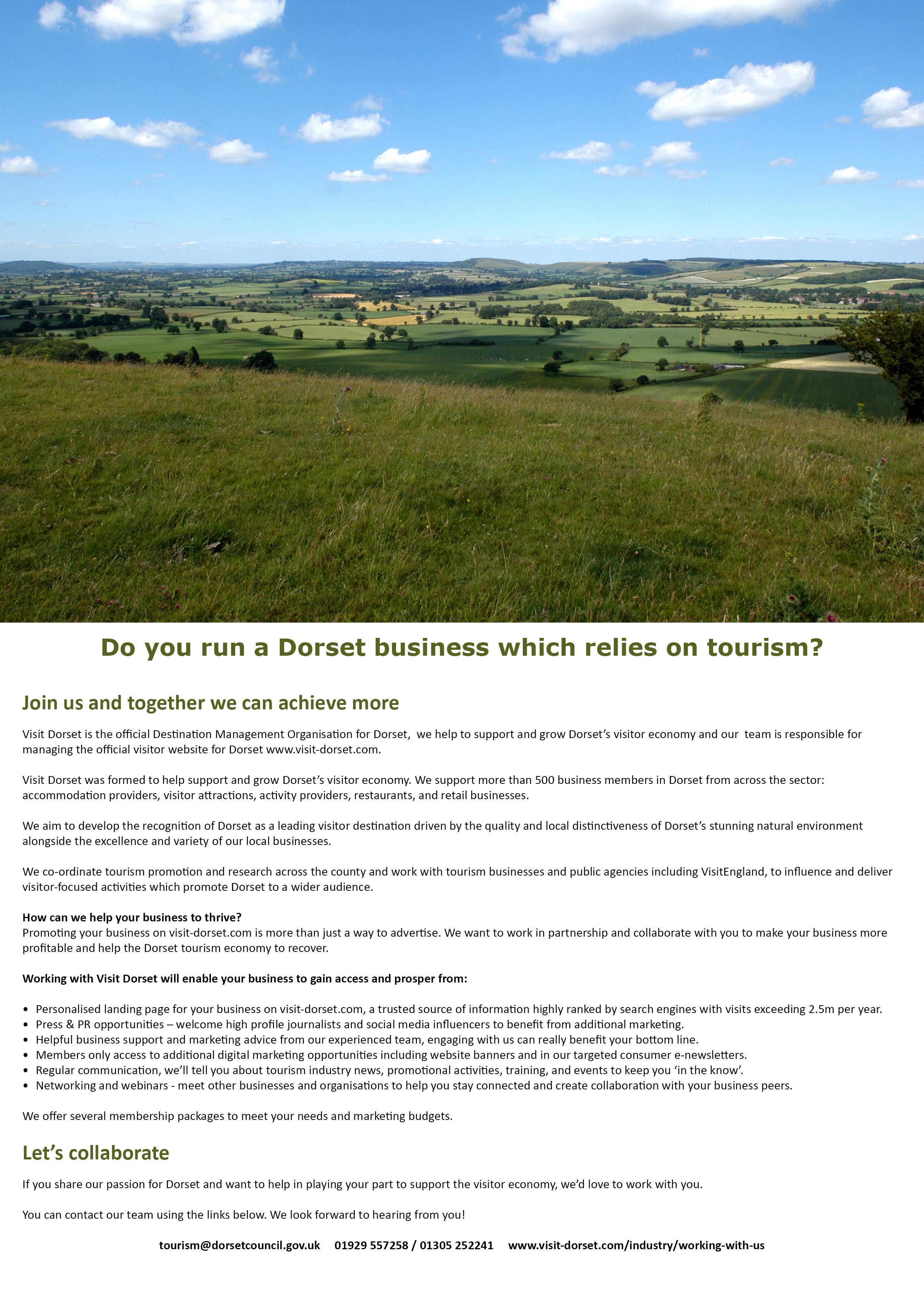

This month Rachael Rowe visited Semley’s community-run village store, which has just celebrated its tenth anniversary, and chatted to founder Anne Everall
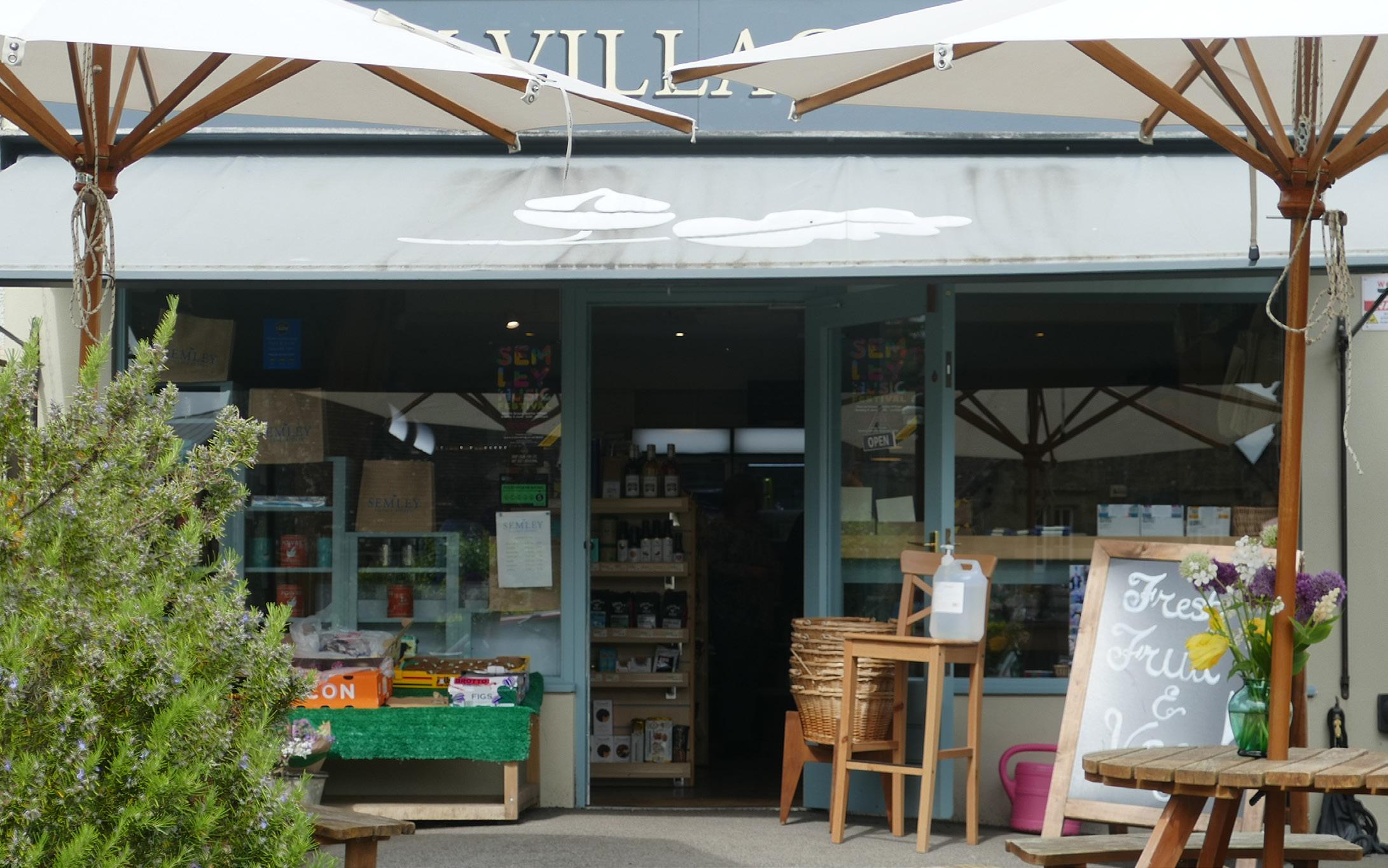
There’s a continual buzz at Semley Village Stores. People file in and out, picking up fresh bread, other essentials and treats.
But there’s a lot more to this shop than initially meets the eye – the more you look, the more you see – including several items that you just wouldn’t expect in a village.
Anne Everall, one of the community shop’s founders, explains: “There always was a shop here, last run by a young couple. When they left, we saw an opportunity for the community to buy it, to set it up as a community shop.
“The Plunkett Foundation was particularly helpful and held our hands all the way through. They were marvellous. We did a share issue to raise money and we had some very generous donations from within the village.
“We also managed to attract people with expertise such as graphic design and those working in the food industry – and we made use of them all!
Just before lockdown we expanded heavily in our fresh fruit and vegetable section (an entire shed).
We couldn’t use the inside cafe during lockdown, obviously, so we used tables outside, which is where they remain today. During lockdown, our turnover tripled. Everyone was at home, people didn’t want to use supermarkets and we quickly expanded what we were selling.”
“We have 30 volunteers. We also have four or five teenagers whom we pay to work here, so they get experience and life skills. Our paid manager, Lal Poynter, is also brilliant and has an excellent relationship with suppliers.”
“We had a party to celebrate! We also used some of the profits we made during lockdown to give back to the community. We helped expand the library in the village school, assisted the village hall in getting Covid safe and funded the maintenance of the church. We also paid for swift boxes, bird boxes and footpath maintenance. And we also supported Semley Music Festival.”
“I think for us, when we got a paid manager. Some of our volunteers found it hard to differentiate between volunteering and being a professional manager. Lal is excellent and does things we would be unable to do.”
What are you most proud of?
The funds going back into the community have been really important. We also have customers who use the shop because they want a chat. It’s a hub for people, and they can socialise here.”
What’s flying off the shelves?
“We stock a lot of items from Spanish Brindisa, they have the best olive oil. They also do a really popular gazpacho.”
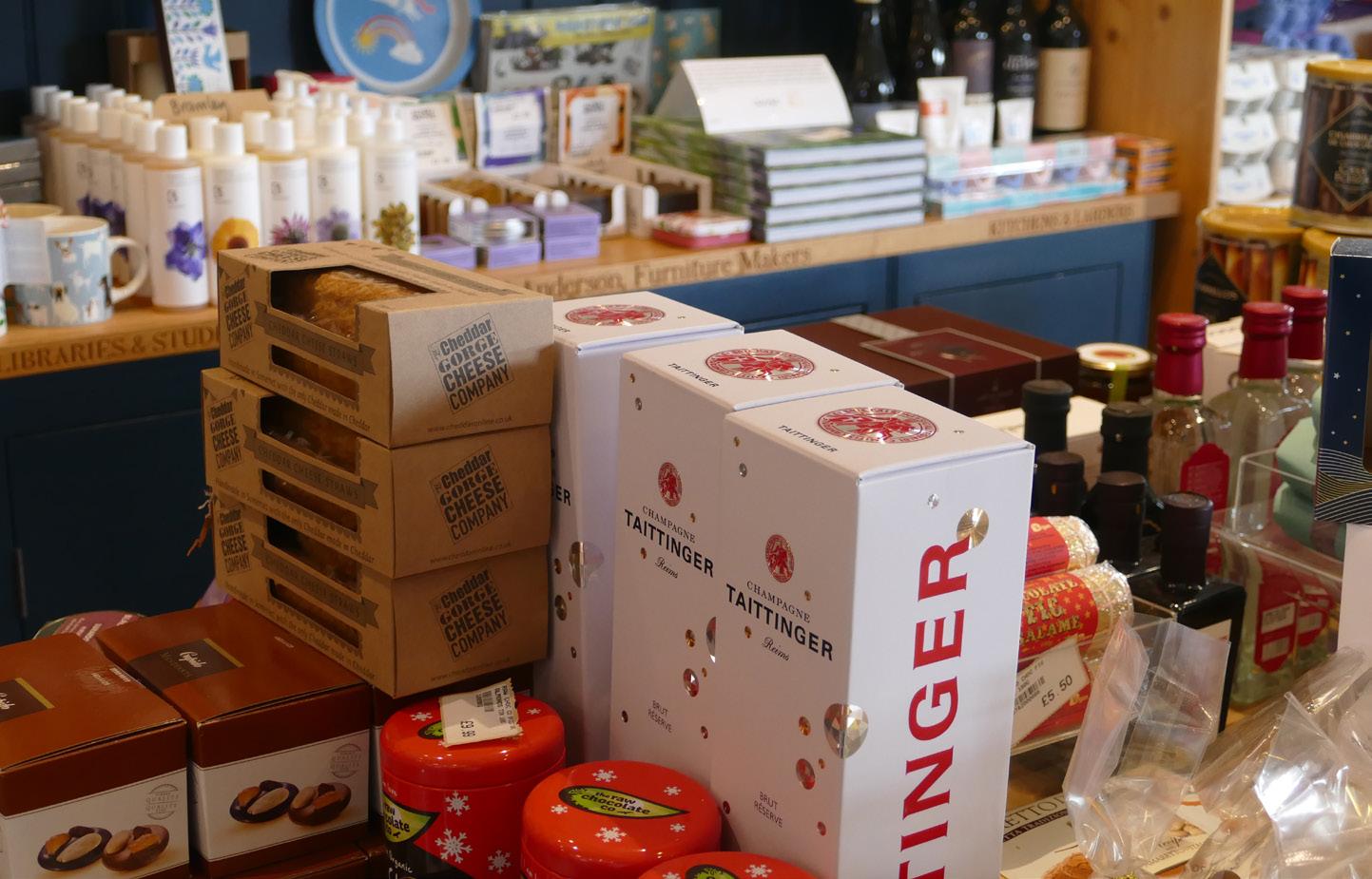
Tell us about some of your local suppliers.
Rosanagh (Rosie) Catherwood, secretary who is also responsible for volunteers, took me on a shop tour where the extensive range of suppliers became apparent. On the counter, an impressive selection of fresh loaves of bread from Taylors of Bruton and Lievito near Wincanton looked mouthwatering.
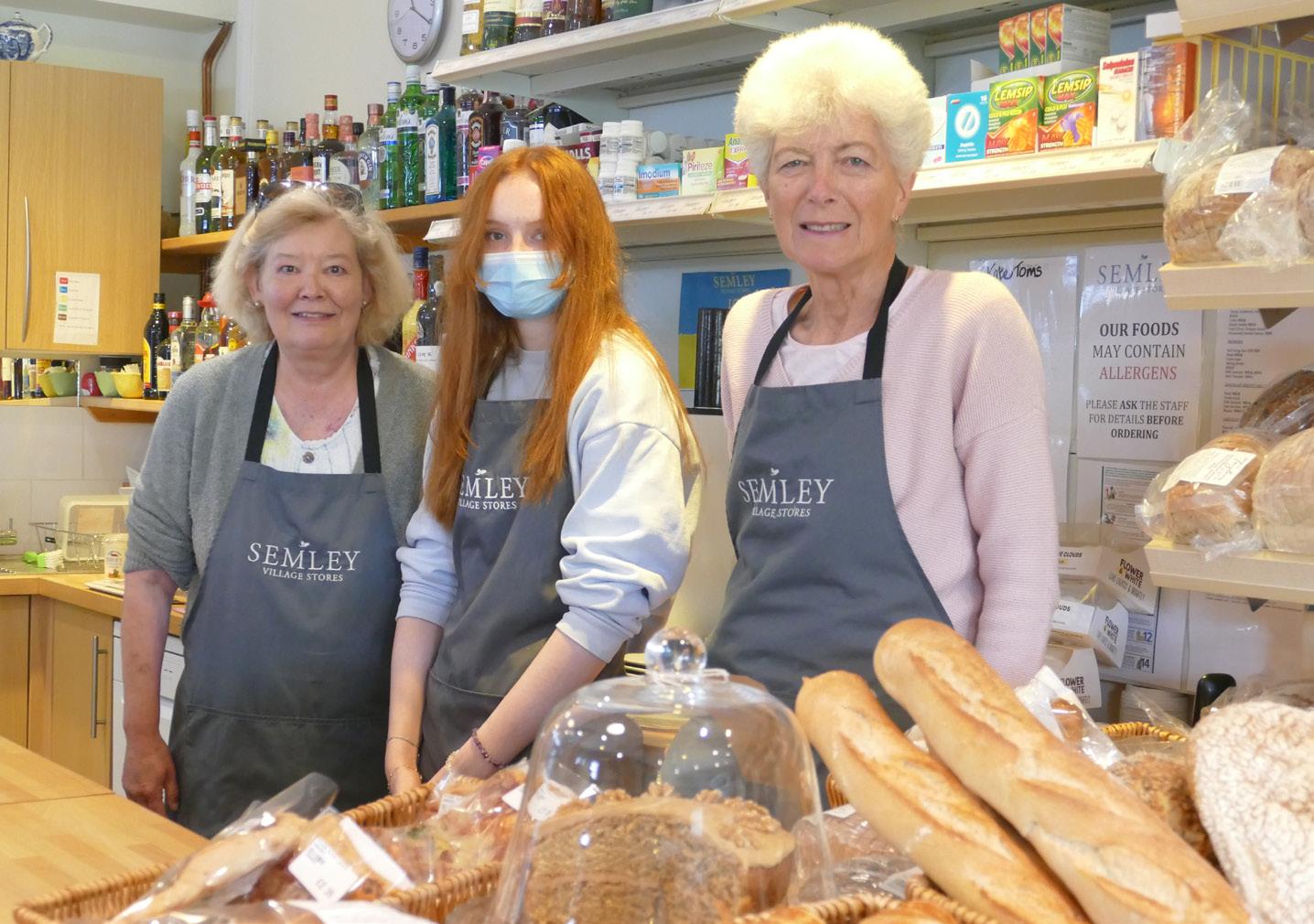
“We try to include the best of Dorset, Somerset and Wiltshire and other quality suppliers.
There are Isle of Wight tomatoes and three types of asparagus here. Our beef and lamb are from Cool’s Farm here in Semley.
We have Ivy House clotted cream butter (clotted cream butter? I never knew it was a thing).
“There are Whitelake Cheeses (Driftwood, Glastonbury Tor, Burrow Mump), Bath Soft Cheese, and produce from Mere Trout Farm and Chalk Farm Trout. In addition, we stock Bini Indian frozen foods and coffee roasted in Semley. We also have a lot of Seggiano artisanal Italian produce and Garofalo pasta.”
But there’s more. Rosie shows me shelves containing tahini,
agave nectar, and blackstrap molasses.
“We have a lot of cooks in Semley so we stock lots of ingredients. We try to stock everything people ask for.
“And then there are our sandwich makers. A team of volunteers makes beautiful fresh sandwiches each day in the upstairs professional kitchen, which is really popular. Egg and cress are the best!”
The shop also has a wide selection of gift ideas, such as locally made Bramley bath and soap products and books by local authors.
“People request products and we try to stock them. But we’re also looking to give more profit back to the community.”
There might be lots of unusual and high-quality food items in this delightful shop, but the small things make a difference here. From fresh flowers, grown by a volunteer, on the tables outside where people gather to the staff offering delivery drivers a cup of coffee, this shop takes pride in its role in the village. And that’s what makes it such a special place at the heart of this Wiltshire community.
Semley Village Stores, Semley, Shaftesbury SP7 9AU www.semleyvillagestores.co.uk/
“These used to be one of my most requested bakes, loved by many of my clients. I made so many of these that I trialled them with all sorts of cuts of bacon and pastry types. This recipe is made using what is, in my opinion, the best combination; homemade rough puff pastry and thick cut streaky bacon from a butcher. I also highly recommend the use of lard if you are going to make the pastry - it adds a wonderful crispness to the pastry that you might not get just using butter.
“If you decide you don’t have the time or the inclination to make your own pastry, then I recommend ready-rolled puff pastry, and swap for dry-cured, unsmoked streaky bacon from a supermarket - you may find that the thickness of butcher’s bacon overwhelms the pre-made pastry otherwise.”
Heather x• thick cut streaky bacon
• parmesan cheese
• 225g strong white bread flour
• 115g butter
• 115g lard
• pinch of salt
• some cold water
• 1 egg
• To make the pastry: Mix the salt into the flour and cut the butter and lard into chunks (approx. 1cm cubes) and add them to the mix. Toss the butter and lard pieces in the flour until they are coated.
• Add the water a little at a time and, using a knife or a spatula, mix into the flour/butter mix until the dough just comes together. The aim is to create a ‘dough’ with the flour, but to still have lots of large lumps of butter and lard.
• As soon as the dough has come together, tip out onto a floured work surface and shape into a large ‘brick’ shape. With your rolling pin, roll out the dough into a long rectangle of pastry. Take one of the ends and fold it into the middle and repeat with the other end – folding the dough into thirds. Press together with your hands to seal the ends. Cover with a sheet of cling film and leave to rest for 5-10 minutes.
• Rotate the dough 90 degrees. Repeat the above by rolling out into a long strip, folding into 3 and sealing in. Cover and rest for 5-10 minutes.
• Repeat this three more times.
• Wrap the dough completely with clingfilm and pop in the fridge for at least an hour but overnight is also fine.
• Once the pastry has had a good time to chill and for the butter to get nice and hard, preheat your oven to 200º fan (gas 6) and grease/line two baking trays.
• On a lightly floured surface, roll out your pastry to a large rectangle about 0.5cm thick.
• Grate over one half of the pastry a generous amount of parmesan and gently press in with your finger tips. Then fold the pastry over and press down. Rotate the pastry and roll out again to a large rectangle 0.5 cm thick.
• Lay your bacon strips onto the pastry, covering the whole area with bacon. Cut around the pieces of bacon.
• Take a strip of bacon and pastry together and twist it in your fingers and lay the twisted strips onto the baking tray.
• Beat the egg lightly and then brush over the pastry that isn’t covered by bacon. Sprinkle over more parmesan cheese.
• Bake in the oven for 20-35 minutes until golden brown and the pastry is cooked through. You’ll need less time for pre-made pastry and thinner bacon and more time for thick pastry and chunky bacon. Enjoy!

Heather Brown is on the committee of the Guild of Food Writers; a home economist with a passion for Dorset’s brilliant foodie scene. Heather runs Dorset Foodie Feed, championing Dorset’s food and drink businesses, as well as working with her food industry clients.
 Cheesy bacon twists - delicious warm from the oven with a cup of tea. Or frankly cold at any time of day... Image: Heather Brown
Cheesy bacon twists - delicious warm from the oven with a cup of tea. Or frankly cold at any time of day... Image: Heather Brown
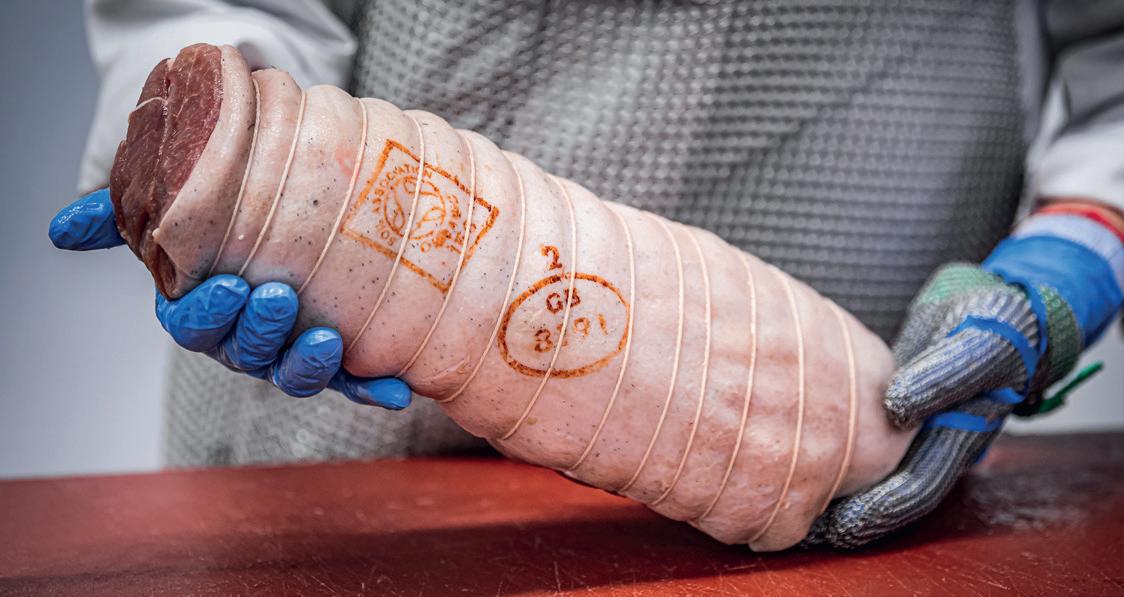
Back in November 2013 I needed to embrace social media. I met Becky Walsh, a marketing consultant who had just moved into the village, and she badgered me to promote the pub and butchery online, to tell everyone about the great story of our local food and drinks.
One of the things she kept on (and on ...) about was entering awards. She made me enter competition after competition, and although I was reluctant I knew we had to do it. Previously I hadn’t wanted to put myself out there but if you want people to support you, then they have to know who you are, how good your business is and what it is you are doing that makes you different. These days I know only too well that the business needs a face – both for the owner and the full team behind them. After trading for 30 years we have probably won more than 20 awards and have another 20 runners up plaques. Every single one of those has made us feel proud of the effort we put in to get there. Awards justify our hard work and give the business and the team behind it, the recognition they deserve.
Now we’re the ones running the Love Local Trust Local (LLTL) Awards for local businesses here in Dorset,and it’s our turn to say “Well done, you are fabulous!” and for those businesses in turn to go out and make the most of this recognition.
There are 15 categories to choose from in 2022 so if you’re a business that is growing, producing, rearing, brewing, crafting or cooking here in Dorset, and you source your ingredients within 30 miles of your home base then you should be entering.
There are a few changes & tweaks from last year, all strongly supported by the Love Local Trust Local sponsorship team, and we are very pleased to have the brand new categories of Farm Shops and Hospitality on the categories list.
Enter now Awards are open now and FREE to enter. Remember, if you don’t tell other people about the amazing things you’re doing they won’t know. Put yourself out there! You can enter one product in each category, or multiple products into a single
category, it’s totally up to you. Here’s what one of our fabulous Winners of the LLTL had to say about her award: “Being a micro producer, winning this award was a great achievement and has given me greater presence in the marketplace.” Barbara, Founder, Barbara’s Kitchen, 2020 LLTL Winner
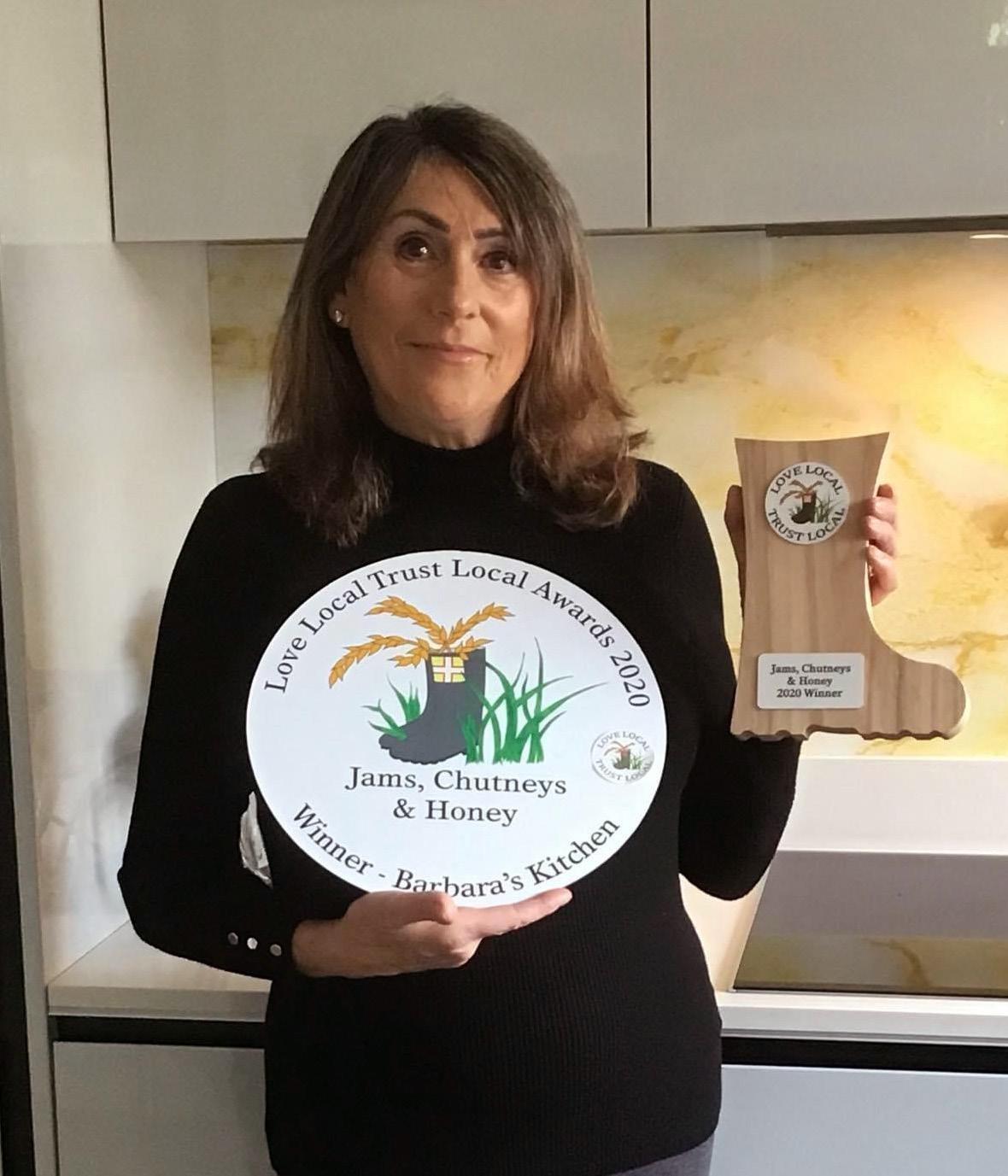
The LLTL awards are fast becoming the food & farming family to be part of. They recognise the hard work and dedication of the people behind the food on our plates as they work hard to put Dorset producers on the map.
The Love Local Trust Local movement was created by farmers in 2018 in order to both recognise and celebrate the hard work of other farmers and also local producers & fishermen. The annual awards are a great way to help do just that. Love Local Trust Local is also tackling corruption in the food labelling industry, and helping to protect Britain’s world-leading food production standards.

To find out more, visit lovelocaltrustlocalawards.co.uk or call us for a friendly chat on 07831 184920.

Simply click to complete on your tablet, computer or phone - or there’s a download option if you prefer pen and paper.


Jigsaw Naturally we had to have bluebells this month - simply click to complete. If you get stuck, there’s an icon at the top of the screen which reveals the completed picture for you to refresh your memory.

Q: “I recently applied for a job which offered National Minimum Wage. I went for an interview and at the end the manager asked me for some documents and also asked how old I was. I told her I was 25 and she said she would be in touch, but it would be unlikely I’d get the job because they wouldn’t be able to afford to pay me the required wage. She said she would prefer to hire someone younger. Is this legal?
A: Nobody should be asking you how old you are in a job interview. At 25, you’re entitled to the National Living Wage. On the Citizens Advice website there are full details of the wages people are entitled to by law. but these rules shouldn’t mean employers avoid hiring people because of how old they are. That’s known as ‘direct age discrimination’ in the Equality Act 2010. You’re also protected by the National
Minimum Wage Act 1998, which says employers can’t not hire you (and they can’t fire you) simply because your age means you’re entitled to a higher rate.

If you’ve been discriminated against, there are steps you can take. Make a note of what happened as soon as you can - noting down exactly what you were asked and any other remarks the interviewer made. This will be useful as evidence later. Next, you should write a letter of complaint to the employer. Keep a copy of this letter for your own records.
There’s advice on the Citizens Advice website on what this letter should include and you can also speak to an adviser at your local Citizens Advice to get help writing it. If the letter doesn’t get an outcome you’re happy with, you could take the employer to an employment tribunal.
You’ll need as much evidence of discrimination as possible.
Evidence should include the job advert, the job description, your notes about what was said at the interview and any contact you’ve had with the employer since - like your complaint letter.
Remember that you only have three months minus one day from the date that the ‘discriminatory act’ (in this case, the comments in your interview) happened to start tribunal proceedings. You do this by contacting the government organisation Acas and telling them that you intend to bring a claim. Nobody should have to worry about being discriminated against when job hunting.
For more advice on your rights when searching for work, visit citizensadvice.org.uk/work or call Citizens Advice on 0800 144 88 48.”

A local expert from Citizen’s Advice provides advice This Month: can an employer only recruit young people because they’re cheaper?
Monthly updates from the various North Dorset Police Teams. This month’s news from Shaftesbury’s PC Rob Hammond

Shaftesbury Neighbourhood Policing Team (NPT) have been working on their new Chief Constable’s vision & the Police Crime Commissioner’s priorities by working to keep local residents safe. There’s only two of us – so as you can imagine we work very hard!
Where possible we provide a visible presence in town, and it was great to see so many people at the Food Fayre a few weeks ago. Of course we cannot be everywhere, nor can we resolve everything that is reported, but we do advise people to always report matters, as this allows us to build a picture of where we should patrol & any agencies to work with.
Another important aspect of our role is to keep vulnerable people safe. This means visiting those in our community who may be vulnerable to exploitation or abuse or are repeat victims of crime. Talking with victims of crime and making sure they are treated well by visiting them is also a very important part of our service.
Where possible we also visit your local pubs or work with them via our licensing team to make sure everything is safe for your evening’s out in town.
The police team uses the information you give (or we learn) to disrupt any criminal activity, or stop it happening. According to our community surveys this means reducing the misuse of drugs in town as
“In Shaftesbury an uninsured driver was stopped, and the vehicle seized”
“Report of possible Badger Set interference at a live set. Badgers & Sets are protected by law, any interference is illegal, licences can be applied for via Natural England should you need to work near one. Equally should your dog be off lead & go down a set, it’s illegal to dig it out. If you have any information or have seen one or more people, with dogs near a set please call 101
#WildlifeCrimeActionthe community’s number one priority. Another concern high on your list is that of people driving illegally, and we often take cars that are not insured from persons who think they can get away with it (see photo above of a recent seizure in
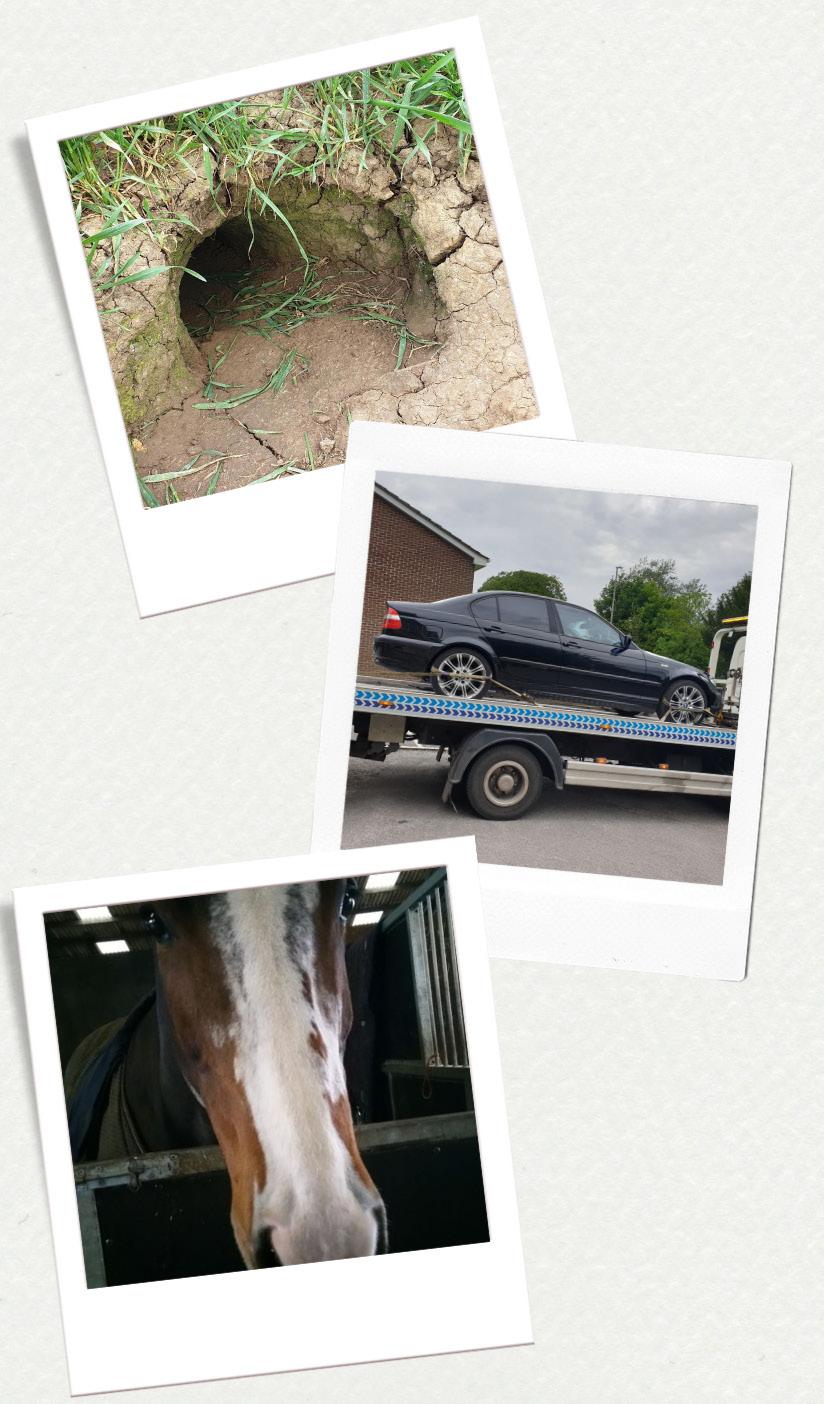
“PCSO Vicky Biggs has been out security-marking horse tack with the Blandford Rural Neighbourhood Policing Team. Security marking your tack may dissuade a thief and it will certainly improve the chances of tracing and returning your tack to you should it be stolen. If you are in the North Dorset area and would like your tack securitymarked please contact PCSO Vicky Biggs via 101 or the Dorset Police website. #HorseWatch”
Shaftesbury). Clearly this second priority is not so easy for just the two of us (but bear in mind there are other police resources!) – so if you feel more NPT officers might make a difference in the town please feel free to ask our chief.
For details on your local team’s future engagements please refer to our website. As always, if you wish to contact us follow the links. You can report non urgent matters via 101, and remember if you see a crime in progress or a person in danger call 999.
Shaftesbury has a two-person team, so they’re working hard on their primary targets of drugs, illegal drivers and support for the vulnerable, says PC Rob Hammond



“About 12 months ago – it was born out of Gillingham’s Riversmeet Leisure Centre. Like the rest of the leisure industry, we suffered during covid and we had to seriously re-think our direction. We knew that inflatable fun is always popular, and worked out the old Legends Nightclub building was standing empty. We spoke to Dextra, the property owners, about developing it; we wanted something new and different for children and adults in Gillingham.”
“It’s like any crazy idea – it grows with a life of its own! We started last July, and the Trust talked through what was affordable, and what was needed from stakeholders. Work actually started in September 2021, and today we’re 90 per cent complete inside (see image above).
The only concern is the inflatable units are coming from China – no one makes them in this country.
In an ideal world we’ll open on Sat 23rd July – but we’re just waiting for those inflatables. Right now we’re teetering on a ‘when will it arrive’ tightrope!”
“The building, the inflatables and the new areas were all financed by stakeholders; big business individuals within the
Gillingham area. GCLT have taken responsibility for the day-to-day management.
“Well obviously there’s a HUGE inflatable unit! Plus an interactive wall, and lots of other areas to play with. There’ll be a 2.5 metre ‘death drop’ where you fall into a black hole (that will be closely managed by staff, obviously!), and an under three’s and disabled interactive play area. We’ve also got a café bar – fresh pizzas, jacket potatoes, and themed food for adults and kids.”
“9.30-7pm Mon-Fri, and weekends 9am-5pm. The plan is for it NOT to become a private party venue. It’s a community resource, and we need it open all hours, so that all families can come at any time. We really want it to be inclusive for all family types as much as possible.”
“We’ll have peak and off peak rates: everything’s still being finalised, but currently off-peak will be Mon-Fri 9am-4pm, and Peak will be 4-7pm weekdays, and weekends 9am-5pm.
At the moment, the entry (including supervising adults) will be £5 per person. Entry for the under three’s play area only will be £3.50 for a 90 minute slot.”
How will it help the community?
“It’s not a profit-making private business. It’s the same community business model as Riversmeet. Our accounts, any surplus we make, will be going straight back to the Gillingham community, to the local people. It will of course be entirely transparent. We can help local user groups, and assist in preserving Riversmeet going forwards.”
Will there be inclusive access?
“Absolutely - the entire business plan revolves around inclusion. We’re trying to look at every single user group that may wish to come. There’ll be a carer’s package, one for childminders, disabled and low-income family sessions will be discounted during the week ... We’re trying to cater for as many as we can.”
“In an ideal world we’ll be wildly successful, and then open other activities for adults and children in the Gillingham area. Our whole purpose is to help the local community. The town will clearly be growing considerably in the next few years, and we should be looking at all our leisure facilities, ensuring we’re self-sufficient and not a burden on the tax payer (not that Riversmeet gets assistance!). It’s about how we run the whole leisure side of Gillingham to serve the needs of the local people.”

Citizens Advice Volunteer Advisers come from different backgrounds, are different ages and have varied life experiences. They all have one thing in common: they want to help their local community


There has never been a more important time to volunteer. Many people in the community are facing hardship from the cost of living crisis – and they need urgent help. Citizens Advice has seen a sharp increase in those needing help. Many local people are struggling to pay the bills and are having to make a choice between paying for food or energy. Over the last three months Citizens Advice has seen a 28 per cent increase in utilities issues and a 26 per cent increase in debt issues. There is help out there through good advice and access to a range of grants and other support.
Citizens Advice needs additional volunteers to meet this
demand. The only qualifications we ask for are that you are a good listener, IT literate and have a passion for wanting to help others. You may not think that you have transferable skills but you will be surprised! We will provide all the training materials you need to get started and you will have a dedicated trainer who will help guide you through the whole process.Elaine Morley, Advice Services Manager for North Dorset Citizens Advice commented:
“We are an important part of our local community. Last year Citizens Advice Central Dorset helped 7,468 people with 22,518 issues. None of this would have been possible without our dedicated volunteers”.
Sheelagh’s story:
“I started volunteering at my local Citizens Advice office almost seven years ago. I had enjoyed 20 years of headship at Kingdown School in Warminster and 5 more years as a consultant Head, but was not yet quite ready to retire fully from work, so wanted an opportunity to keep my brain active and give something back. When the training began, I spent several weeks (one half day in training sessions and some time doing homework) learning about the benefit system, managing debt,
If you feel that you want to do something positive for your community in the North Dorset and Sherborne area, and would like to know more, please email Elaine on elaine. morley@centralca.org.uk (North Dorset) or Diana diana.hensher@centralca. org.uk (Sherborne) or visit our website centraldorsetca. org.uk. Start making a difference today.
housing, consumer problems and lots of other information, much of which I knew nothing about. I was able to listen into the telephone advice line and sit in on client meetings with experienced advisers. Everyone in the office was kind and helpful and the supervisor and manager were wonderfully patient. Seven years on, I am still enjoying my time advising, and see clients face to face as well, at drop-in sessions and booked appointments. Come and join our friendly and hardworking team for a rewarding volunteer position!”
... a sharp increase in those needing help. Many local people are struggling ... having to make a choice between paying for food or energy.

This month’s news from the unofficial capital of the Blackmore Vale ...

Sturminster Newton is ready to celebrate the Queen’s 70 years with four fantastic days of celebrations around the town
The Jubilee celebrations happen to coincide with Sturminster’s Big Weekend, which started on Thursday 2nd June with a Teddy Bear’s Picnic at the Mill, Evensong at the church culminating at 9.45pm with a Beacon lighting in the Railway Gardens. From today (Friday 3rd June) through to Sunday there is an Ale and Cider Festival taking place at The Exchange. Saturday in Sturminster is a big day for shoppers, with a Plant Sale being held by the Rotary Club in the Railway Gardens, the Anonymous Travelling Market is coming to town and there is also a Craft Fair being held in the Exchange.
On Saturday morning the monthly Car Enthusiasts meet-up is on, but thanks to its swiftly rising popularity it will now be held at the Rec. Over 100 vehicles of all eras from vintage to modern supercars came to the event last time. Anyone is welcome to wander round the vehicles and talk to the owners, who are only too happy to tell you about them.
On Sunday St Mary’s Church welcomes you to a Civic Service at 11am ,and then from 12pm – 3pm, the Rotary are holding the Jubilee Big Lunch in the Railway Gardens. The WI are also serving tea and cakes in the Bow room at the Exchange.

The Emporium and The Boutique will be open throughout the Jubilee celebrations, so why not come in and look at what’s on offer – perfect for that regal outfit. Margaret Ann’s Art Gallery has many lovely, donated paintings and pictures which are displayed for sale in a dedicated space in the Emporium.
1855
Work continues to progress on the proposed 1855 shopping experience in the former Nat West building. If you are interested in a customer-faced selling space for your business let The Emporium staff know or email
SturBiz18@gmail.com
And some good news – the Friends of the Library are finally back in business!
Sturminster Library Coffee Mornings are back on the first Thursday morning of each month (except 9th June), plus there will be children’s crafts and the Summer Reading Challenge is back. Volunteers are always welcome and muchneeded to help with extra opening hours, or with the craft or other activities. Please contact friendsofsturlibrary@hotmail.co.uk if you think you can help.
For full details of all the Jubilee activities on offer please see the poster opposite, and find out more on the Town Councils website and its Facebook page.

On Tuesday 10th May, Witchampton primary school’s Badgers Class (Years 1 and 2) had a wonderful visit to Launceston Farm to enhance their learning in Science and Design Technology. They began by looking for signs of spring, noticing that the calves had been born and many plants were beginning to bloom. Next they collected different petals and leaves to create their own spring bracelets.
The class had fun tracking the journey of a wheat seed and seeing it grow in the field before making bread themselves. No pesticides are used at the organic Launceston Farm. This meant that there was a wide variety of
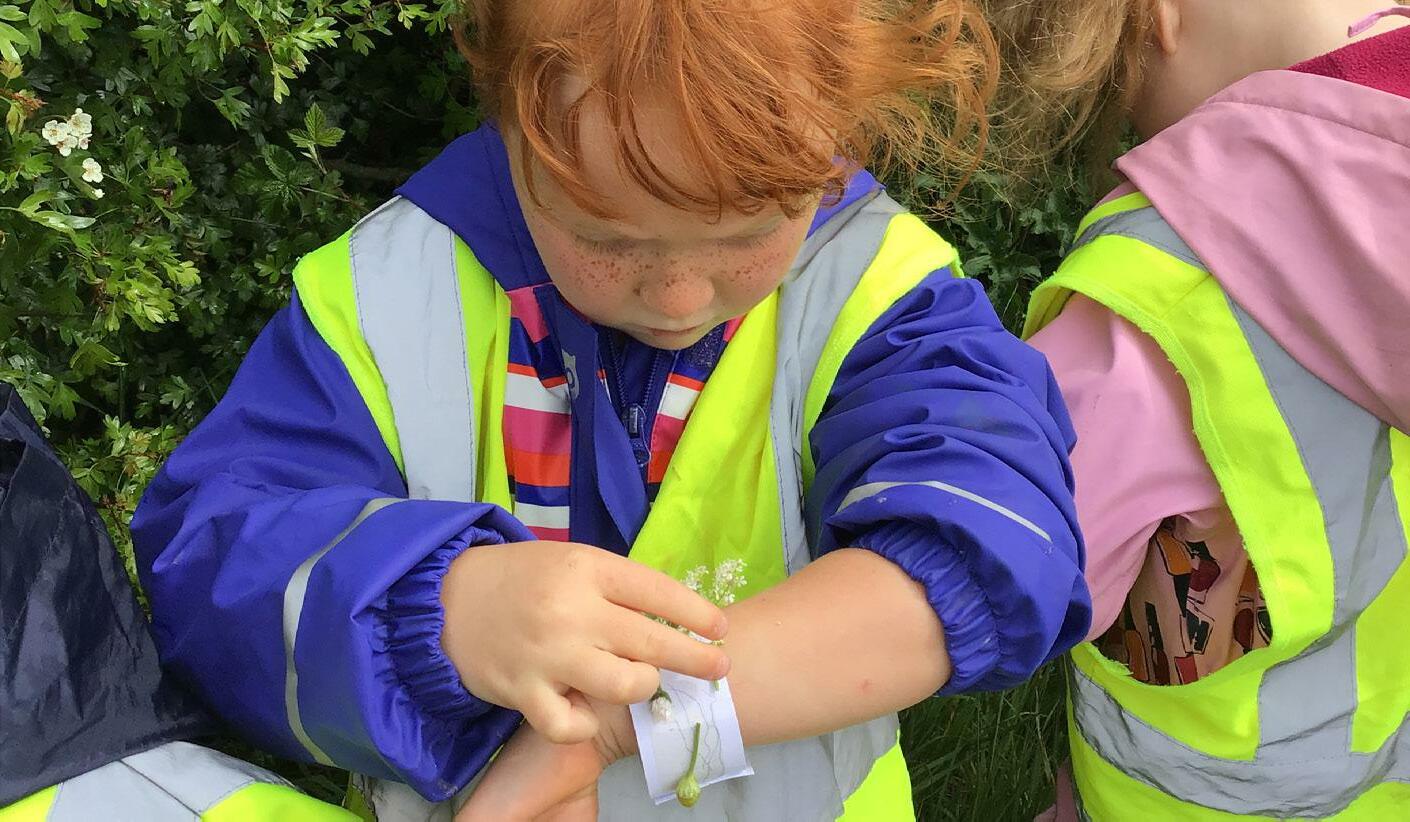
plants and insects to observe among the wheat. The group also made their own butter by shaking a container full of double cream. They were then
able to spread their homemade butter on their own still-warm fresh-baked bread and enjoy it – the perfect end to a wonderful morning on the farm.
To commemorate the event’s 60th anniversary, one team from The Gryphon School took part in the Ten Tors Challenge last month wearing original 1960s kit. As per Ten Tors rules, students covered either 35- or 45-mile distances, carrying all the equipment needed for the twoday hike across Dartmoor.
The ‘1960’s team’ of Ed, Ed, Leon, Ewan, Malachi and Louie wore original items that were sourced over the past year to ensure an authentic experience of what the Challenge was like for the original participants.”
Ed Smith, 17, said: “Our outfits consisted of lightweight pale green trousers, black boots,
puttees/gaiters, base T-shirts, army shirts and smocks and an authentic headdress. The clothes proved to be surprisingly comfortable as well as practical. However, the rucksacks were painful and incredibly hard work. Two members in my team, Louie and Leon, had frame carriers which were by far the hardest to pack and carry, as they required endless adjusting and were susceptible to breaking. Despite the uncomfortable rucksacks, we had the time of our lives doing Ten Tors and felt over the moon to cross the finish line after the endless hours of training and planning.”
The team was honoured at the end of the challenge to be greeted by six veterans of the original Ten Tors.
Geoff Cooke, Gryphon Challenge manager, said: “It is a huge achievement to complete the Ten Tors. We support students to take part as it builds confidence, teamwork, resilience and independence – qualities that will serve them well in the future. The Army organisation of the Challenge is outstanding and of course none of this would be possible without the volunteers, who support all our training and practice walks – parents, staff and members of the community – so a big thank you to them!”

The BV was delighted by an invitation from Sixpenny Handley First School to come and share in their Jubilee picnic in the school grounds.
The playground was beautifully decorated with handmade bunting and artwork depicting Her Majesty the Queen, all created by the children. Tables and chairs were ready for a feast, and parents were eagerly awaiting the arrival of the children.
At last, the children made their made their red-white-and-bluedressed entrance, and after a short welcome and thank you speech by headteacher Mrs Musselwhite the children entertained everyone with a Jubilee song.
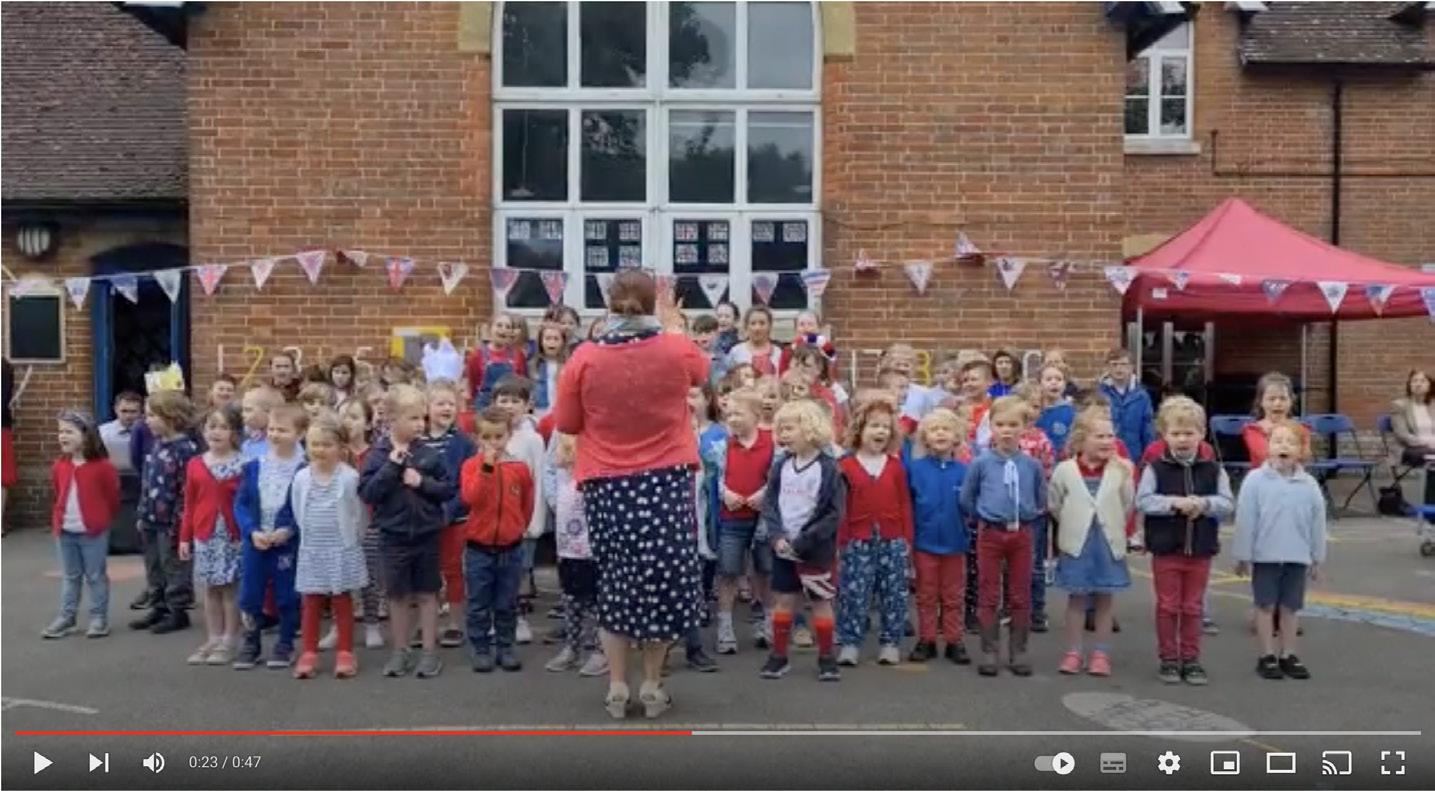
Children and parents then gathered around the tables to enjoy a community picnic.
Sixpenny Handley First School is a thriving Victorian village school
well attended by 107 children from the local community. Mrs Musselwhite proudly told me that this event was the jewel in the crown of their week’s activities:

“After the last couple of years, it was so lovely to get everyone together and do something for the community that has supported us through so much.”
She was also keen to point out that the day was a team effort by the whole staff, who had contributed or made everything that was on offer.
After the picnic, the celebrations continued for the children, with a brilliantly entertaining storytime on the field, with local author Chris Connaughton.
Just before half term, children at Wardour Primary enjoyed an action-packed week of sport. It began with a team of powerchair football experts teaching the children a variation of the sport they all love. Using adapted electric chairs, they learned how to control a large football and had a go at playing a 5-a-side game. The coaches came from Nova Sport, which organise a variety of sports for people with physical disabilities to play on a regular basis.
As part of the school’s Platinum Jubilee celebrations, there was a sponsored walk that involved dressing up in red, white and blue and walking around an obstacle-laden course as many times as possible, raising money for school resources. Later that afternoon, the whole school enjoyed a traditional tea party, wearing home-made crowns,
eating sandwiches and cake. This year’s guest speaker was Olympian Aerial skier Lloyd Wallace. He showed them how his training involved jumping onto a trampoline and into a swimming pool – with skis on! As well as sharing with them his passion and dedication for the sport, he also showed them a very damaged helmet from a not-so-successful landing on the
slopes. Lloyd encouraged them to embrace and do their very best at whatever they loved doing, whether a sport or academic subject.
The week ended with Sports Day. Parents picnicked on the field, while the children prepared to run a variety of sprints and novelty races. The points were added up to declare this year’s winning house – Old Sarum.
Amy Ellis, the education officer for Wessex Rivers Trust, contacted William Barnes primary back in September 2020 with an exciting idea of creating a River Stour Trail with the children.
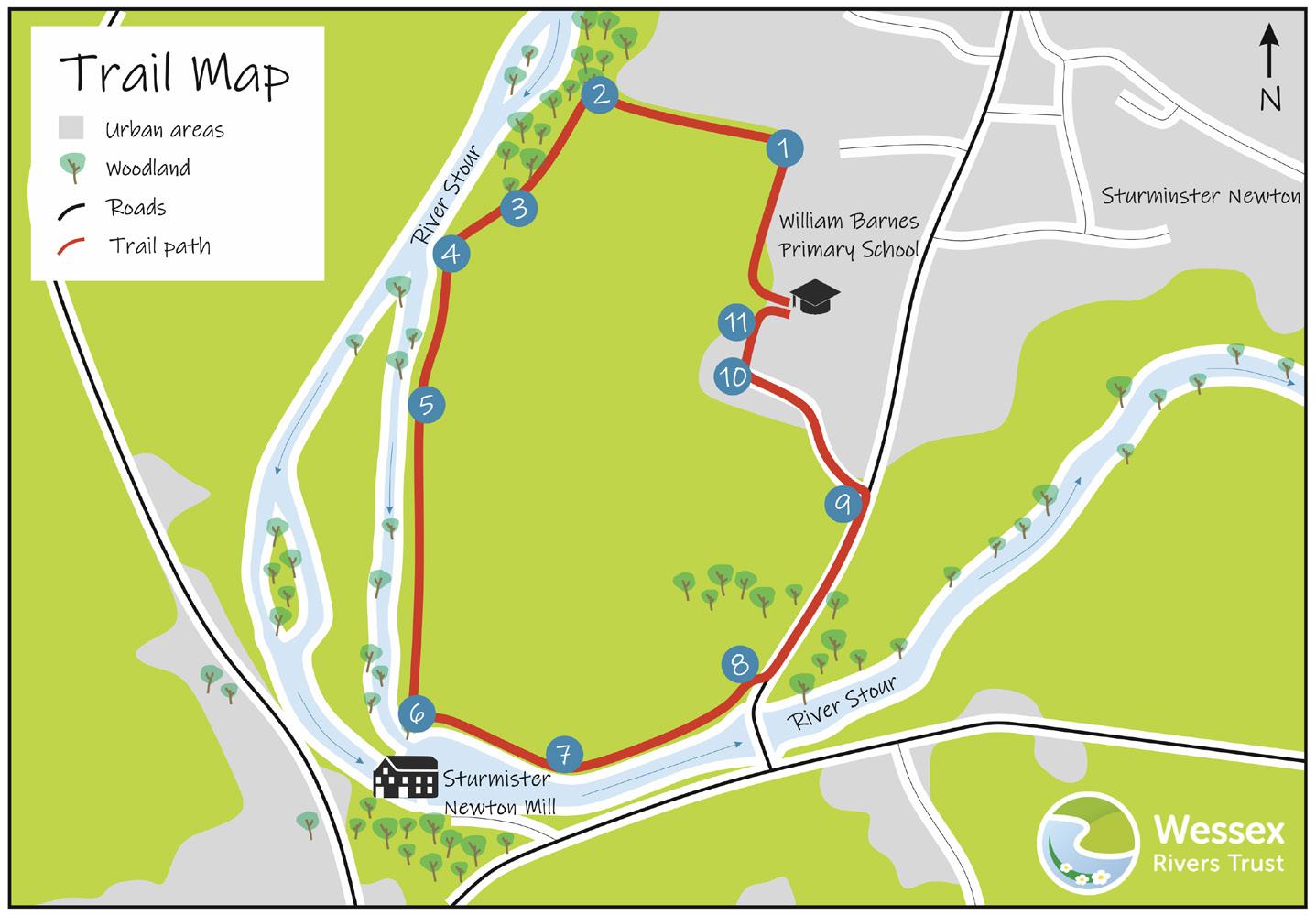
The plan was for Year 5 to create the art work for a nature trail looping from the school, into the recreation ground and then along the banks of the river to Sturminster Newton Mill and back along the river to the school. Rather than using information boards, Amy envisaged posts with QR codes, linking to Wessex River’s website. The children would provide the artwork for the website and Wessex Rivers would provide the scientific and historical information for the trail.
“Covid restrictions meant the project kept getting delayed, until we had just three days before the end of Summer term last year,” explained deputy head Richard Hull.
The trail-making day itself was a great success. Amy began in the school hall, creating a large interactive 3d model of a river from its source as a natural spring to its mouth as an estuary at the sea.
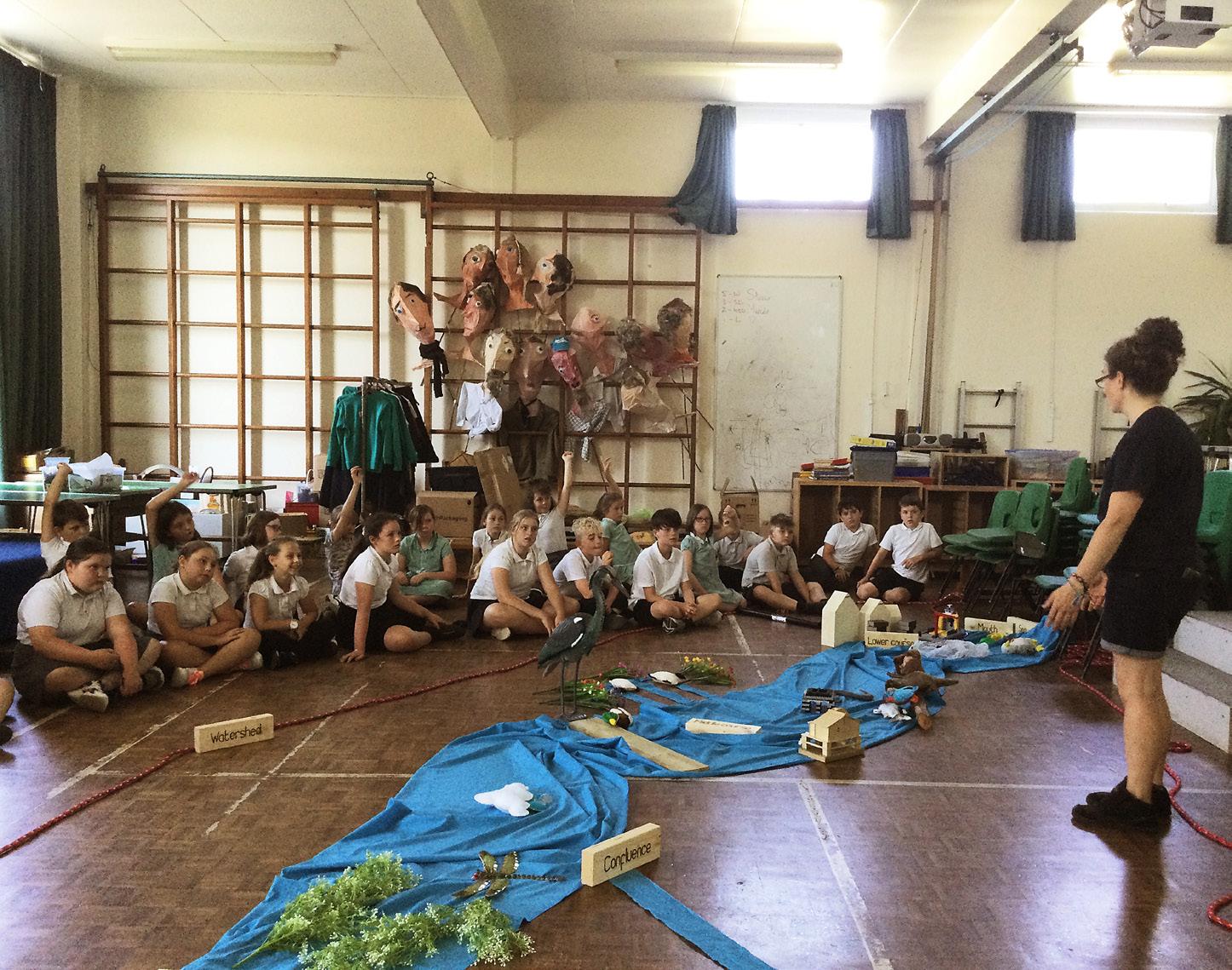
Afterwards, the children headed out to the banks of the Stour for some pond dipping and then returned to school to produce some breathtaking artwork using acrylics, oil pastels and charcoal. Full of ideas, Amy also had the children in hysterics playing various games as they learned about how animals adapt to their environments.
The trail is open After considerable hard work from Amy and the education
team at Wessex Rivers, the project is now completed. Posts with QR codes are in place along the river, the artwork has been uploaded and a downloadable trail leaflet has been designed and shared with the local community. The children were delighted to see their paintings and drawings online as part of the trail, and were excited to see that the project has come to completion. Amy said: “It was a pleasure to work with William Barnes Primary. There is nothing like the sound of excited school children discovering what wildlife is hidden beneath the surface of their local river! The children produced some incredible art work to support the Wildlife and Heritage Trail which you can see by clicking here.”
The Wessex Rivers Trust offers subsidised education sessions to schools, uniformed groups and home education groups.
If you are interested in getting involved in a similar project with your school or group then please contact Amy via –https://www.wessexrt.org.uk/

Cheselbourne Village School was excited to be the first school to visit the new KUKA Titans at Loop Technology Centre in Dorchester. The children were buzzing with excitement as the robots were switched on to show everything that they do. The school provided some creative artwork to be displayed at the centre and received a guided tour to help inspire the next generation of engineers.
Shaftesbury School teacher Alex More has been named as one of 80 Pearson National Teaching Award Silver Award winners across the country. He received the Award for Digital Innovator of the Year for his outstanding commitment to changing the lives of children.

Alex is the school’s Lead Teacher of Innovation in Teaching and Learning, and currently completing his EdD through distance learning at Bath University. He has had a significant impact on Shaftesbury School’s students, parents and the local community, as well as making global connections, including with a school in Ghana.
Donna London-Hill, headteacher of Shaftesbury School said: “We are so incredibly proud of Alex and he is thoroughly deserving of this national award. His energy and drive in thinking about and bringing the future of education to the heart of our school is second to none. I also want to congratulation Becky Yeo, another of our teachers, who was highly commended.”
As a Silver Award winner, Alex has now been shortlisted for one
of just 16 Gold Awards later in the year. These once-in-a-lifetime achievements will be broadcast on the BBC’s The One Show as part of a week-long celebration of teaching.
Education Secretary Nadhim Zahawi said: “Congratulations
to Alex on this incredible achievement and for the hard work and dedication which led up to it. Winning this award is impressive, well-deserved and shows Alex’s commitment to helping students achieve their full potential.”
Dorset apprentices are showing the wealth of opportunity, talent and diversity within the programme, says Ian Girling, CEO of Dorset Chamber

This month I’d like to talk to you about apprenticeships. A couple of weeks ago, I had the pleasure of hosting the 2022 Dorset Apprenticeship Awards, run by Dorset Chamber, supported by the Dorset and Somerset Training Provider Network and sponsored by Superior Seals. The purpose of the awards is to celebrate the contribution apprentices make to the businesses and organisations in which they work. The event was attended by the Lord Lieutenant, local dignitaries, our finalists, employers, family and friends. The wonderful day was a tremendous celebration of the achievements of our 12 finalists.
We received more than 60 entries for the awards with three categories: intermediate, advanced and higher and degree level. The entrants covered a very broad age range and were from all across Dorset and a wide spectrum of industries. They really highlighted the diversity of the apprenticeship programme and the opportunities it can offer.
Apprenticeships are no longer the preserve of the skilled trades – now careers in an enormous range of industries such as social media, design, PR and even law offer apprenticeships as entry routes.


Apprenticeships are available at all levels and, in contrast to the popular misconception, they are open to people of all ages. We had entries from people working in farming, HR, the legal profession, marketing and computer programming, to name but a few sectors.
The three judges had an extremely difficult task in identifying the finalists and winners. We all found the entries to be inspiring. We didn’t
Whether you’re just starting out, upskilling, or looking for a career change, there’s an apprenticeship for everyone.
just read about the fantastic contribution these apprentices are making in their place of work but also the impact this has had on their personal lives. We heard from employers who have really embraced the apprenticeship programme and offer great support and mentoring to their staff.
My daughter is at the beginning of her career, having taken the apprenticeship route, and it has given her a tremendous start. However, many of her peers did not take this route and were discouraged by their parents, who preferred their children to follow the traditional A level-touniversity route.
I would urge anyone to really consider apprenticeships as a fantastic way to gain qualifications and vital skills while working and earning a salary. As a parent, I couldn’t be happier with the opportunities this has given my daughter. Visit www.apprenticeships.gov.uk to find out more.
A 12-strong shortlist of finalists attended the county’s inaugural Apprentice of the Year Awards this month. The winners were:

Intermediate Apprentice of the Year: Ellie Edmonds (ABP Food Group, Yetminster) HR co-ordinator Ellie is taking an apprenticeship in business administration. She runs the Youth Ambassadors of ABP across the company to help make the industry more appealing and accessible to young people aged 16 to 24. She is also the southern England regional leader for the company’s new female talent community called ABP SHE.
Advanced Apprentice of the Year: Cameron Hearn (Frettens Solicitors)
Cameron is a digital marketing apprentice and has made a tangible difference to Frettens Solicitors through digital content and social media. His efforts
have attracted new visitors to the company’s website and social media and led to tens of thousands of pounds in new revenue.
Higher and Degree Apprentice of the Year: Rebecca Buck (Dorset Council) Rebecca Buck is Dorset Council’s first solicitor apprentice. She juggles her job and training with family life with her two young children.
The apprenticeship route has given Rebecca the opportunity to continue to work while studying, without facing university fees. She has a study day a week and then fits the rest into evenings after her children are in bed.
Dorset Chamber chief executive Ian Girling said: “Ellie, Cameron and Rebecca were all very worthy winners who have all demonstrated exceptional determination, talent and commitment to succeed.

Expanding law firm Blanchards Bailey is celebrating the arrival of a new client in the shape of the historic Stock Gaylard Estate in the heart of Dorset’s Blackmore Vale.The award-winning firm’s Legal 500 ranked agricultural and estates department has won the opportunity to undertake the estate’s legal work.
Stock Gaylard Estate is a small traditional country estate nestled in a mixture of oak woodland and green pastures around four miles from Sturminster Newton and eight miles from Sherborne.
The estate is approximately 1,800 acres with around 300 acres of predominantly oak woodland, 80 acres of common land and an enclosed 80-acre deer park with a small lake.
Over the last couple of hundred years the estate has been used for country sports in an unspoilt environment that also encompasses modern dairy farming and a number of Sites of Special Scientific Interest (SSSI).
Run by the Langmead family, the estate is the latest farming operation to have moved its legal matters to Blandford-based Blanchards Bailey, headed by Managing Partner Paul Dunlop.
He said: “We are humbled and excited to assist such a wonderful family estate, steeped in so much history – the village is mentioned as existing in 1086 and the house is a Grade II* Listed Georgian building – but very much moving with the times today.

“It is a very exciting era for the Langmead family as they diversify the estate, boosting cashflow to assist in keeping the property exactly how it should be
and preserving it for future generations.”
Stock Gaylard Estate Property and Event Manager Jack Langmead said: “We are very much looking forward to having a working relationship with Paul and the team at Blanchards Bailey.
“The firm’s expertise in rural matters, their personal approach and local understanding is exactly what we need to help us maintain and diversify the farm and land of which we are custodians.
“With a growing portfolio of ideas and possible ventures in the pipeline for us, Blanchards Bailey is the perfect fit to keep us sailing in the right direction.”
Mike Oaten has been an upholsterer for 35 years, having started as an apprentice with Relyon the bed manufacturers in Somerset in 1987. He has spent the last 18 years repairing furniture for a national insurance furniture repair company.
During that time he diagnosed, repaired and reupholstered many items: “I dealt with sofas, chairs, beds, mattresses, tables, wooden flooring, benches, ottomans and footstools!”
Late last year Mike finally set up his own business, Beaminster Upholstery, and this May has finally opened the doors of his new workshop and premises at Broadwindsor Redlands Yard.

“I’m a traditional upholsterer – I’m the person to call if you have chairs to recover, foams to replace, springs to fix, legs to mend, recliner chairs to problem-solve ...
I also make bespoke footstools, ottomans, headboards, bedroom stools, cushions and can upcycle most items!”
Mike’s website is BeaminsterUpholstery.co.uk, and do visit his Facebook page to view recent photographs of his work.
Community events are a great chance to check in with people, says Izzy Anwell of Dorset Mind, as she reminds us to always ask twice
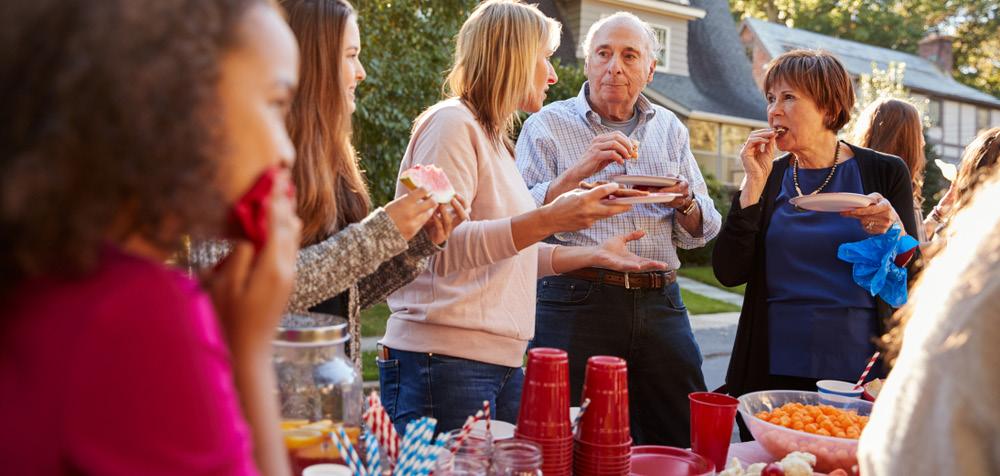
With the Queen’s Platinum Jubilee imminent, much of the UK is gearing up and preparing for the festivities that come with such a special occasion. Whether you are making a cake for your local street party, fighting with an old gazebo or simply watching the celebrations on the TV, you and thousands of other people across the UK and beyond have a shared interest.
It is events such as these that bring communities together; that give neighbours something to talk about over the garden fence or in the streets. But it is also at events such as these where we can notice if someone isn’t quite themselves.
One in four
We know that one in four people experiences a diagnosable mental health problem each year, which roughly equates to 16 million people across the UK. From this statistic, it is clear that
you are likely to know someone in your community who is suffering in silence and could use your support.
Dorset Mind actively encourages open discussion about mental health. Events like the Queen’s Jubilee can be a vessel to reinforce this message and spread it even to the most rural and isolated of communities, of which we have several in Dorset.
It is true when people say that a little help goes a long way.
Even if it is muffled through a mouthful of cake or drowned out by a chorus of celebratory cheers, posing the seemingly insignificant question “Are you OK?” can go a long way to make someone feel less isolated and really make a difference. The power of this small gesture is often underestimated. It could be all that is needed to start a conversation. However, others may need a second gentle push to get them talking, and that’s
why it is important to always ask twice. You’ll always get the truth the second time around.
Reach out and check in Although mental health is still steeped in stigma, it’s important to remember that the condition of our mental health sits hand in hand with our physical health and can impact how we live our day-to-day lives. Let’s not just celebrate this event for what it says it is on the local Facebook page - let’s use it as an opportunity to reach out and check in on others.
If you are struggling to cope, please talk to your GP. If you’re in a crisis, treat it as an emergency. Call 999 immediately or The Samaritans, FREE on 116 123.
Dorset Mind offers one-to-one and group support that can help with your wellbeing. We aim to reduce stigma by normalising conversations about mental health for both adults and young people from 11+. We also offer education and workplace training.

Even muffled through a mouthful of cake or drowned out by a chorus of cheers, asking ‘Are you OK?’ can really make a difference.
Pineapple is one of the foods that help with allergies. It’s full of healthy vitamin C, but the fruit’s true allergy powerhouse is an enzyme called bromelain which fights inflammation to help reduce the swelling and irritation brought on by pollen and other seasonal allergens.

Summer can be tough with allergies – but with 70 per cent of the immune system in the gut, there are foods that can help, says nutritional therapist Karen Geary
Seasonal allergies are now in full swing and, with many people suffering, it is worth considering various support options – especially if you don’t like the side effects of medications.
There are many different types of hayfever (allergic rhinitis), which is an immune response to allergens such as different
types of pollen, as well as mould, damp, feathers, animal dander and dust mites. Histamine is an inflammatory agent found in the body in a white blood cell called a mast cell, an important part of our immune system. When they open, they release histamine into the body and generate those familiar responses –
Several of the phytochemicals in watercress actually block histamine release, keeping the immune system from going into overdrive.
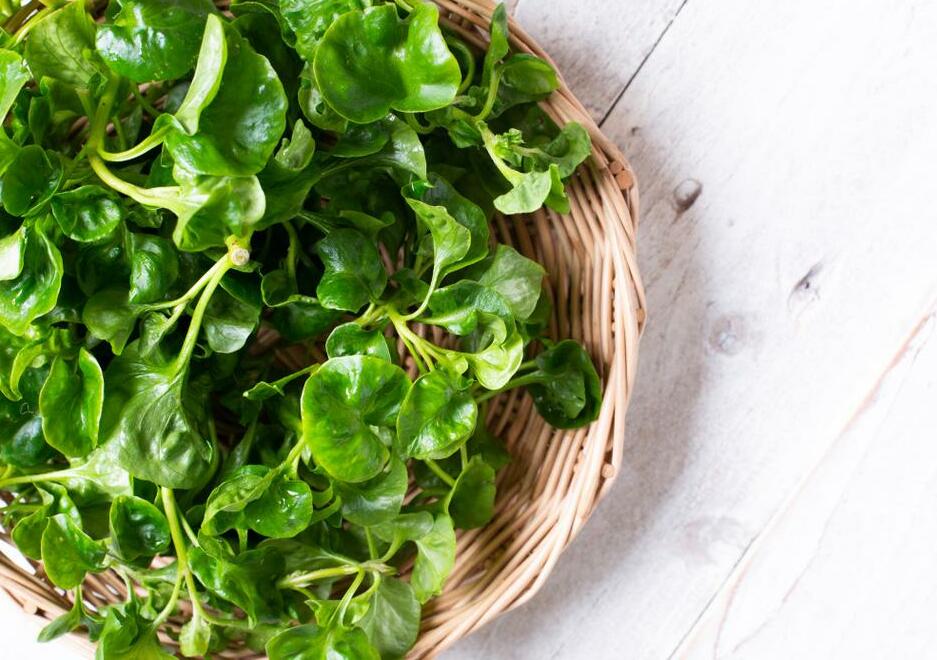
sneezing, wheezing, sore eyes, inflamed nasal passages and sinuses ... all those symptoms of allergy.
There are a number of familiar foods that naturally fight inflammation and help to stabilise mast cells:
• Pineapple contains an enzyme called bromelain, known to fight the inflammation caused by pollen. It also contains vitamin C, which is antihistamine.
• Apples, broccoli, onions, coriander leaves, basil (including holy basil tea) all contain good amounts of quercetin, a type of bioflavonoid which has antiinflammatory properties. However apples are a no-go if you are allergic to birch pollen. In these cases, the human immune system confuses the apple and
the birch pollen allergen, causing the same reactions to the nose, mouth and throat – known as the oral allergy syndrome (an itchy mouth and a swollen tongue).
• Watercress is a cruciferous vegetable with a peppery, tangy taste like rocket. It is considered one of the most nutrient-dense plants commonly available. A study showed that watercress inhibits 60 per cent of all histamines released from mast cells.
• Pomegranates (including the juice) have a sweet but tart taste and are used in both savoury and sweet foods. They contain polyphenols, such as tannins and anthocyanins, and are higher in antioxidants than green tea. A study showed that they act as mast cell stabilisers.
• Vitamin C is a natural antihistamine, and is found in oranges, kiwi, cherries, blackcurrants, peppers, melon, kale, spinach, broccoli, parsley.
• Teas, camomile or nettle. Camomile can help inhibit histamine release and nettle is anti-histamine. Peppermint tea can help clear nasal passages. Camomile is also great as an eye compress to cool swollen, red eyes.
• Turmeric helps prevent mast cell activation, as well as being a great antioxidant.
• Peaches are a potential mast cell inhibitor
• Black cumin seed is an anti-histamine and a
Camomile tea acts as an antihistamine and has antiinflammatory properties. You could also use used and cooled camomile tea bags as an eye compress for relieving itchy, swollen eyes.

powerful anti-oxidant. The oil is great in salad dressing, or taken straight from the spoon.
As well as adding useful foods to your diet, there are natural anti-histamine supplements that may support you in your quest for calm eyes and a clear nose.
• Quercetin can be purchased in supplement form. It can inhibit the production and release of histamine by stabilising mast cells. Some of the better quercetin supplements also add vitamin C and nettle – both natural anti-histamines.
• Zinc may help prevent histamine being released from the mast cells. Zinc is key in immune health.
• Vitamin D is needed for mast cell stability.
• There is increasing evidence that gut health may be implicated in hayfever and other allergies – yet another reason for taking care of our gut. This makes sense, given over 70 per cent of the immune system resides in the gut. The research is
patchy but growing that the probiotic strain LP299V (L-Plantarum) may well help.
Food sensitivities are often an indicator of poor gut health, producing reactions that can manifest themselves as an allergy (or simply make your hayfever symptoms worse). Common foods include gluten, dairy, coffee, yeast, eggs and nuts. However, just as there are antihistamine foods, there are also foods that can generate more histamines than your body can handle, or that contain a chemical that has the ability to release histamines within the body. If you suspect this is the case, then start a food diary and keep a note of your symptoms before you see a health practitioner. You can download a tracker here. Some perfumes and chemicals in bath and beauty products may also make things worse. Pare things back and choose natural products, like coconut oil for a body moisturiser.
You could simply dice some pineapple into your breakfast, but why not make Karen’s own thick breakfast smoothie, topped with her anti-inflammatory granola?
Black cumin seed is an anti-histamine and a powerful anti-oxidant. The oil is great in salad dressing
Rest and recovery are just as important as your fitness and staying active. I know, I can hear you - rest? And recovery? Yes! Adding in a bit of ‘R and R’ and self care is an important part of any fitness routine, staying active or indeed as part of everyday living. As a sports massage therapist as well as a personal trainer I see first hand how important looking after yourself from both ends of the spectrum is.


I occasionally get clients that have never had a sports massage before, and they are always a little unsure as to what the difference is between that and a normal massage.
The massage that you would get as part of a spa treatment is nearly always aimed solely at relaxation and stress relief.
Instead, sports massage is a physical therapy, designed to help correct specific problemsimbalances in soft tissue that have either led to injury, or that could potentially end up as one. Its aim is to target specifically tight or sore muscles in order to prevent injury and to improve performance and functionality (but don’t get me wrong, sports massage therapy can also be beneficial in terms of stress relief!).
There is also a misconception that sports massage is only for... people who do sports. I mean, I know, it is in the name. But without a shadow of a doubt, it can benefit anyone and everyone. Everyone is built to move, and our muscles get used on a daily basis, so of course muscles are going to potentially become tired, tight or dysfunctional.
Think of your body as a car, filled with moving parts that become worn and that require regular maintenance in order to run efficiently. We all get everyday aches and pains, so why would it not benefit everyone?
Another question I get asked regularly is how often? It very much depends on the individual, how active you are and how much the finances will allow. Once a month is generally the rule of thumb I like to follow.
The most important thing to remember is prevention is better than cure!
Massage isn’t necessarily about scented candles, gentle pan pipe music and trying not to fall asleep, explains expert Mel Mitchell
The most common inheritance issues aren’t by people complaining about what they’re been left, explains an expert from Porter Dodson
Many will have seen in the media that disputes about loved one’s estates are increasingly common, making juicy tabloid stories such as “Brother wins £1million inheritance fight after sister told dad he was a criminal” or “Bitter inheritance battle over £2m share of family farm”.
While most publicised cases involve a challenge to a will or a claim for provision from an estate, the majority of our recent enquiries don’t actually involve people unhappy with what they have been left by the deceased.
Instead, more often they relate to being upset with the way the estate is being administered, how long it is taking, or wanting to keep a particular asset. We wanted to dispel a few myths and answer some common questions.
Who can administer an estate?
Where a will has been made, it is the named “executors” who can act. If there isn’t a will, the intestacy rules dictate who can deal with the estate, usually based upon what relatives are left behind. If the job falls to a group, say the children of the deceased, then there is no priority amongst them. Either they have to agree who will act, or it is a case of who gets the grant of probate quickest.
How long does a personal representative (‘PR’) have to administer an estate?
There isn’t any fixed time limit, and it depends on how large and complex the estate is. Many, though, refer to ‘the
executor’s year’.
Essentially, if it hasn’t been completed within 12 months of the grant, questions can start to be asked and action potentially taken.
What are the duties of a PR?
Ultimately, the job of administering an estate is to:
1. sell or encash all the assets, 2. pay off the liabilities, and 3. distribute to the beneficiaries.
It is only if all the beneficiaries agree that something different can happen. Therefore, if someone wants to buy out others’ interest in a property, or keep a family heirloom, then everyone has to agree. If not, then the asset will have to be sold on the open market, and the money then distributed.
The assistance we can provide in these situations include:
1. finding out what is
going on with the estate administration,
2. ensuring the PR is doing their job properly,
3. suing a PR if they have caused a loss to the estate or acted wrongly,
4. applying to remove a PR from the role,
5. appointing an independent professional to ensure the estate is administered properly, usually where executors or PRs can’t play nicely together, and
6. avoiding any unnecessary delay on inheritance being received.
We’re here for you Porter Dodson Solicitors has a designated Contested Wills, Trusts and Estates Team who can provide advice and assistance where an inheritance question or dispute arises.
To find out more, call 01823 625841.




FRIDAY 17TH JUNE, 7:30PM
Join Jerome as he recounts the hilarious story of his boating holiday along the magnificent River Thames with his two companions and Montmorency the dog
THURS 30TH JUNE, 7:30PM

SAT 24TH JUNE, 8PM Tom Robinson first became known in the 1970s as a musician, LGBT activist and with the Tom Robinson Band. Hits include "2 4 6 8 Motorway", "Glad To Be Gay" and "Up Against The Wall" As a broadcaster, he hosts two shows a week on BBC Radio 6 Music.
SAT 25TH JUNE, 7:30PM
The Bootleg Shadows bring their outstanding Shadows Tribute to the The Exchange Theatre for a night of foot tapping classics walking through the Hits from Apache to Riders in The Sky with laughter along the way

Vanity Fair is a roustabout of intrigue, survival and sexual politics This hilarious satire is destined to thrill audiences this summer, as Bristol Old Vic Theatre School’s BA Acting cohort showcase an exuberant production Presented in partnership with Artsreach
£12/ £10 conc £12/ £8 U18s
FRI 1ST JULY, 7:30PM
When you Bon Jovi i bands tha Featuring a "You Give L "Wanted D
live on a pr answered th
SATURDAY 18TH JUNE, 8PM Line Up Announcement: Jamie Moses (Los Pacaminos) will be accompanied by Paul Stewart (The Feeling, Los Pacaminos), Steve Stroud (SAS Band, Bucks Fizz, Eric Burdon) and Woody Oakman (Los Pacaminos) £15 £20
THURS 21ST JULY, 7PM
Drama/ Comedy In 1961, Kempton Bunton, a 60 year old taxi driver, steals Goya's portrait of the Duke of Wellington from the National Gallery in London Starring Jim Broadbent and Helen Mirren £5/ £4 U18s
Sponsored by


June 2022 marks the second anniversary for Trouvaille Gallery, and the very first themed exhibition running from 9th to 24th June. This exhibition features a variety of mediums created by local artists from the Somerset and Dorset areas. Having opened in June 2020, like so many other small businesses the gallery has been affected by the Covid pandemic and the subsequent lockdowns that followed. Gallery owner Marianne Bareham said: “Over the last two years we’ve all been forced to stay local, and many of us have begun to appreciate the beauty that our local areas have to offer, which is why I was thrilled to be able to invite local artists to submit entries for this not to be missed exhibition simply entitled ‘Celebrating the local area’. Local college student Ben Belcher who has joined the gallery on work experience has had invaluable experience helping to organise this exhibition and has work featured within the exhibition also. Visit www.trouvaillegallery.co.uk for opening times and further details.


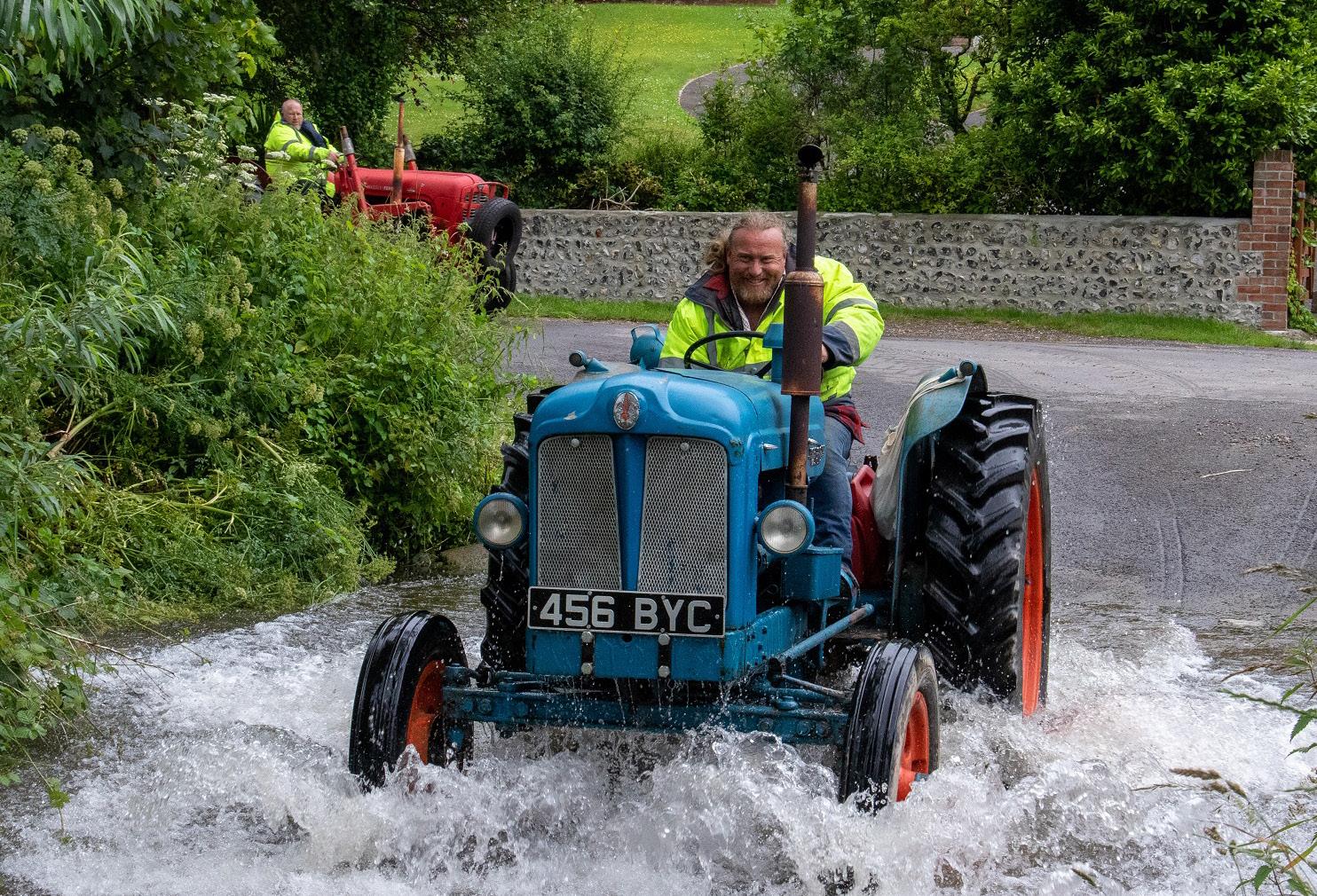
The Dorchester Agricultural Society has announced the return of the Dorset Tractor Run for 2022 on Father’s Day, Sunday 19th June.
The tractor run first took place in 2019, with 99 tractors taking part in the 18-mile route and raising money for First Point Dorset. Nicki Ralph, Chair of Dorchester Agricultural Society said, “the 2019 tractor run was such a success, we are thrilled to announce its return. It’s a marvellous way for the public to admire the long history of our local agricultural community and view vintage tractors as well as modern machinery.”
This year’s nominated charities are the Farming Community Network and the Royal Agricultural Benevolent Institution.
This year’s tractor run will start and finish at Daggers Gate
Grain Store in West Lulworth. Event organisers are expecting more than 100 participants for the event, and spectators are welcome to join at the meeting point at 10am to watch the tractors begin their journey along the Jurassic Coast. Refreshments
will be available for spectators to enjoy and a location for lunch will be advised on the day.
Those interested in participating this year can register online here . Tickets are available at £15 per tractor, per driver.
Cerne Abbas village has been opening some of its private gardens since 1974 and this year they are delighted to return to their traditional June weekend when the roses should be at their best.


The village event will be on the weekend of the 18th and 19th June, and it is expected that more than 25 gardens will be open, all within easy walking distance of the free car park (open from 1pm-8pm). All garden hosts make a special point of being available to talk about their gardens and their homes.
The proceeds will be split equally between two local charities, Cerne Valley Youth Trust, and Dorchester Youth Theatre. A few gardens can accommodate wheelchairs, and most gardens welcome well-behaved dogs on leads – these will be identified on the maps which may be
downloaded from the website one week in advance of the date (www.cerneabbasopengardens. org.uk). Teas will be available in St Mary’s church, and the renowned plant stall will be back in the village square. The villagers very much look forward to you visiting.
Cerne Abbas Open Gardenms weekend is Saturday 18th and Sunday 19th June. Gardens are open from 2pm to 6pm. Entry to all gardens £7, (accompanied children free).
THURSDAY


Time
Time
3.00pm

